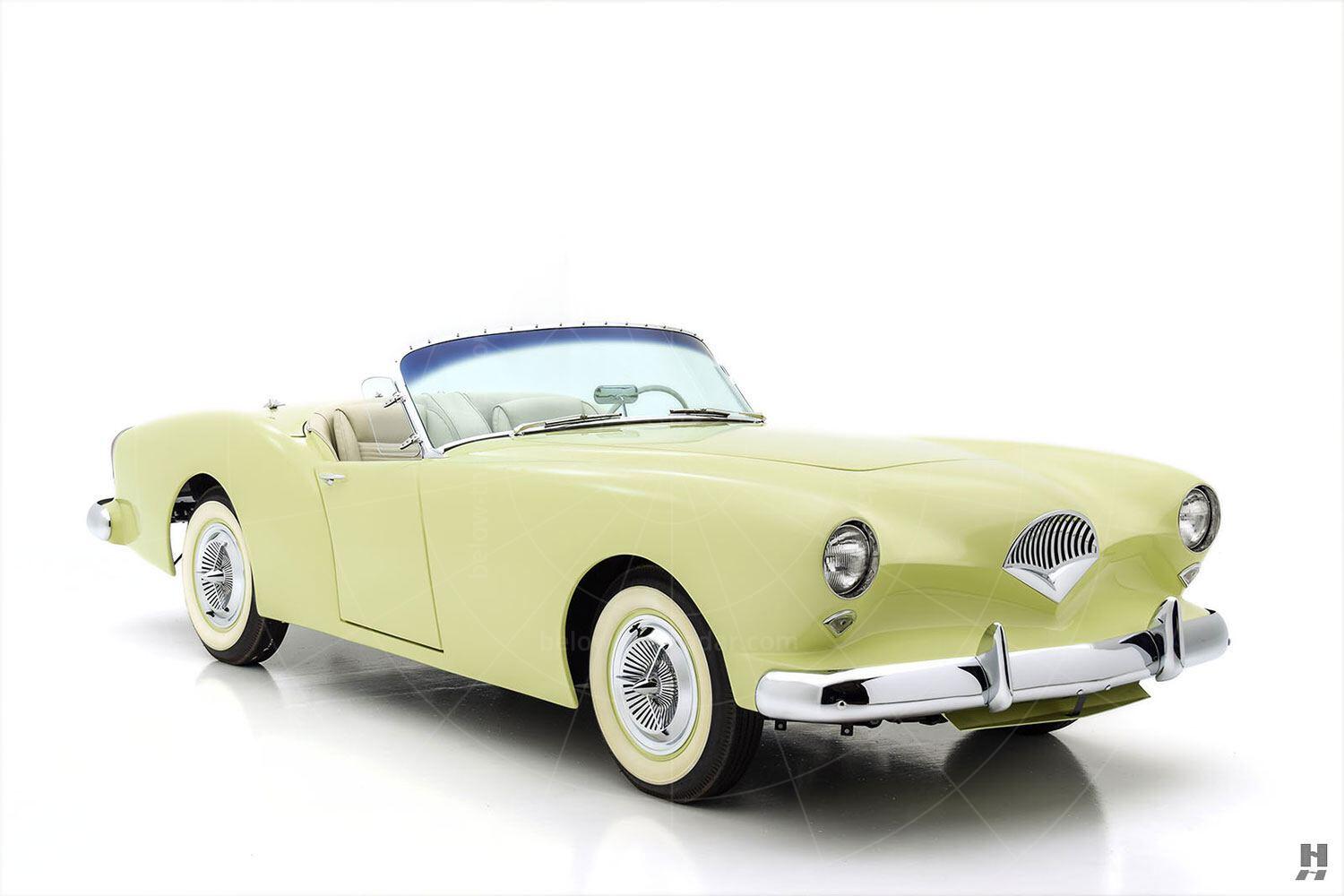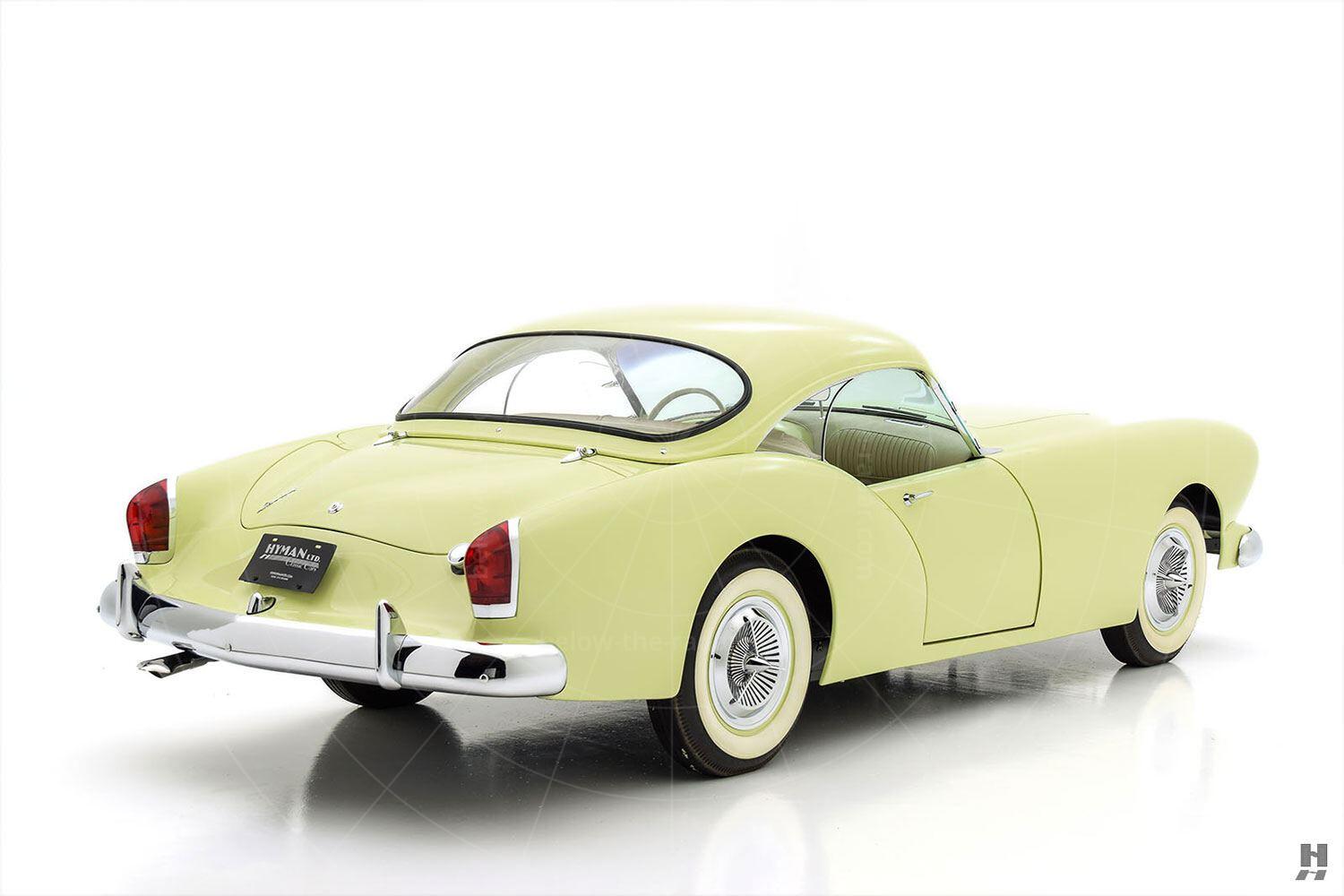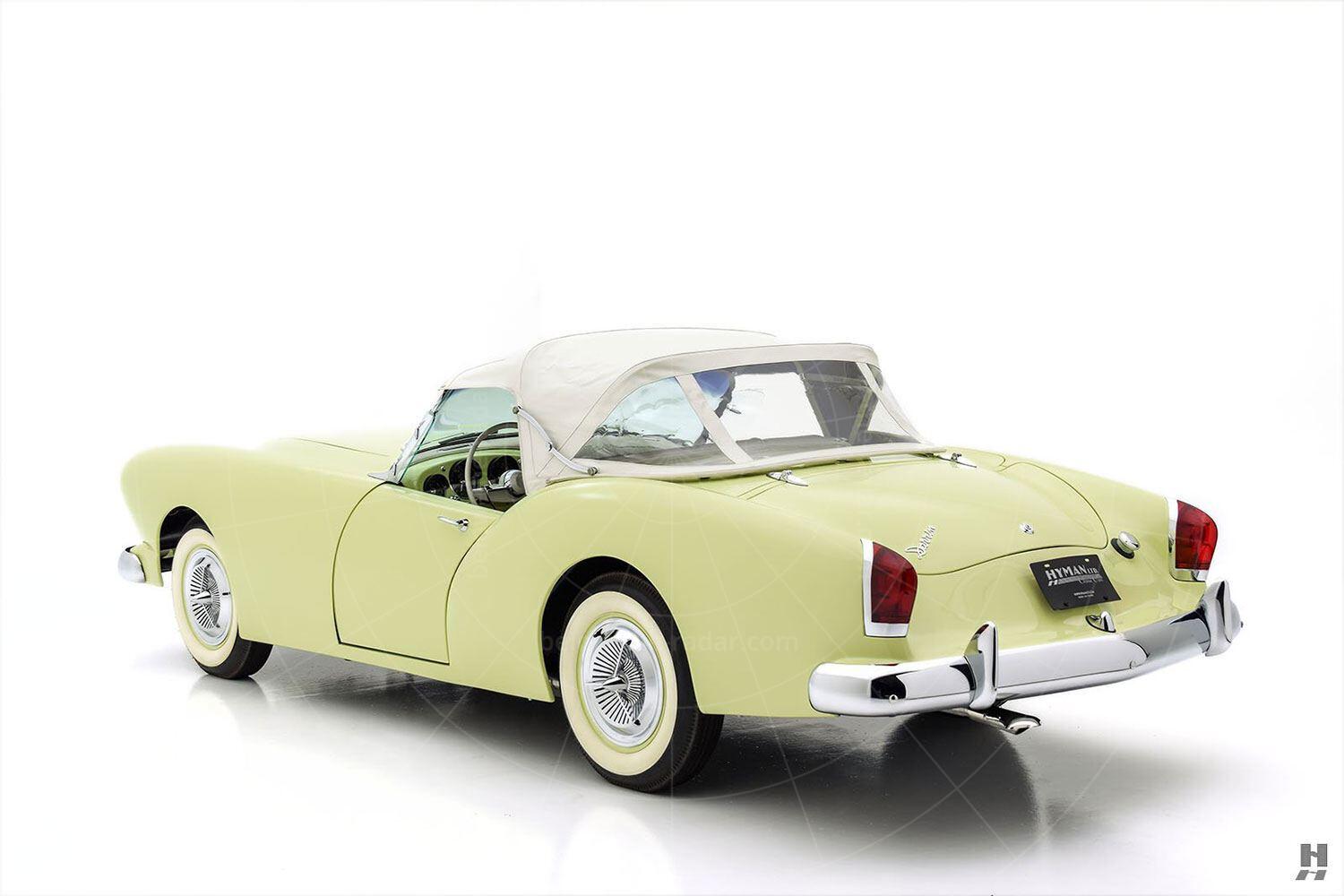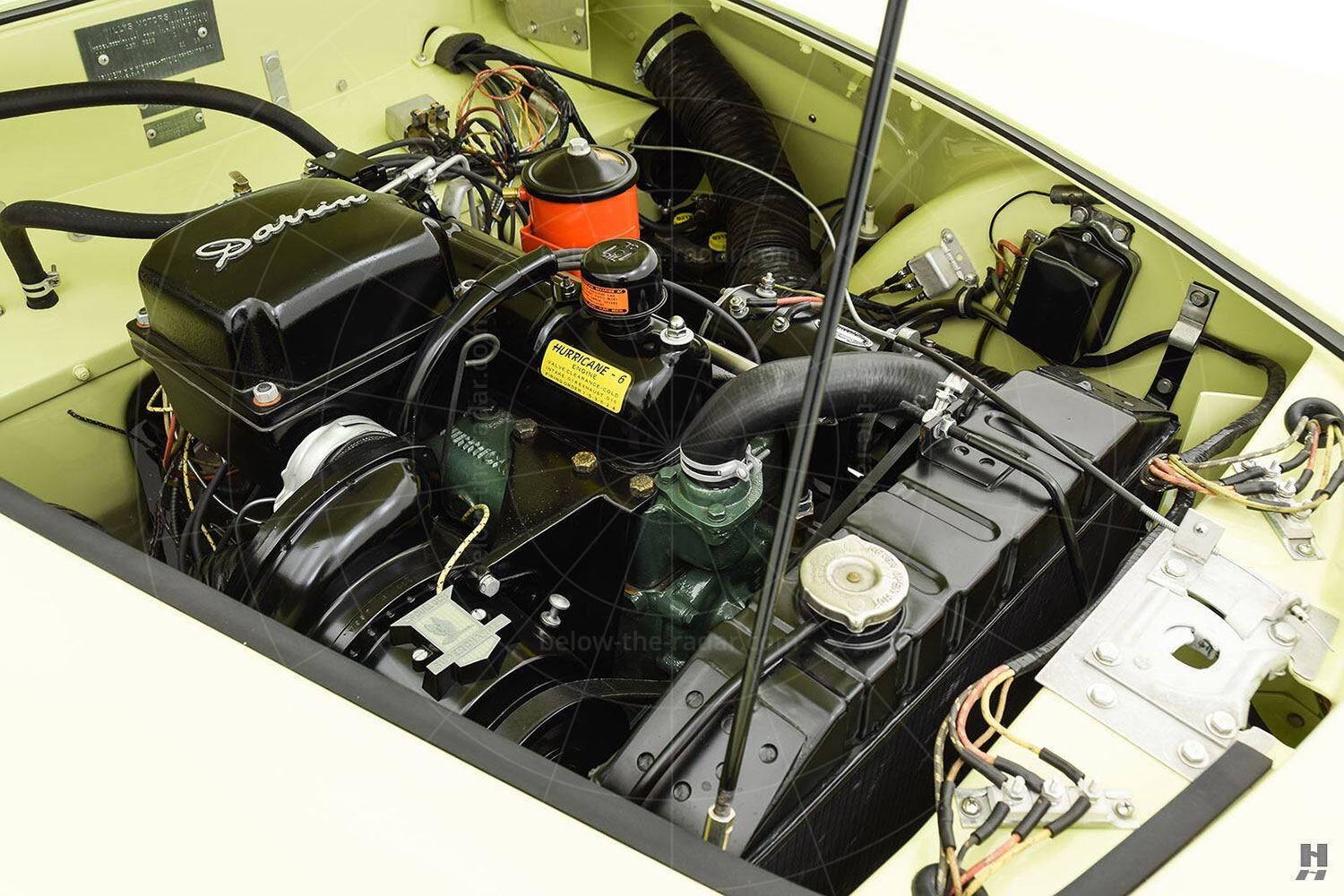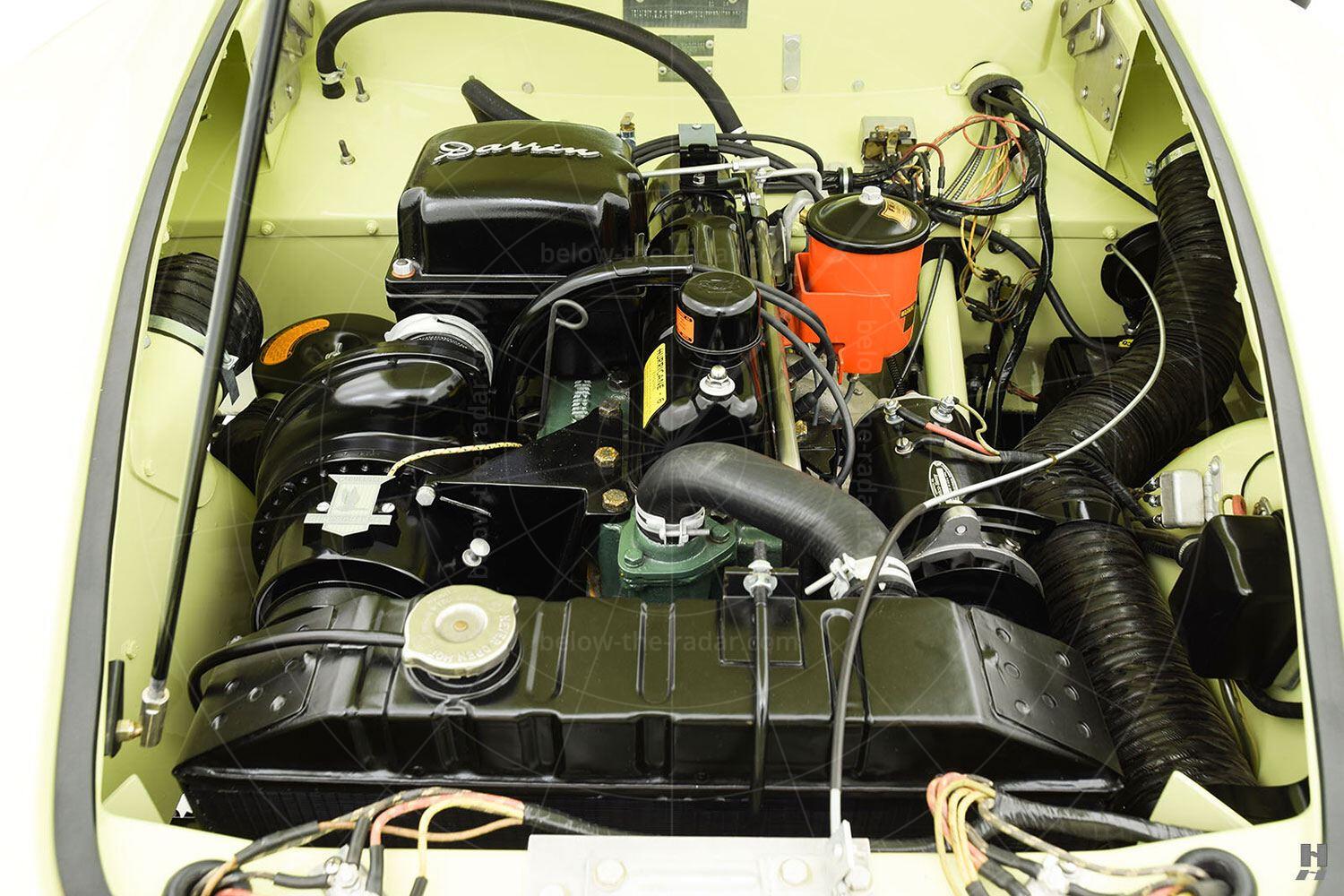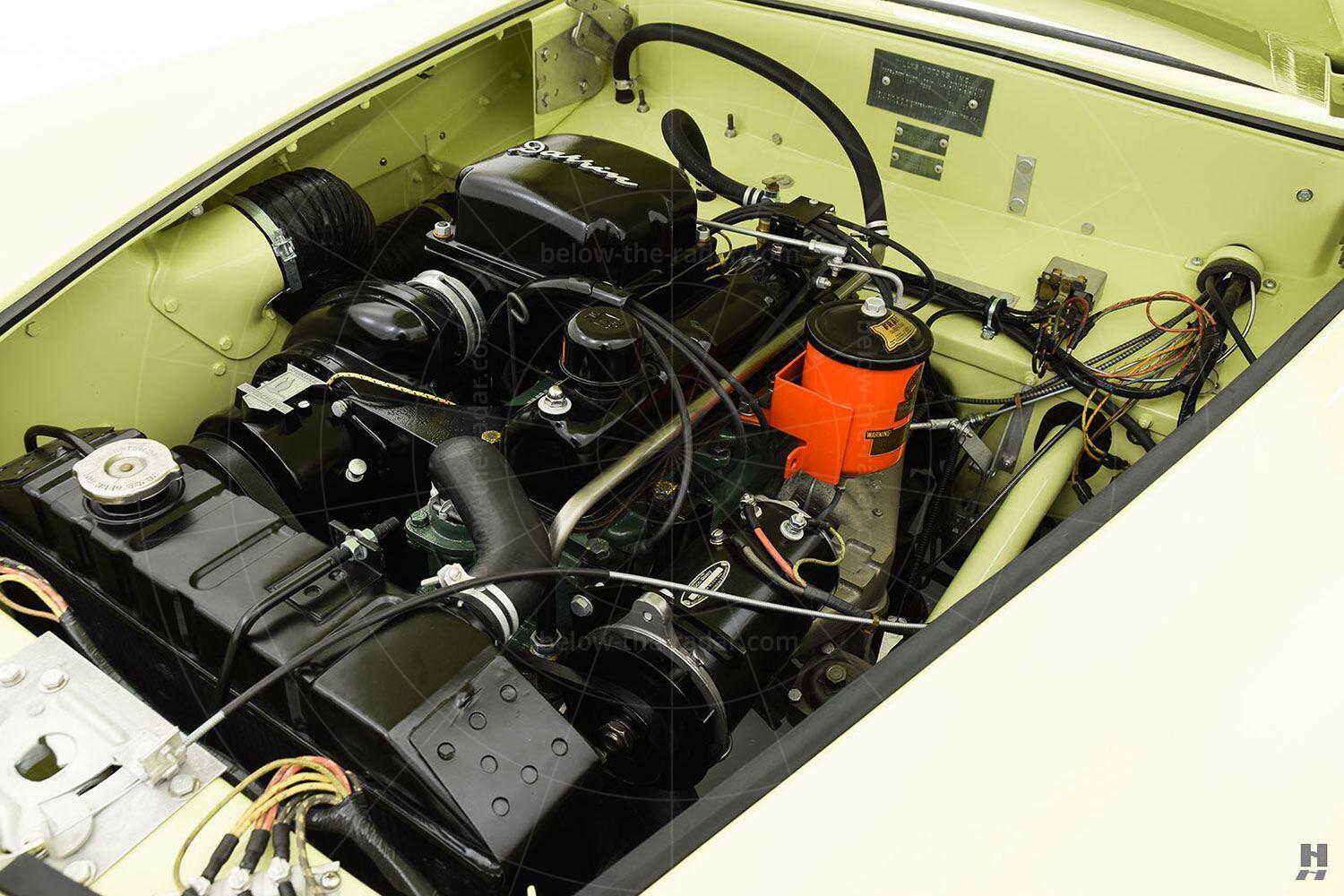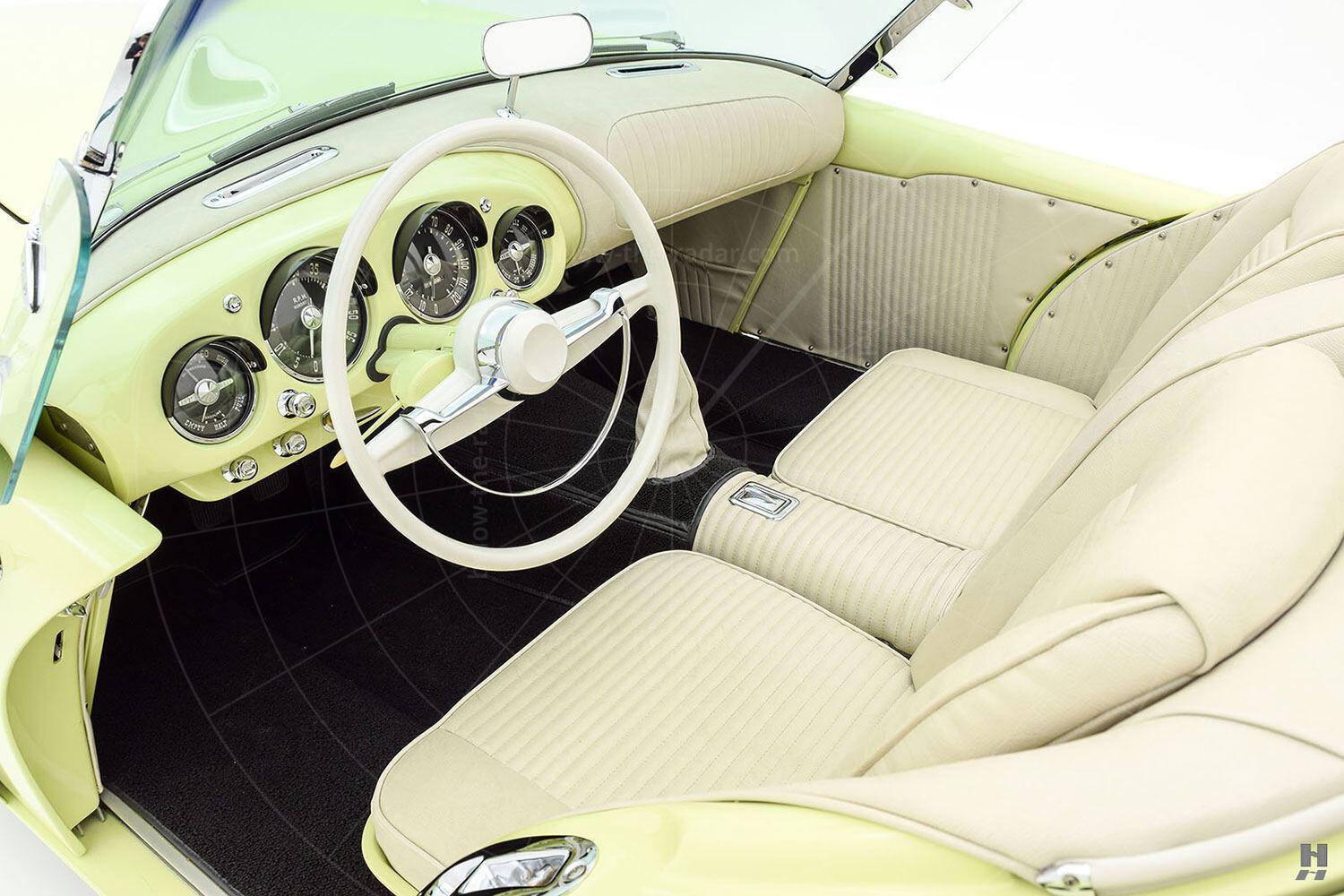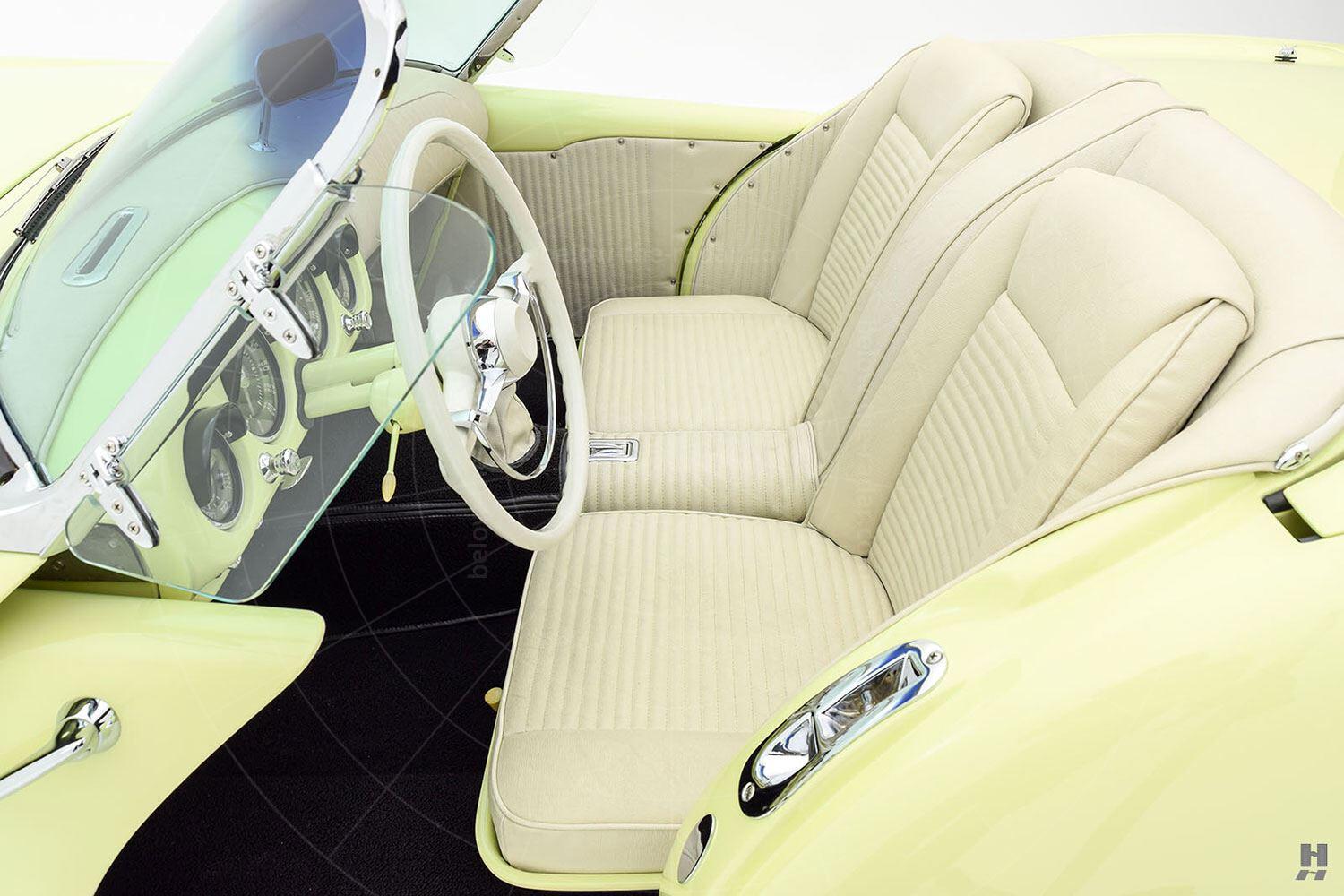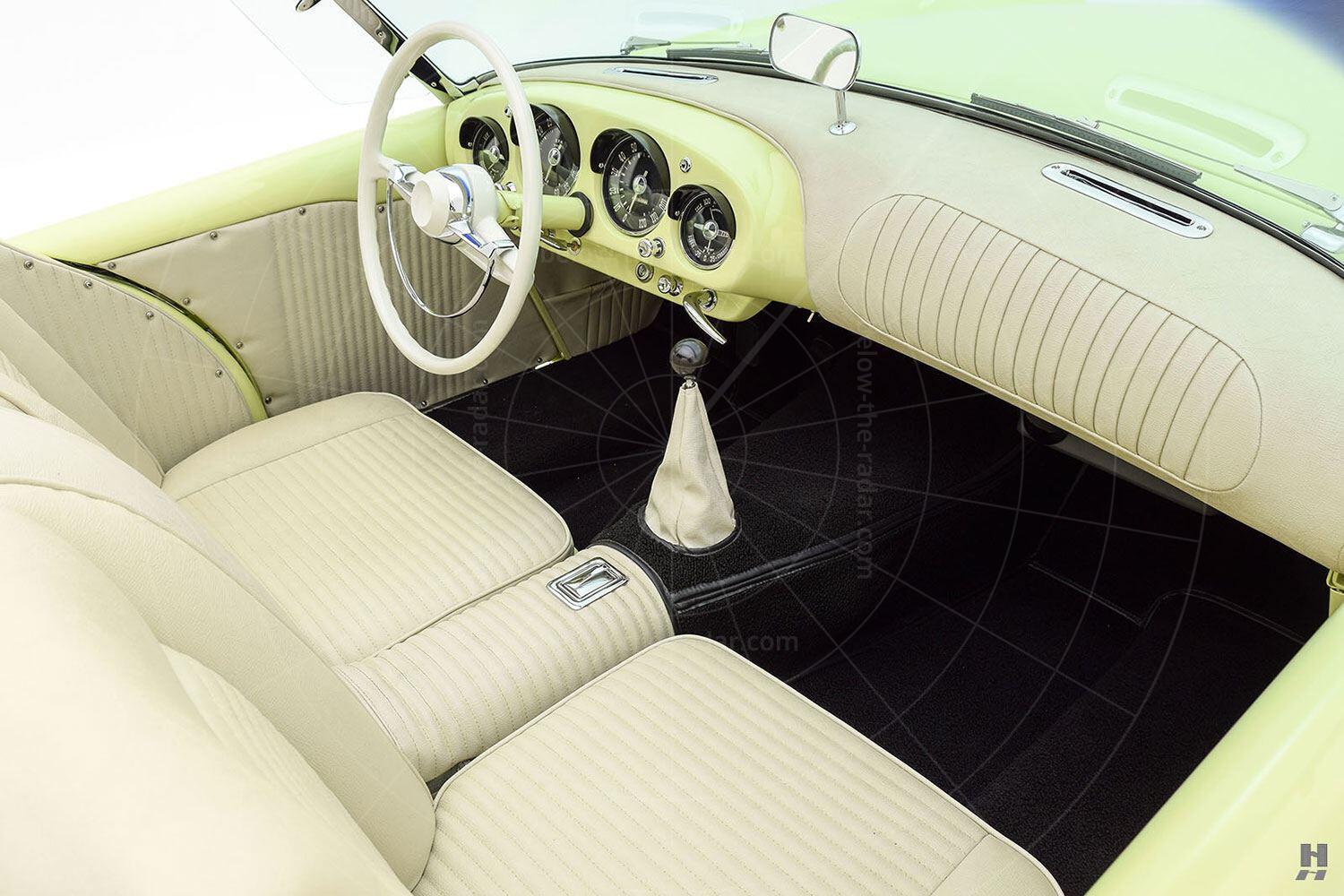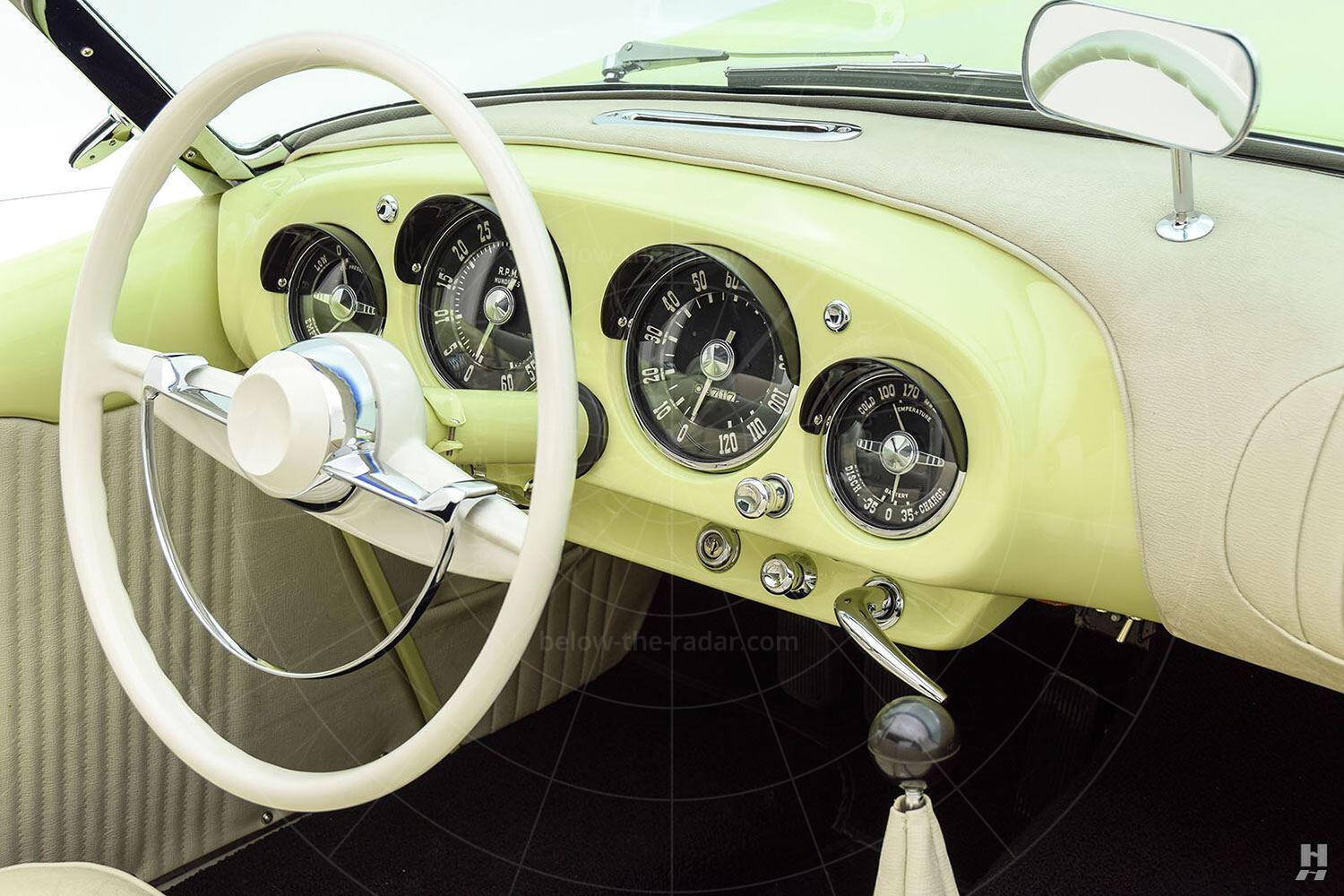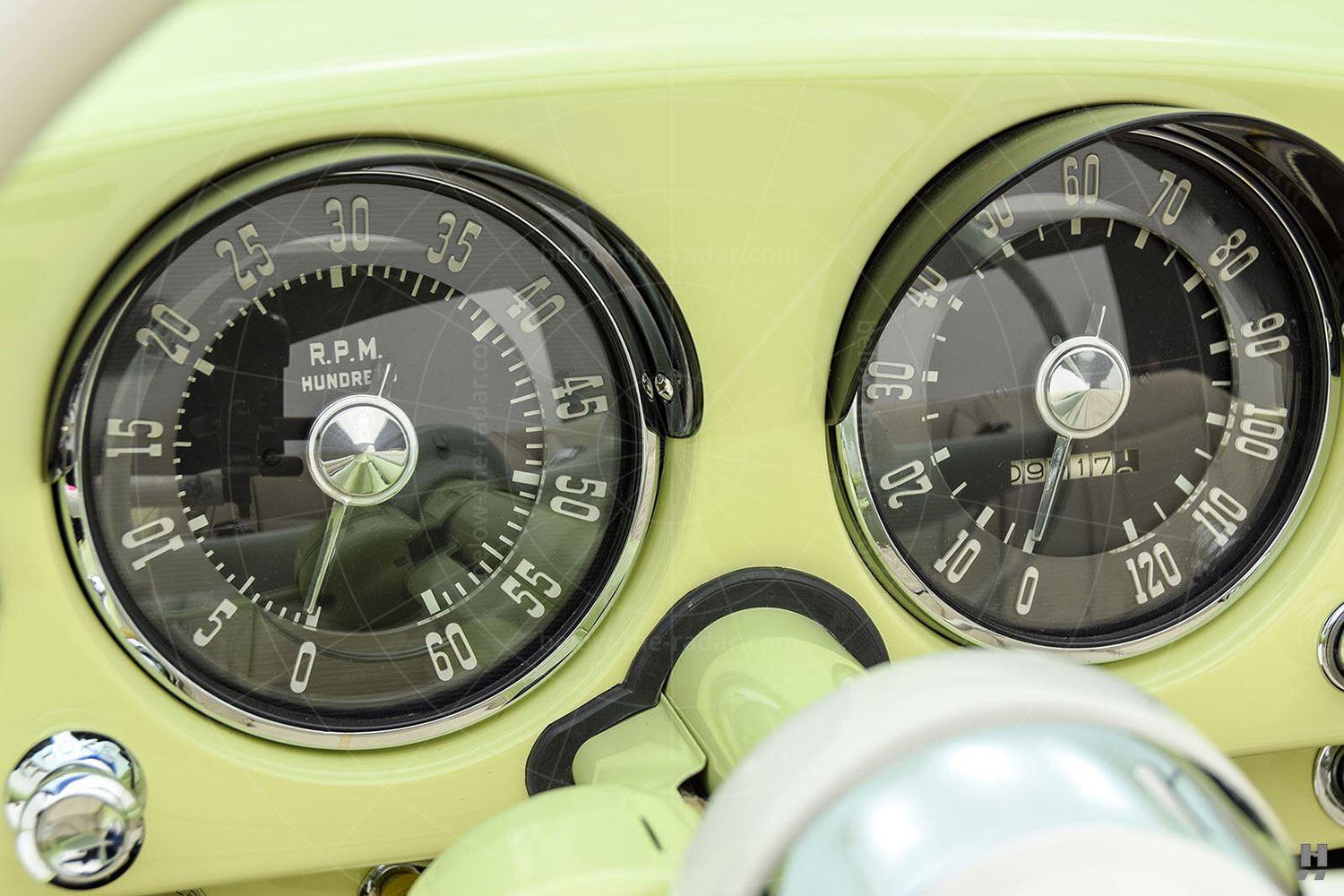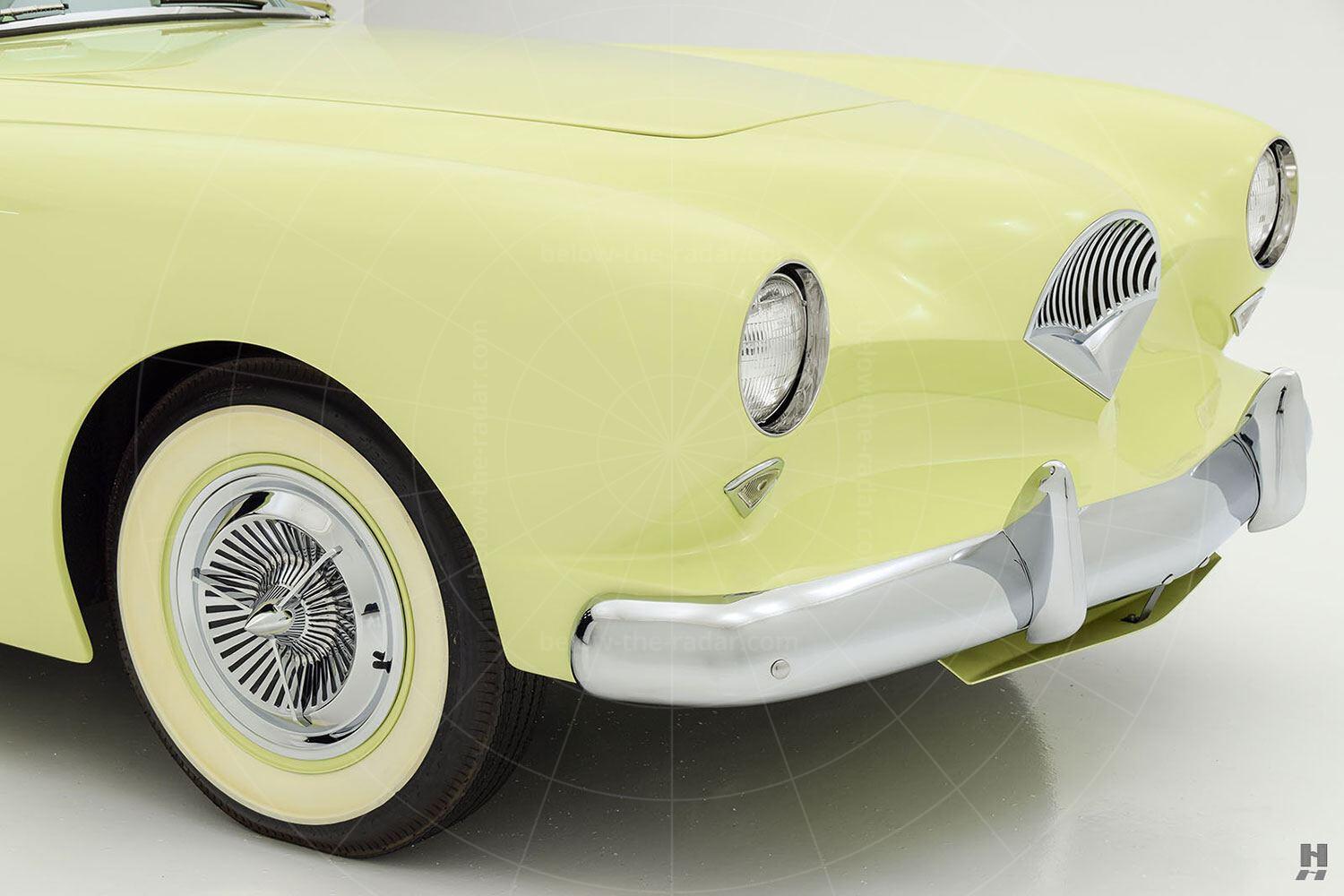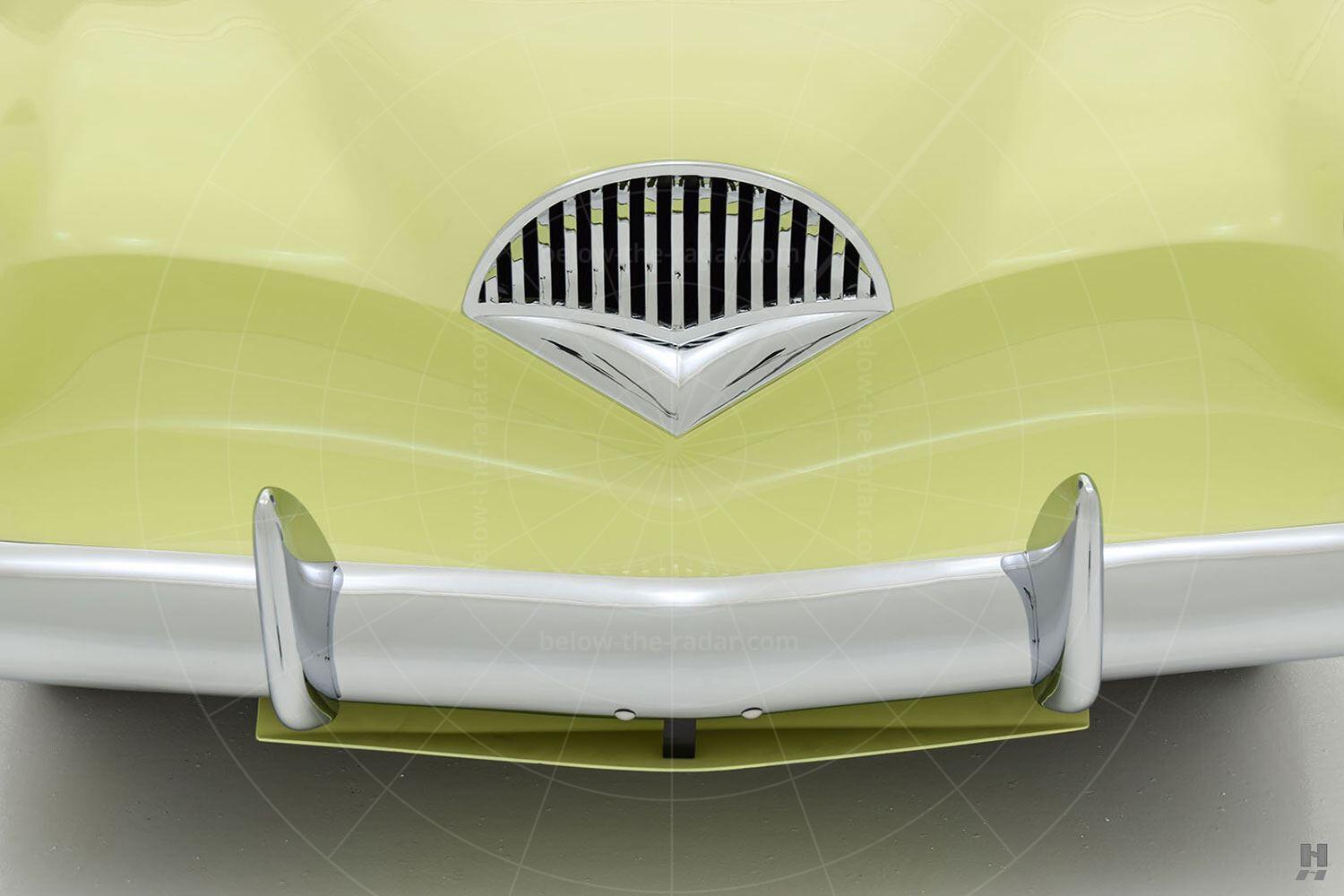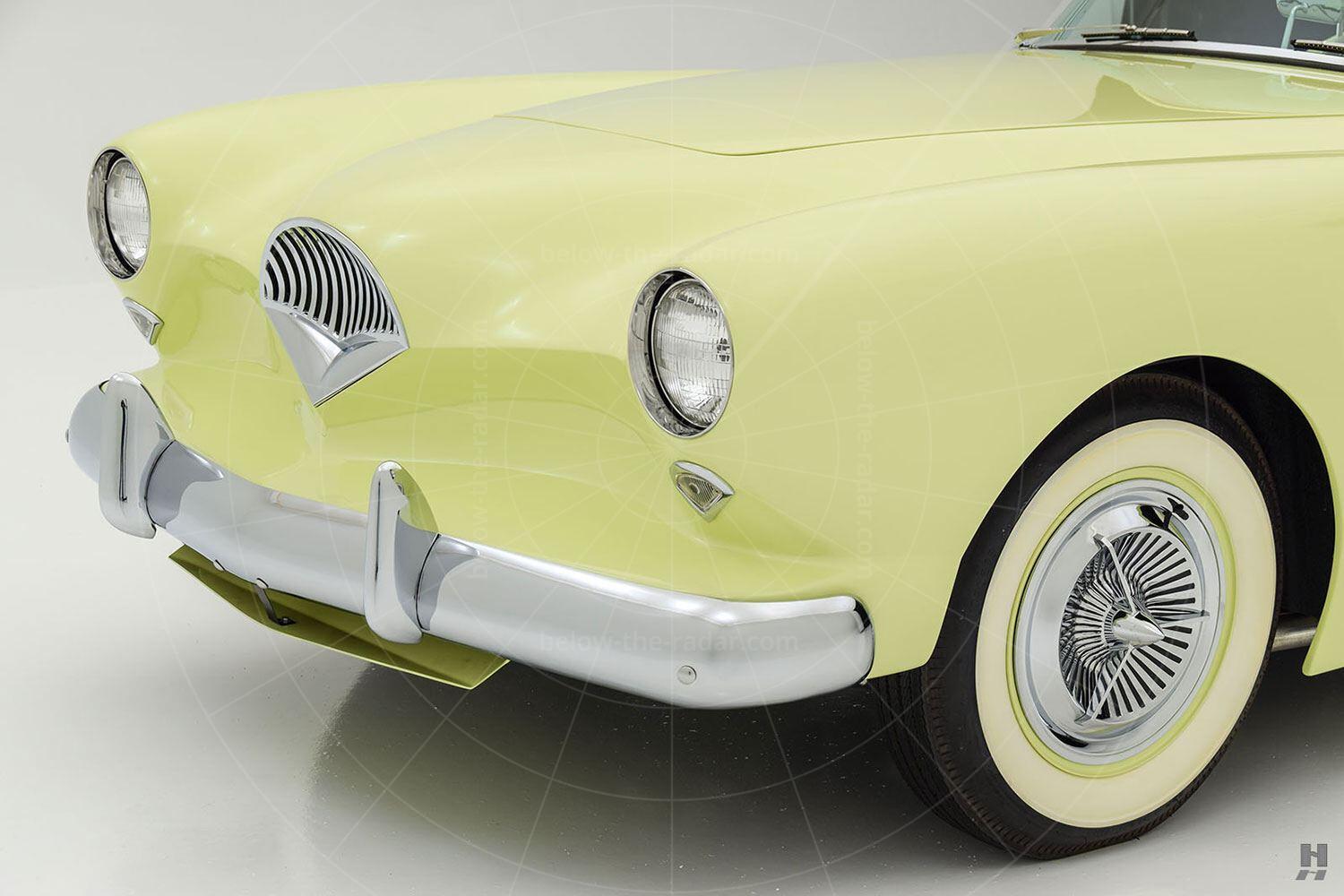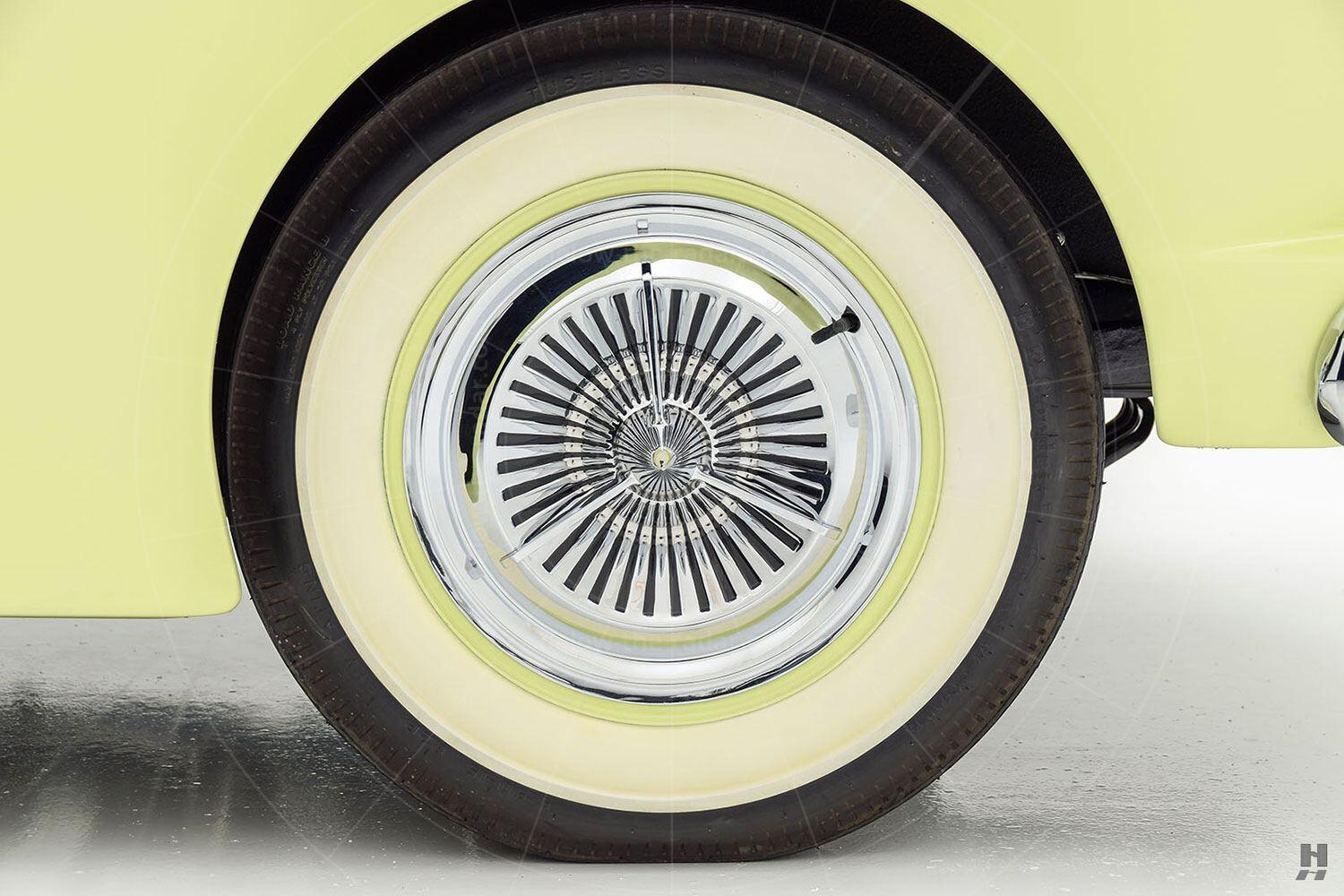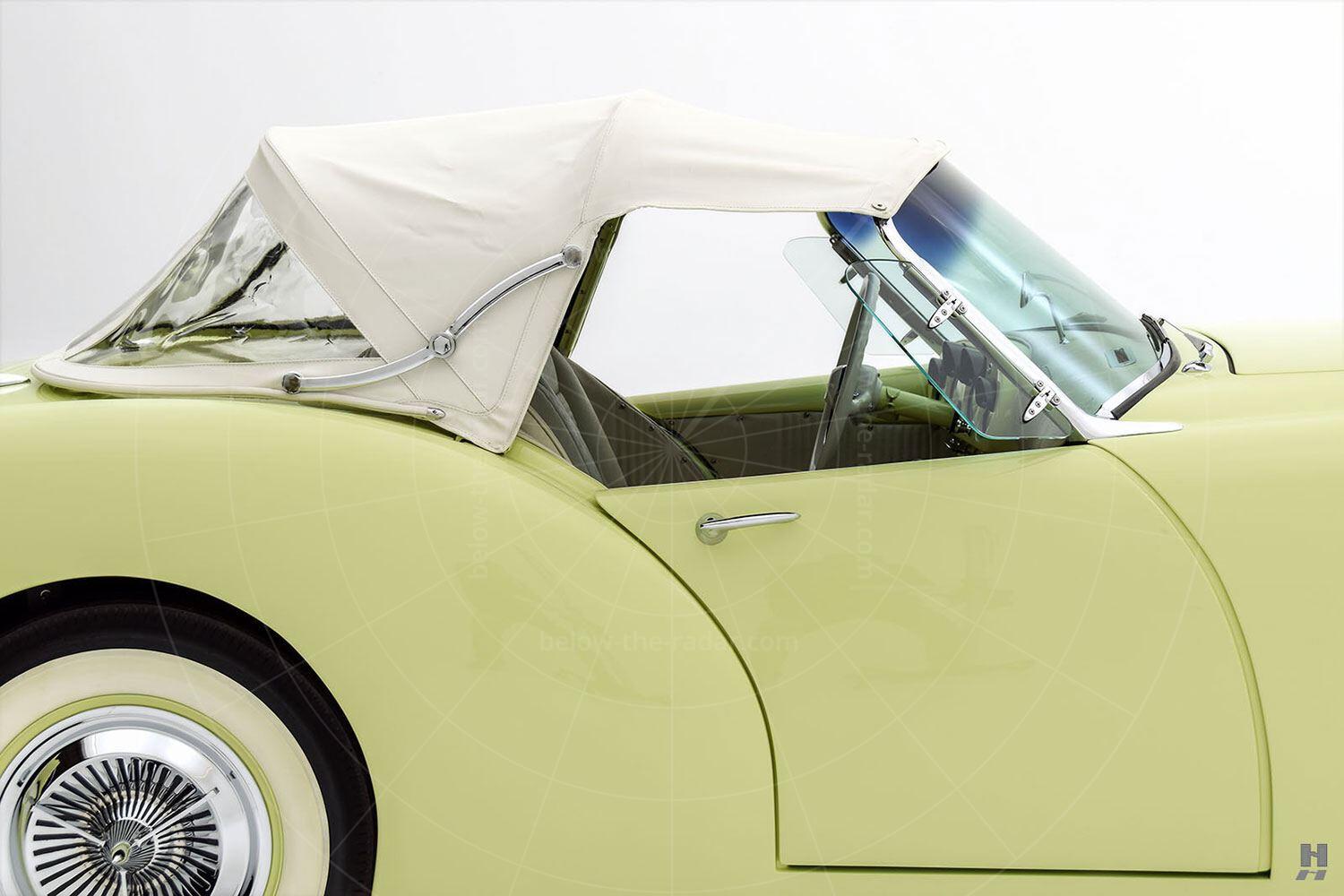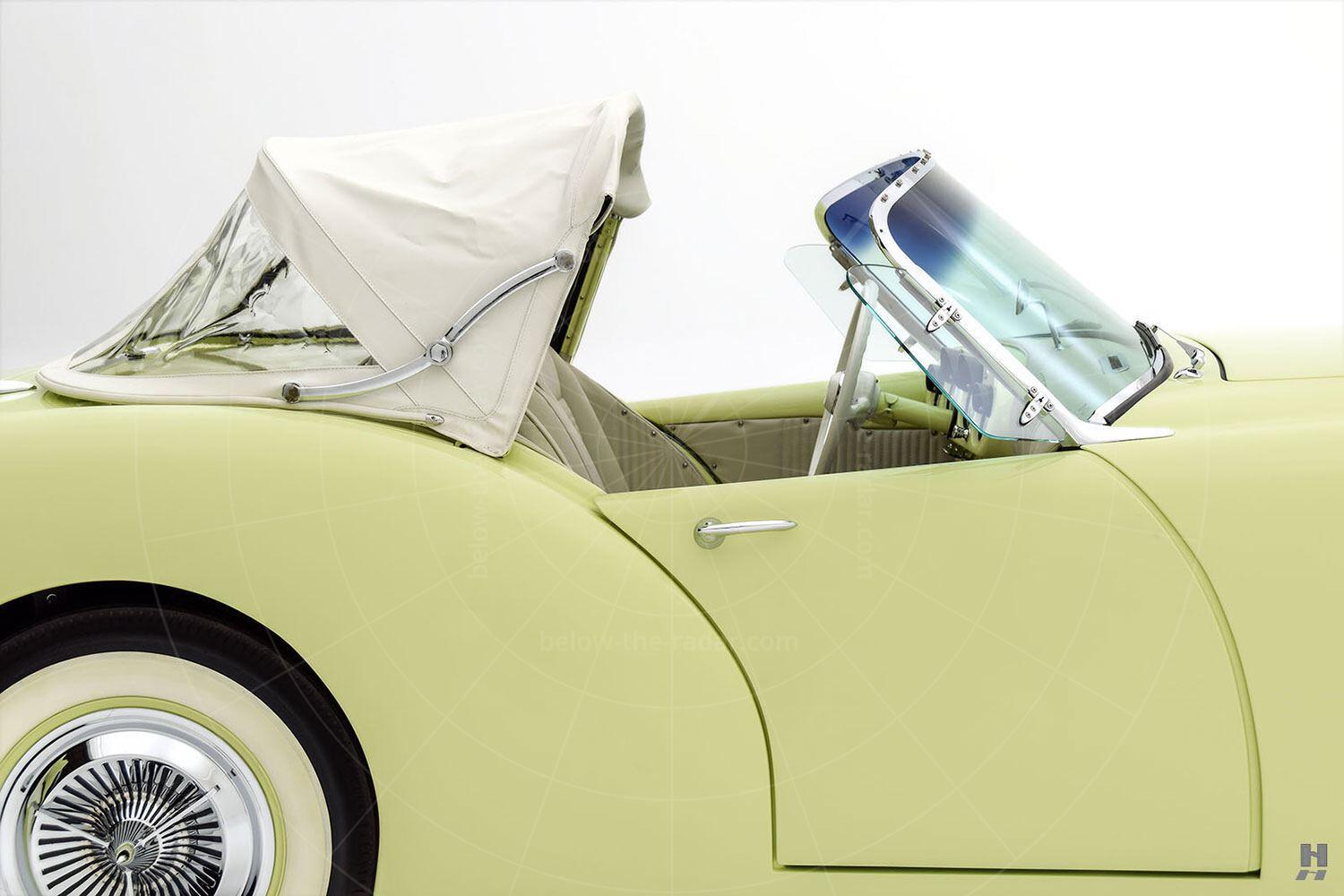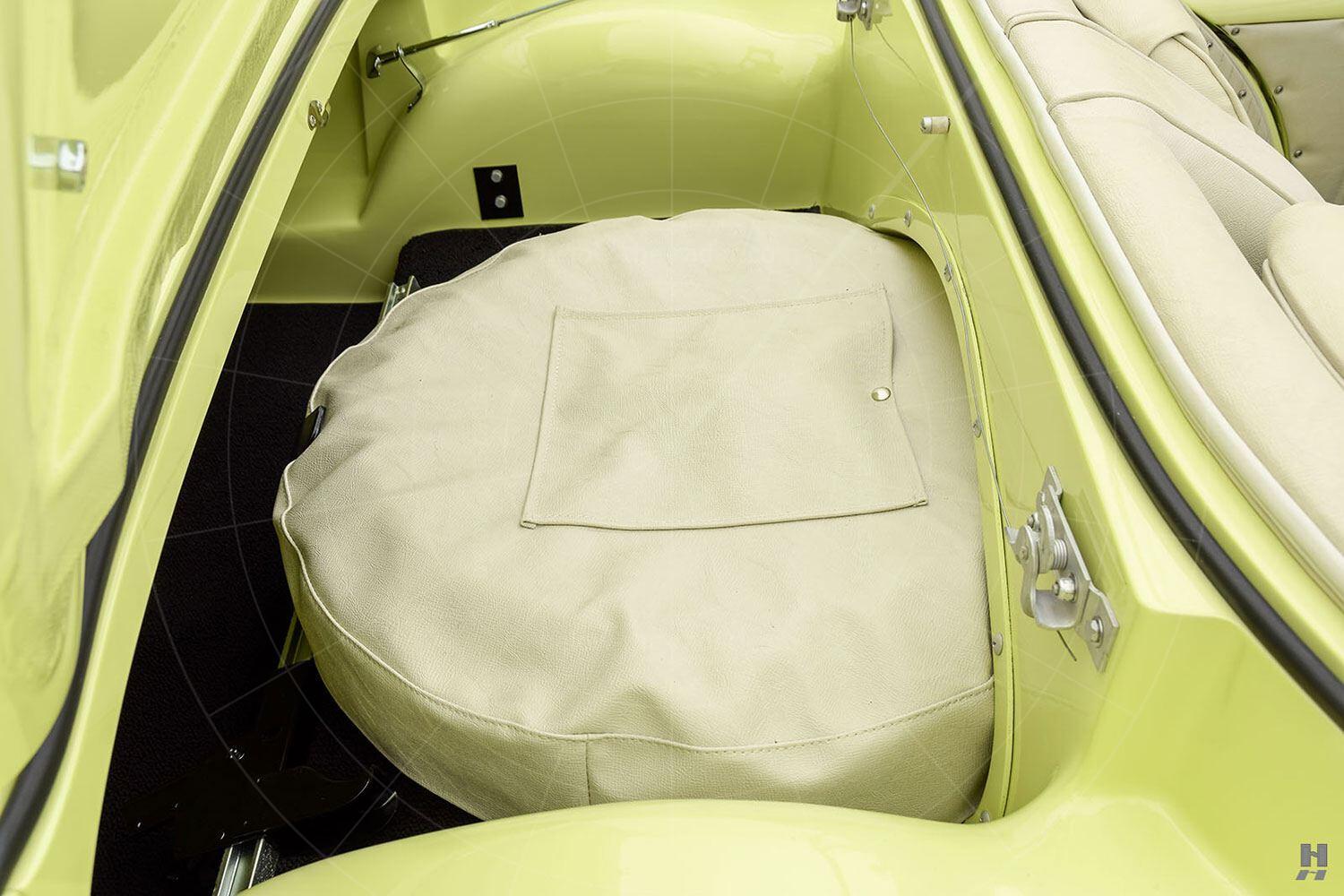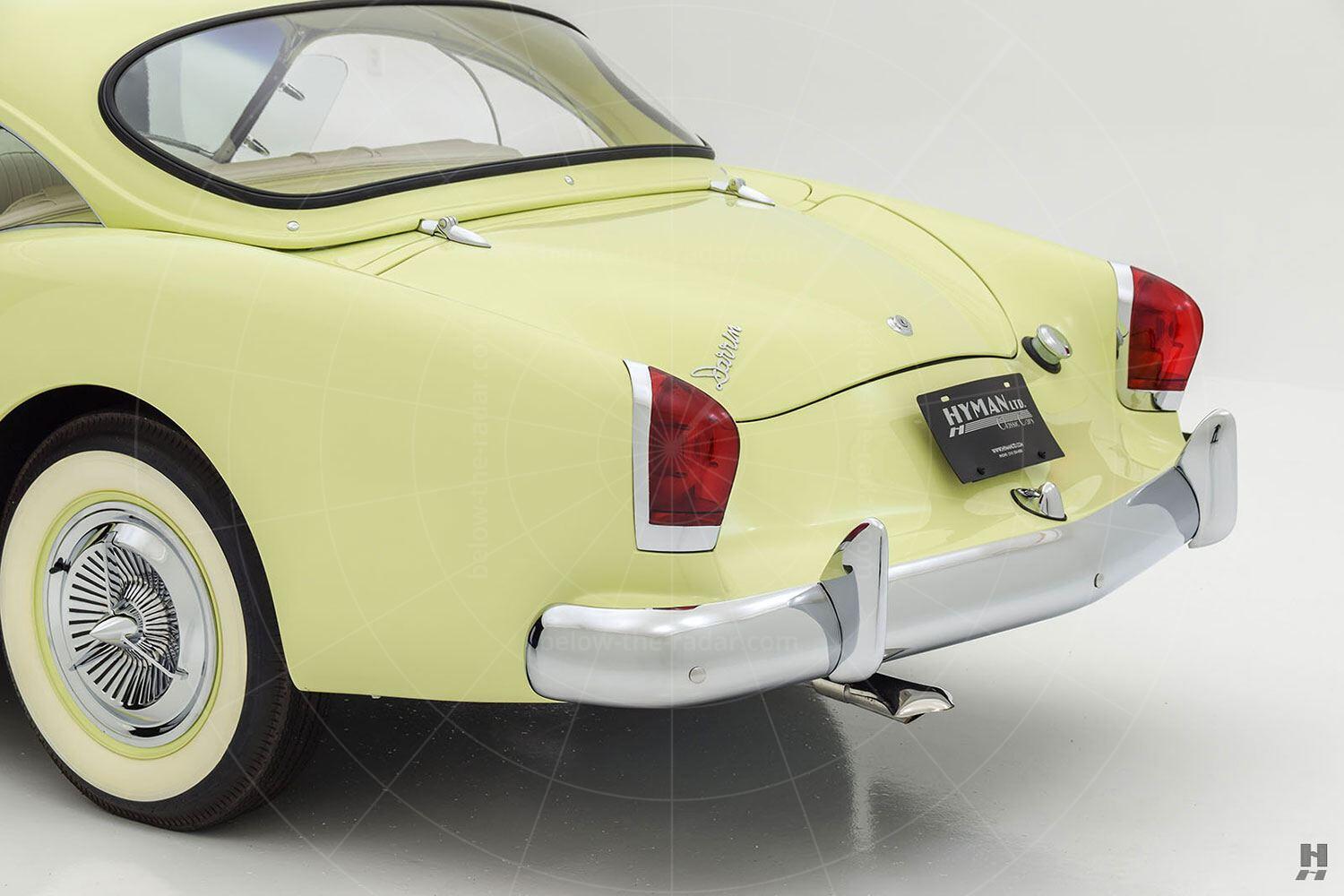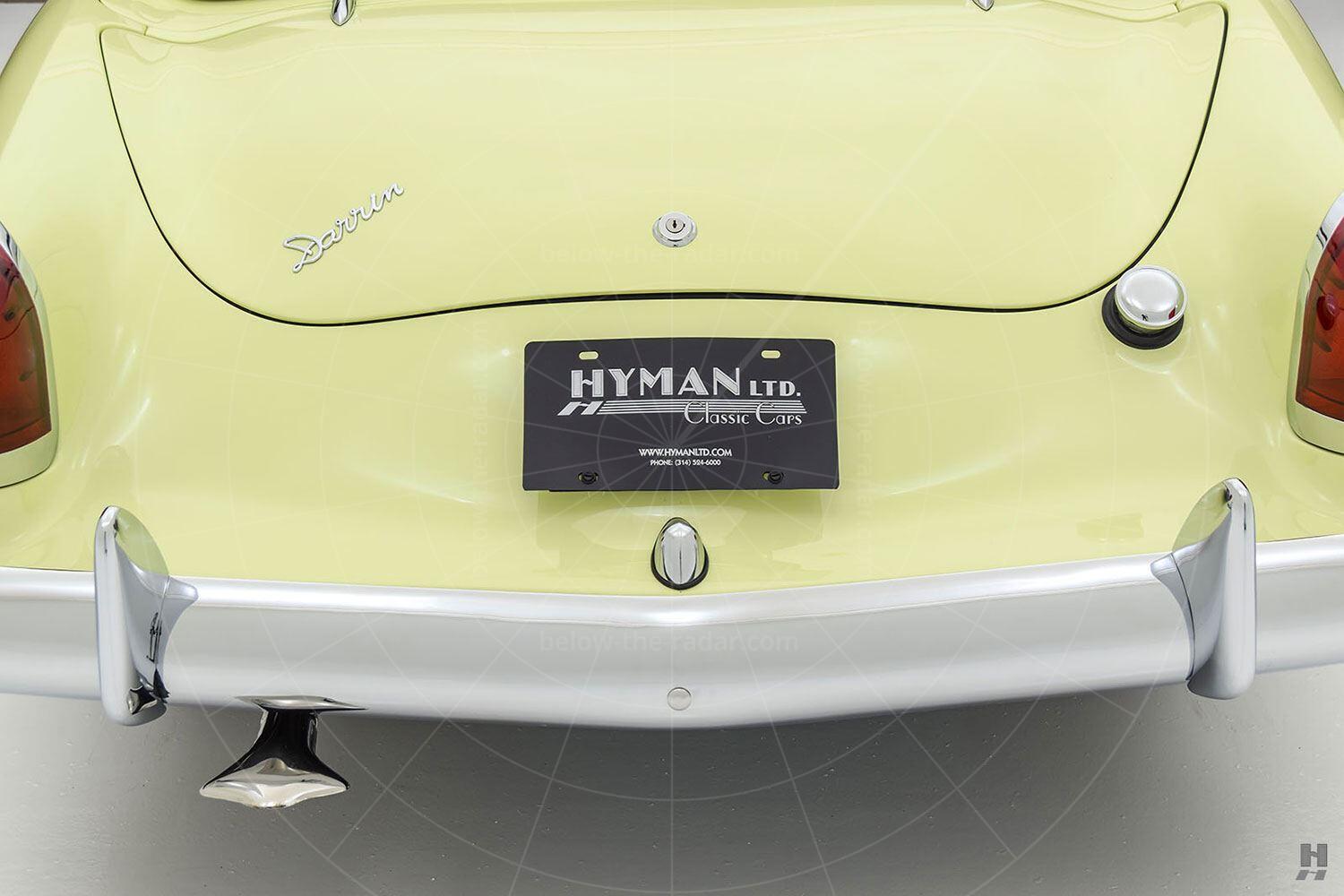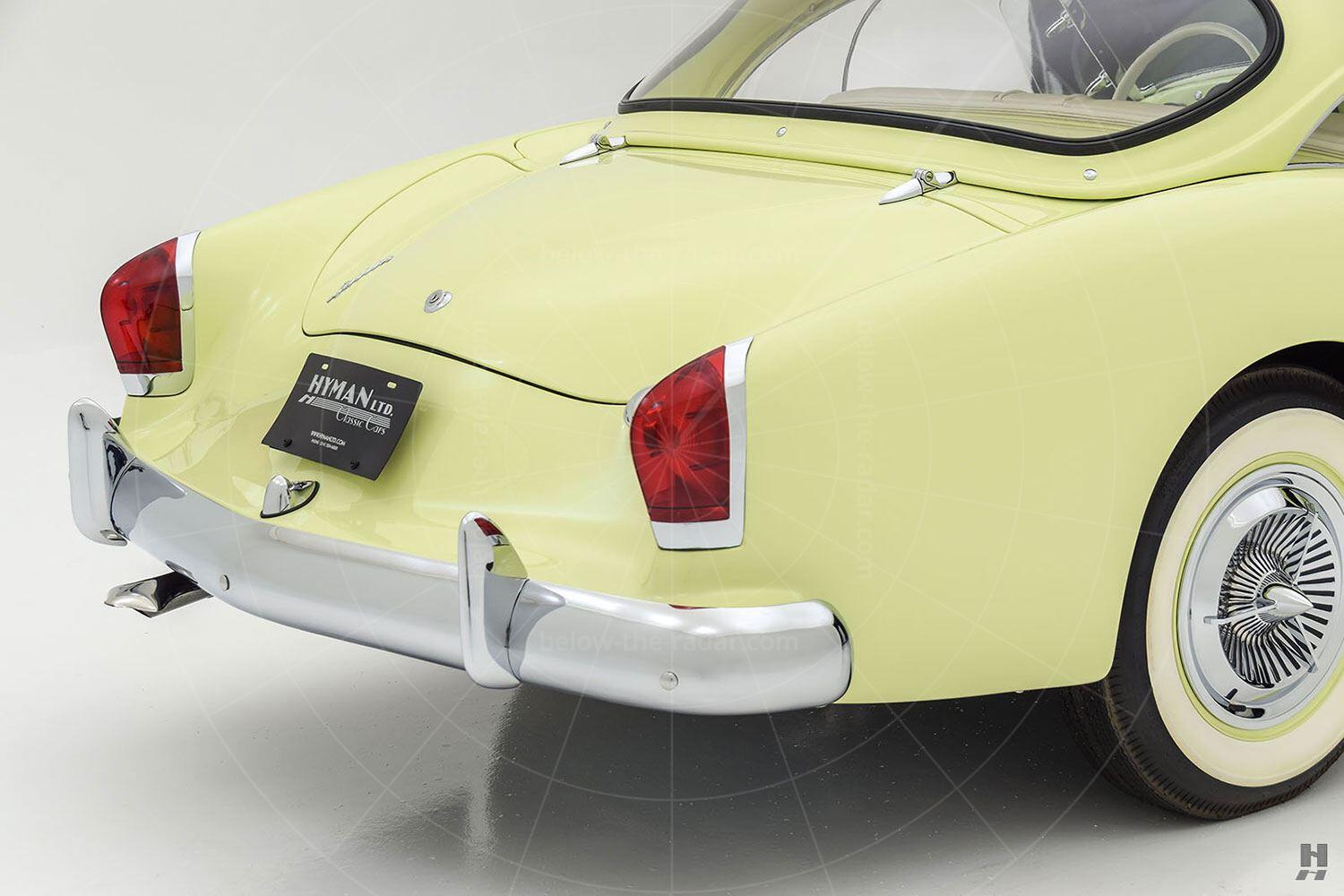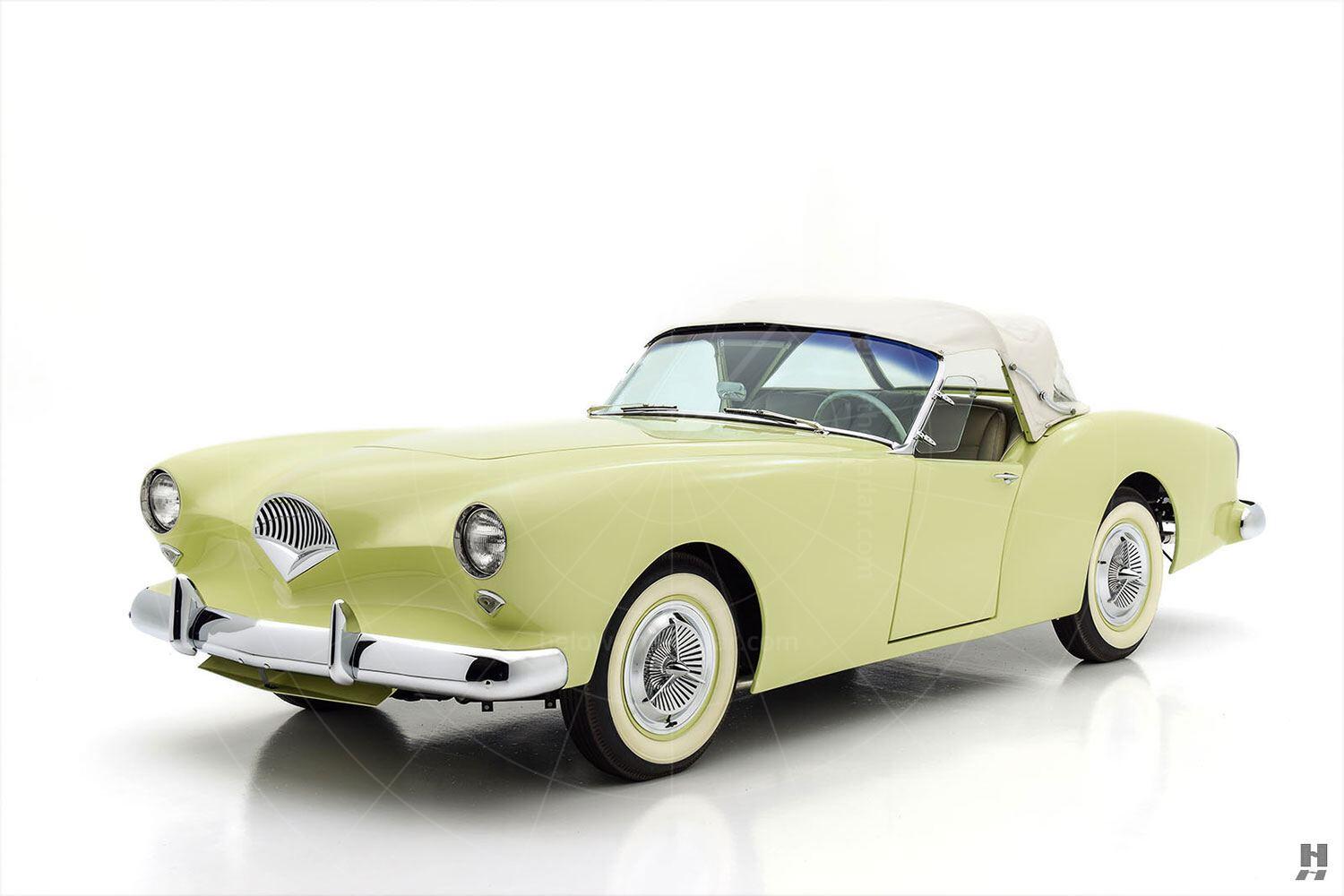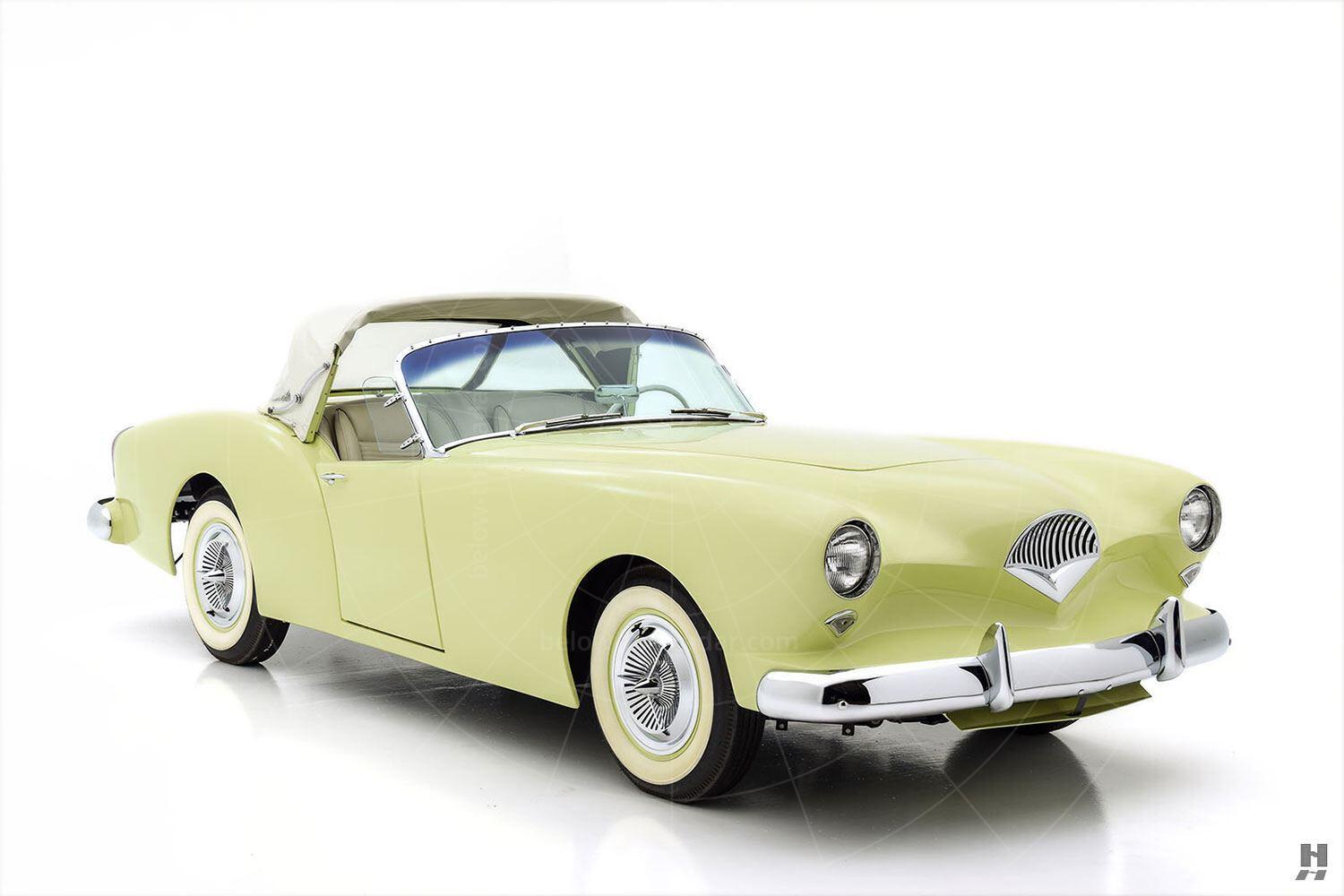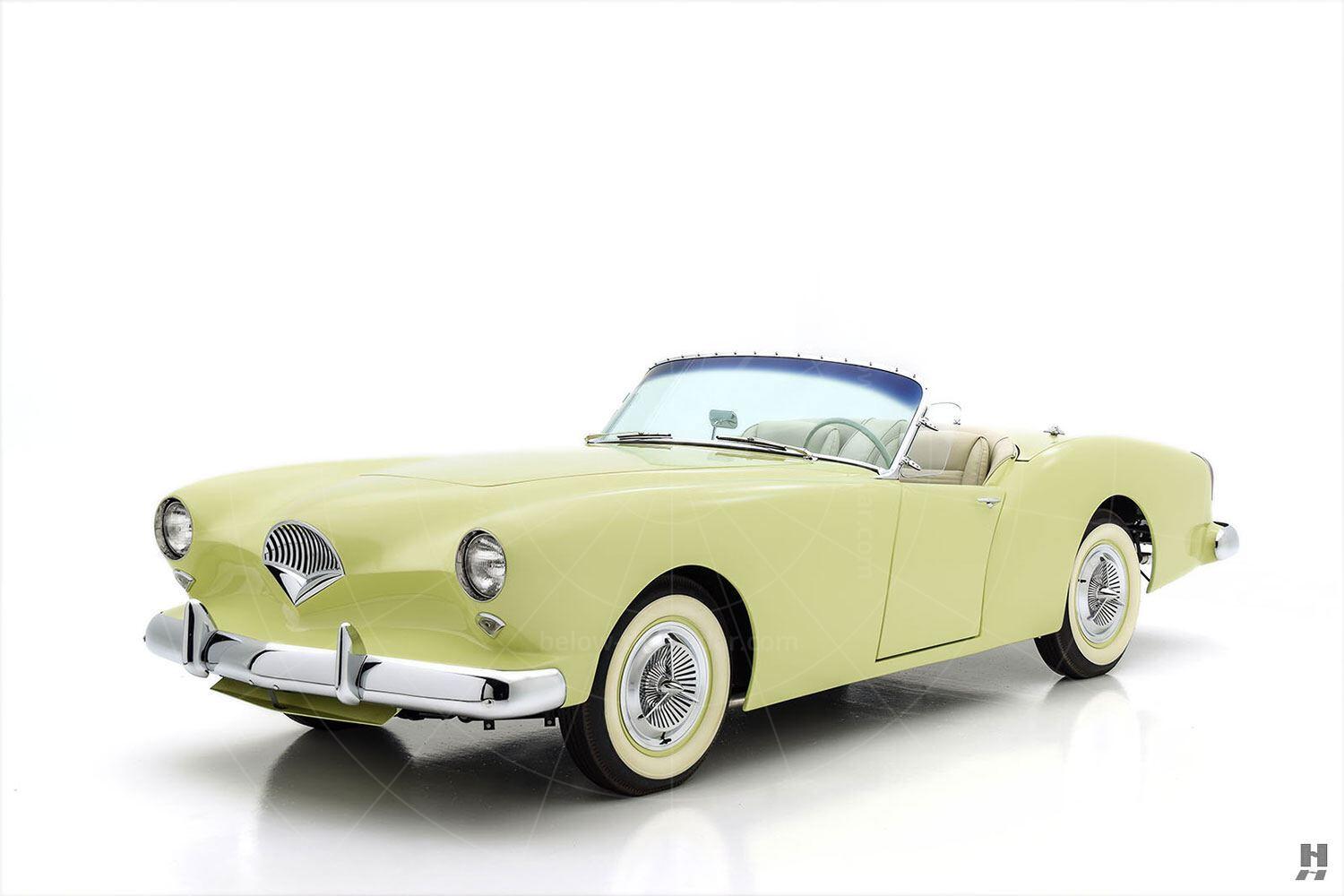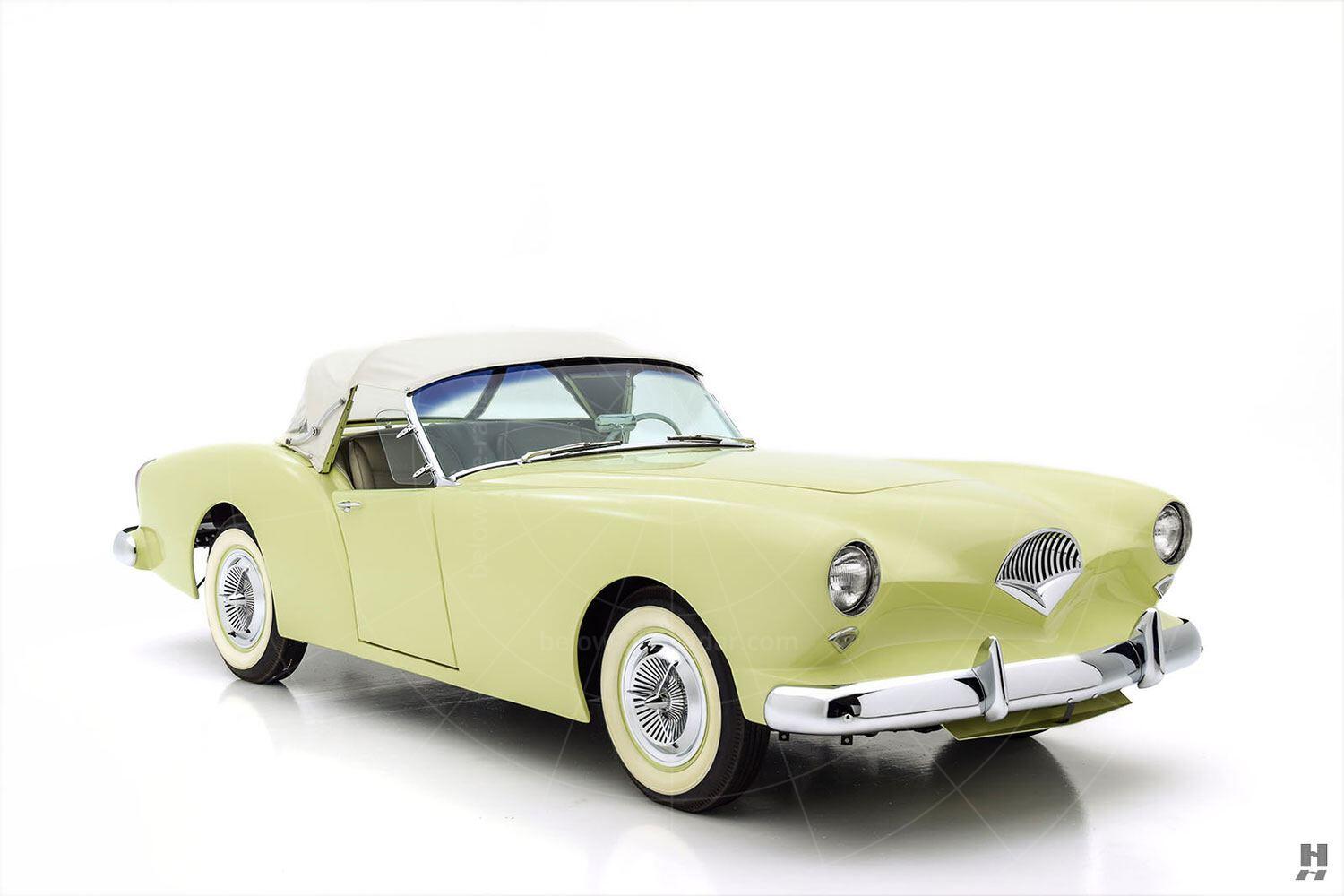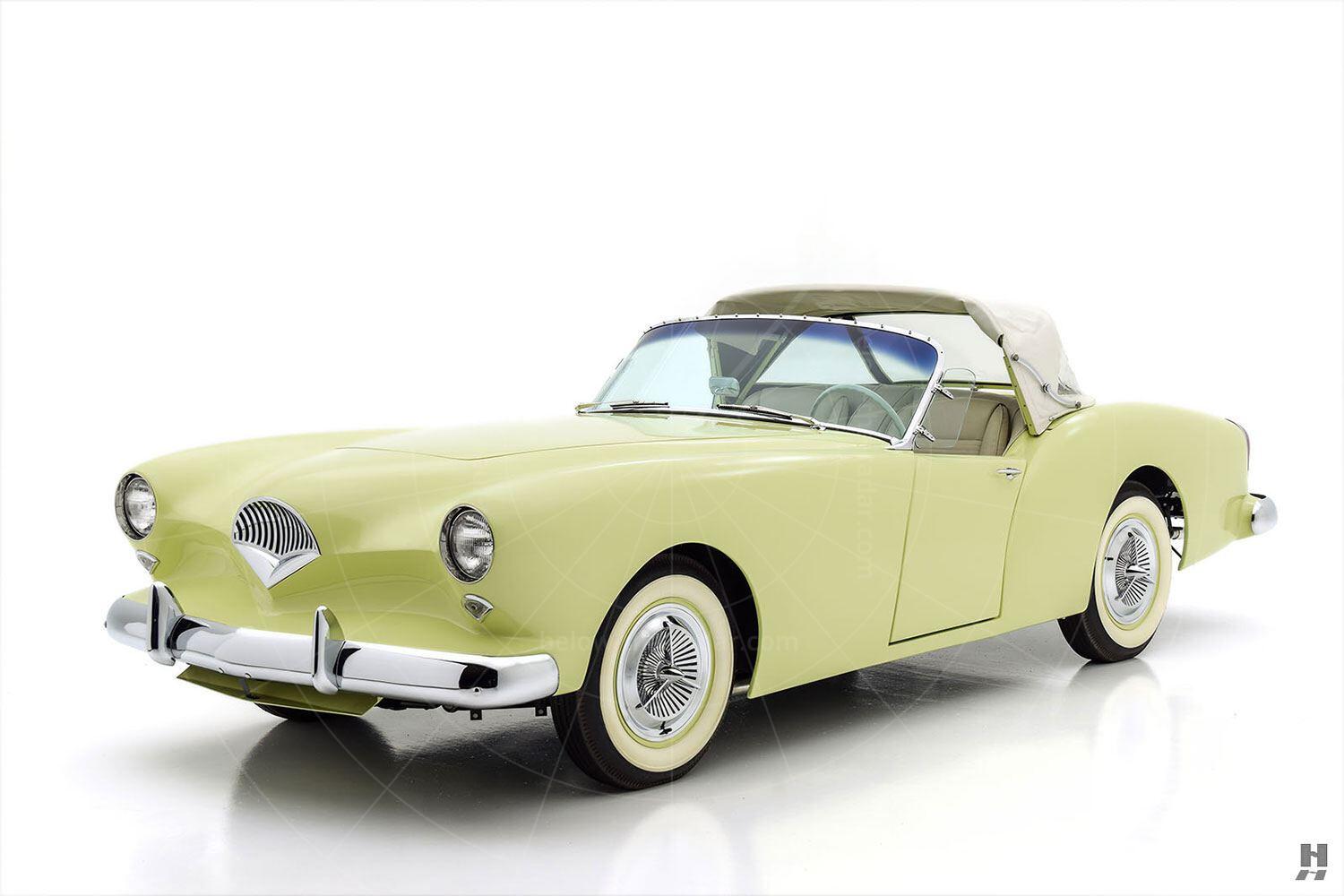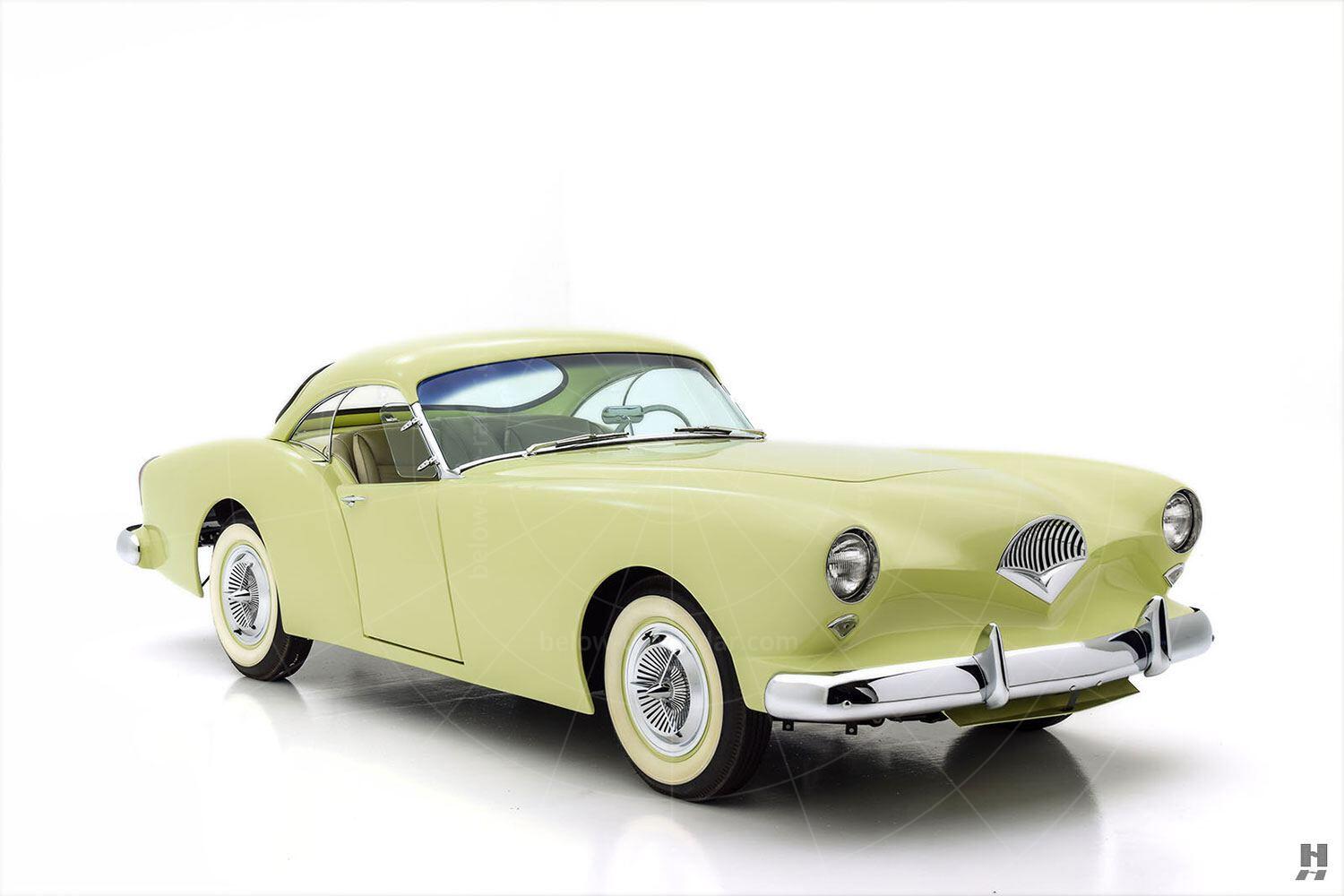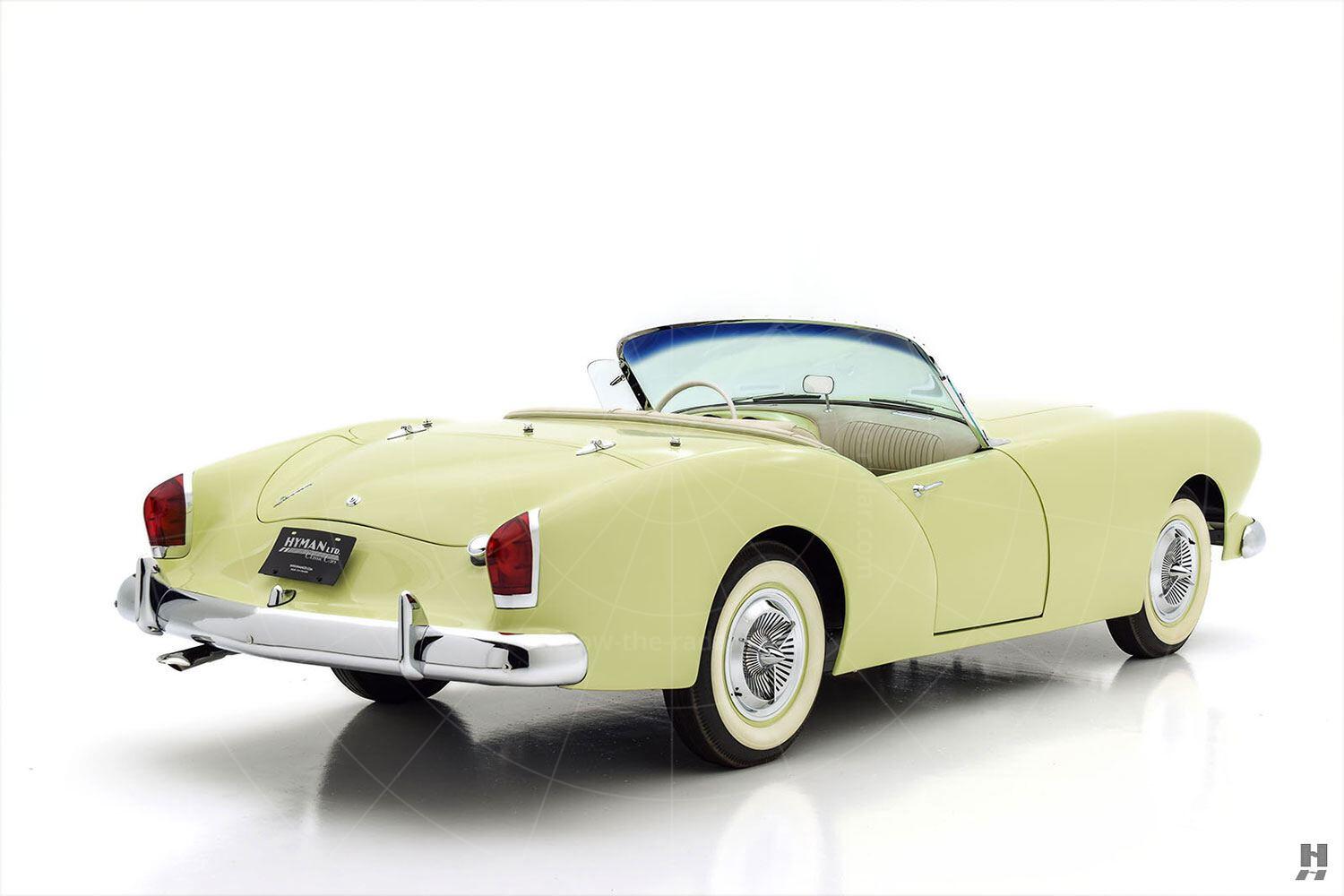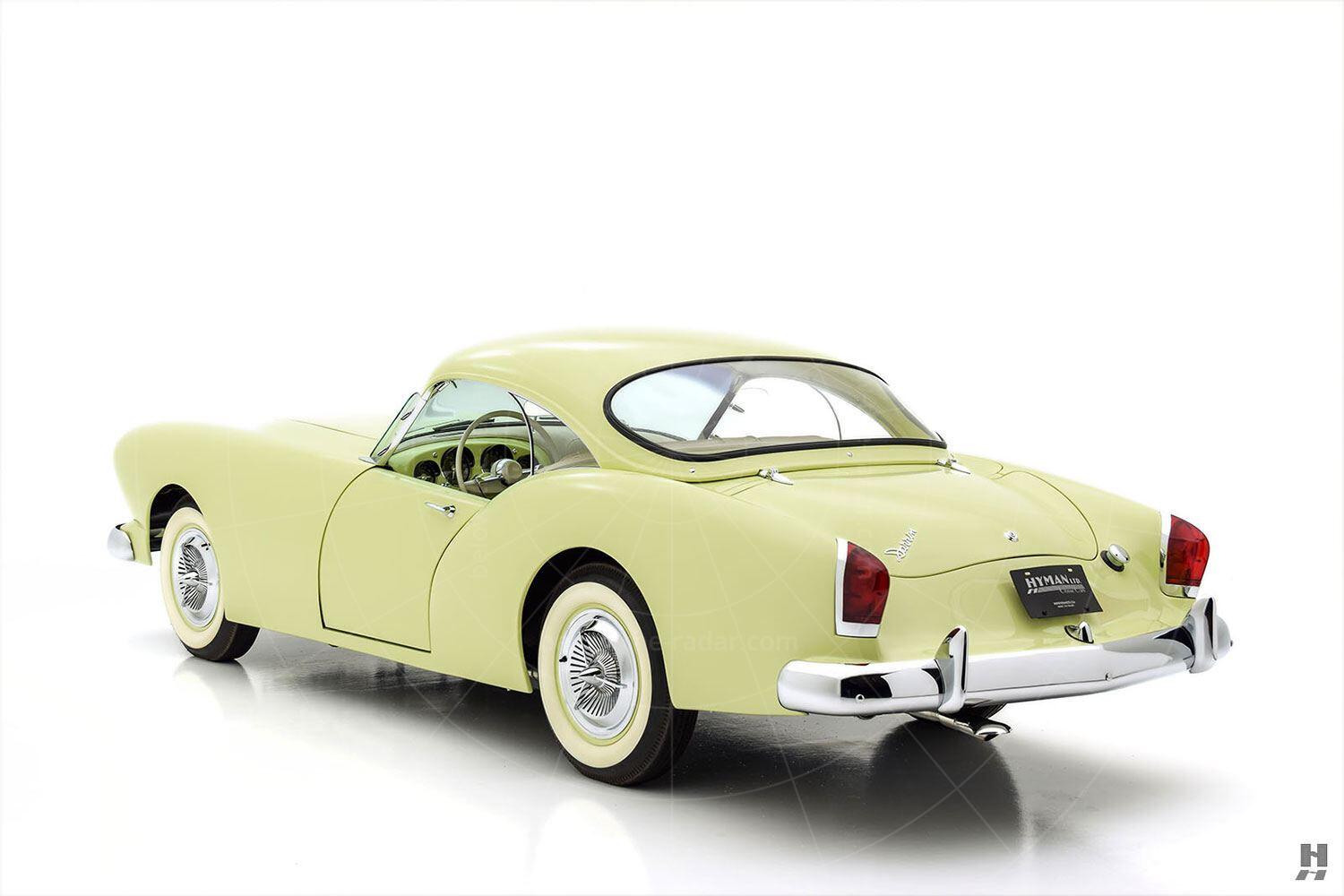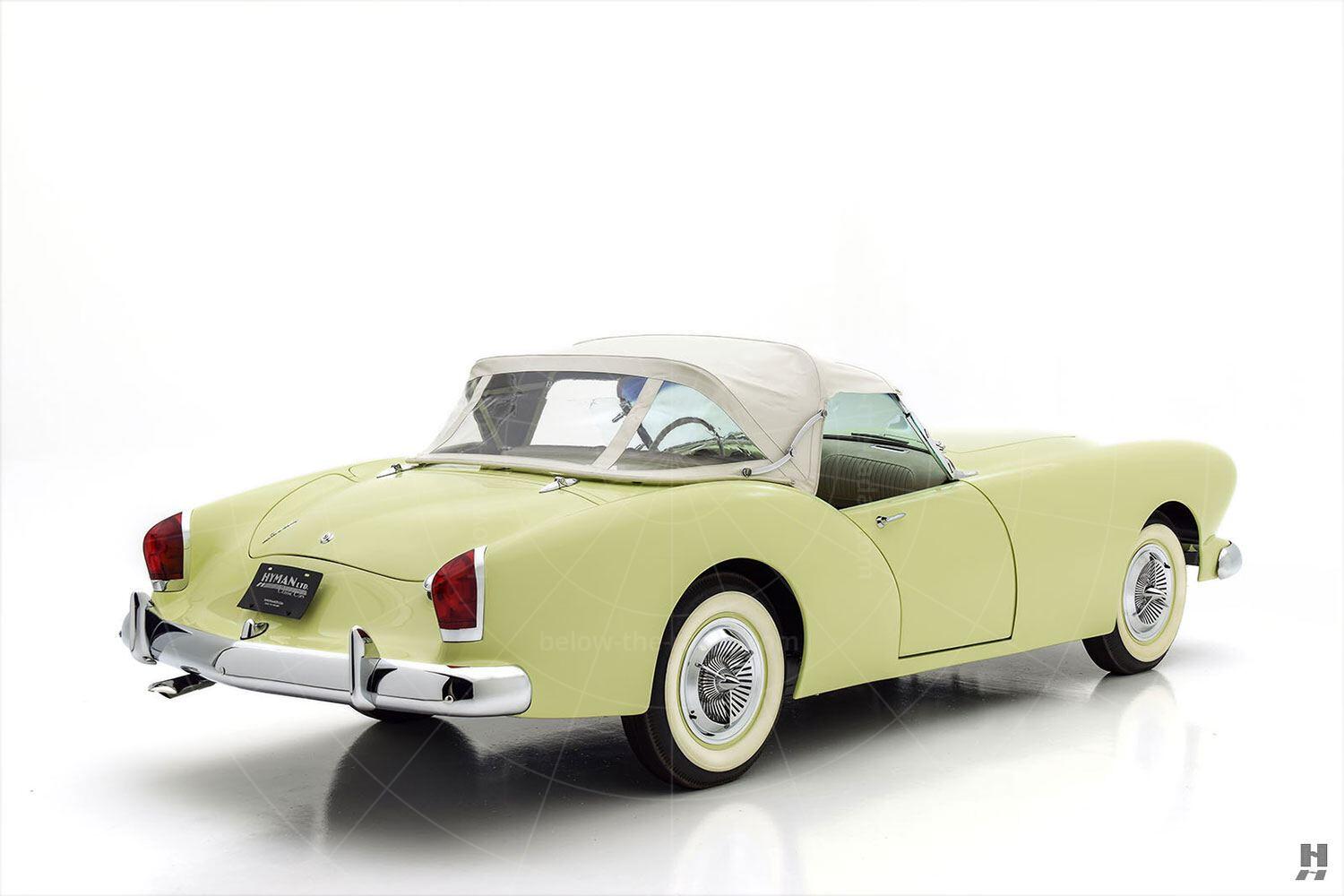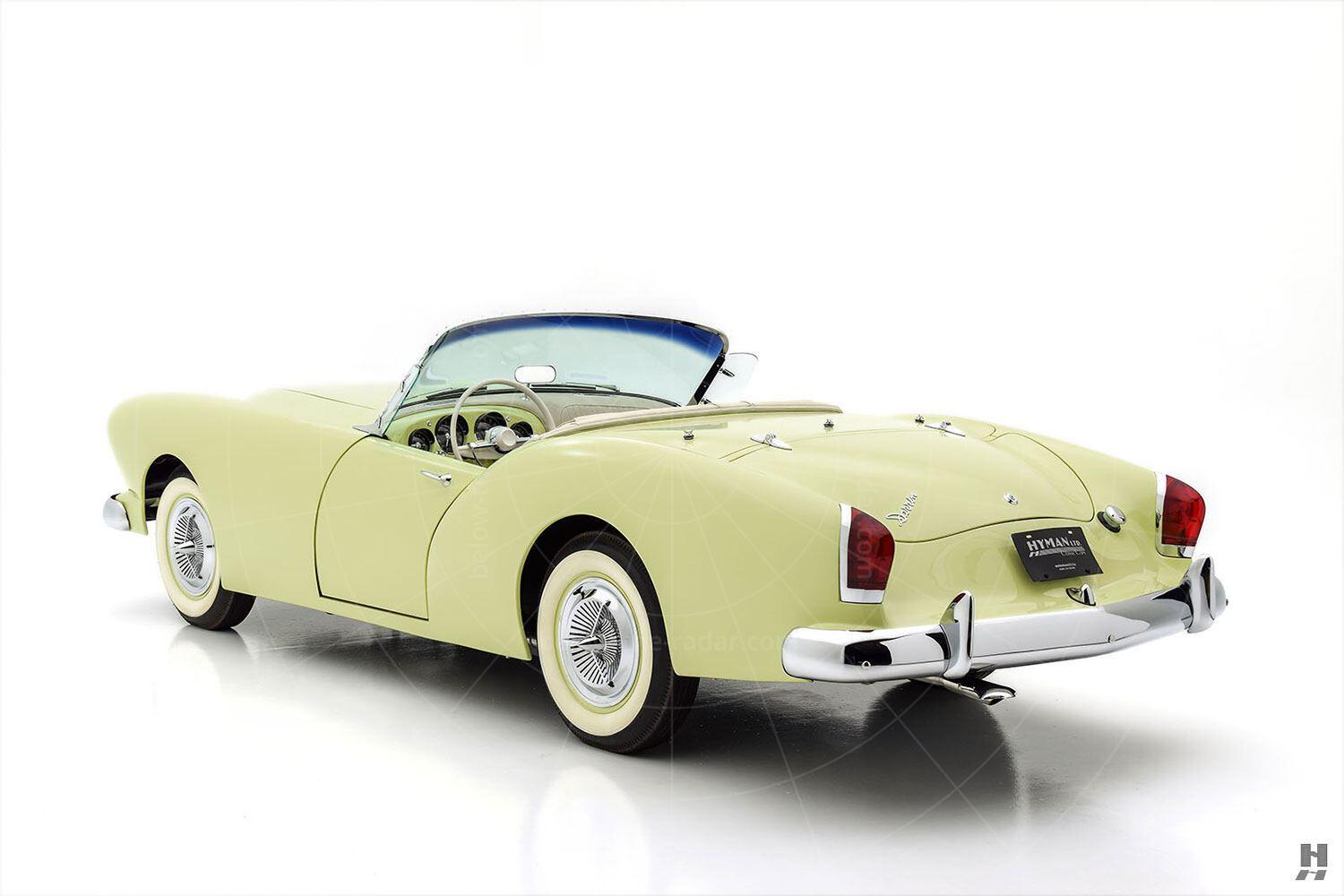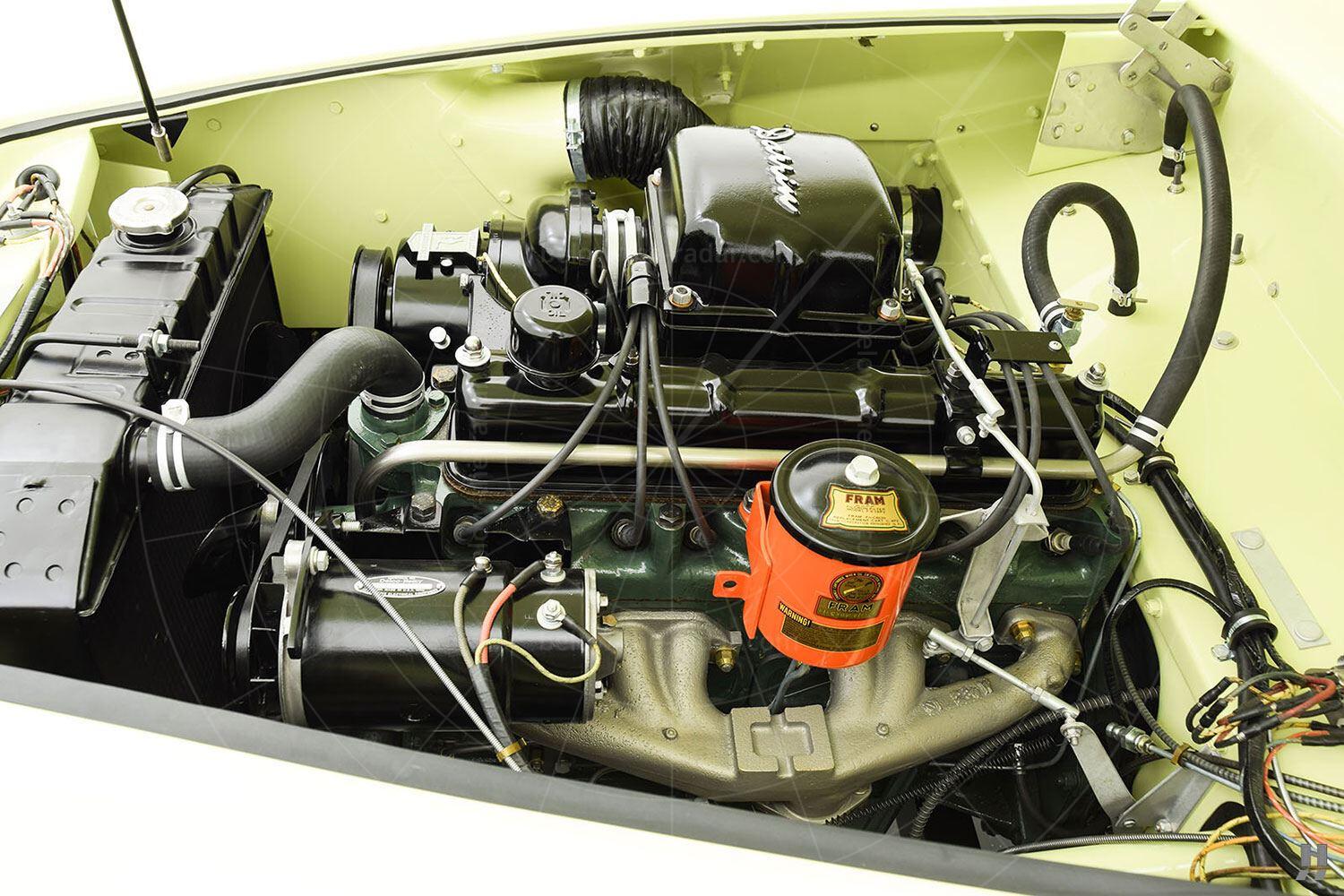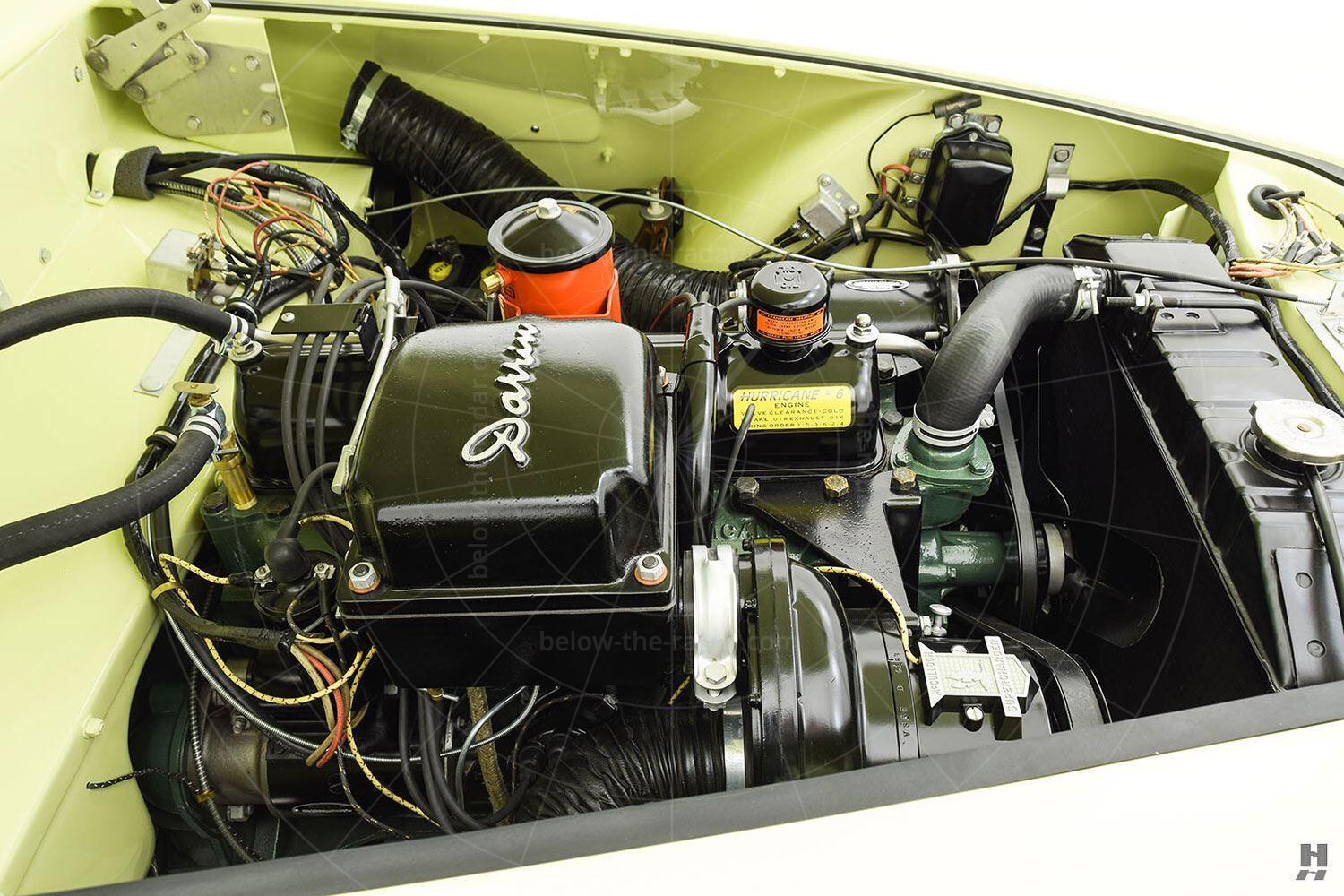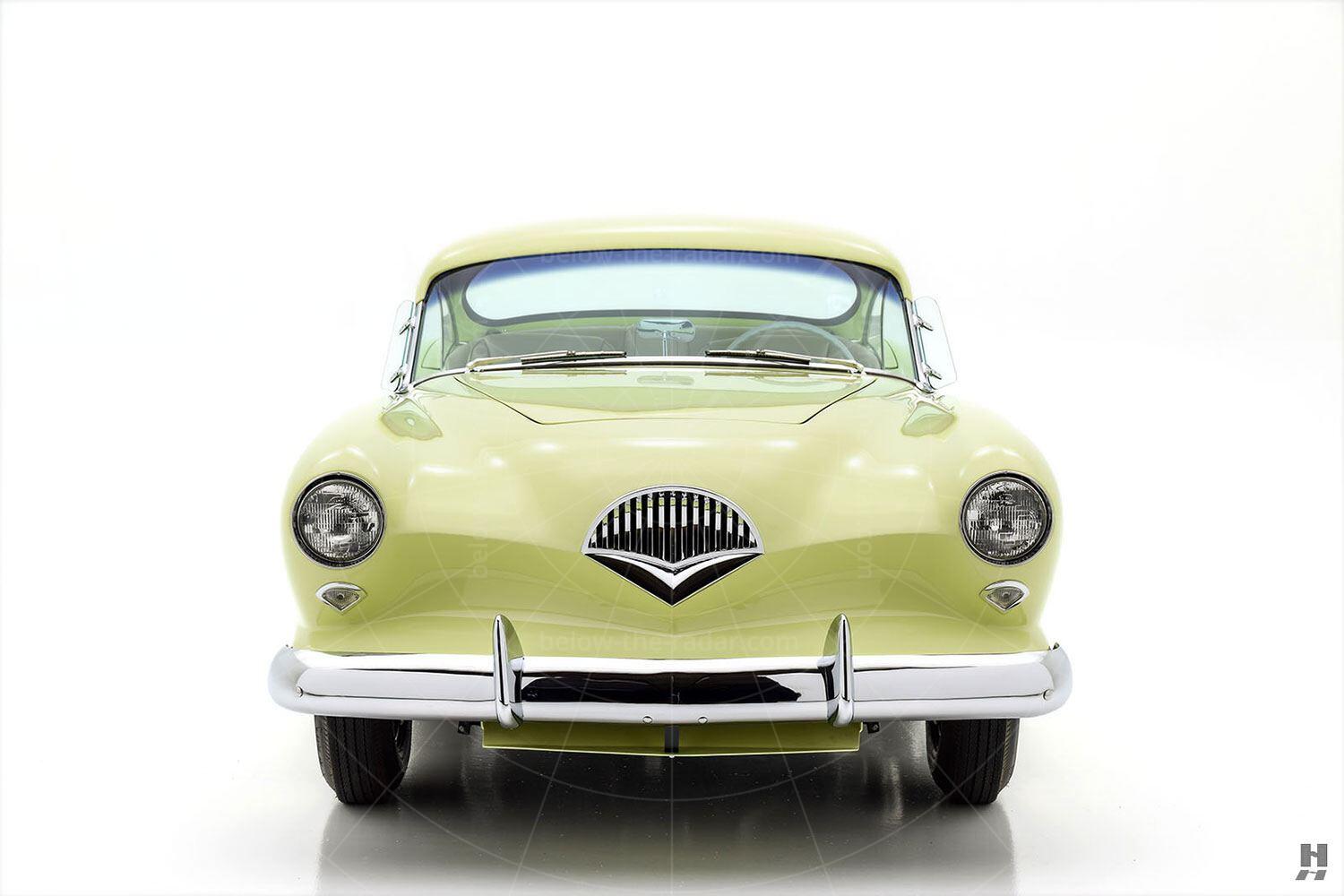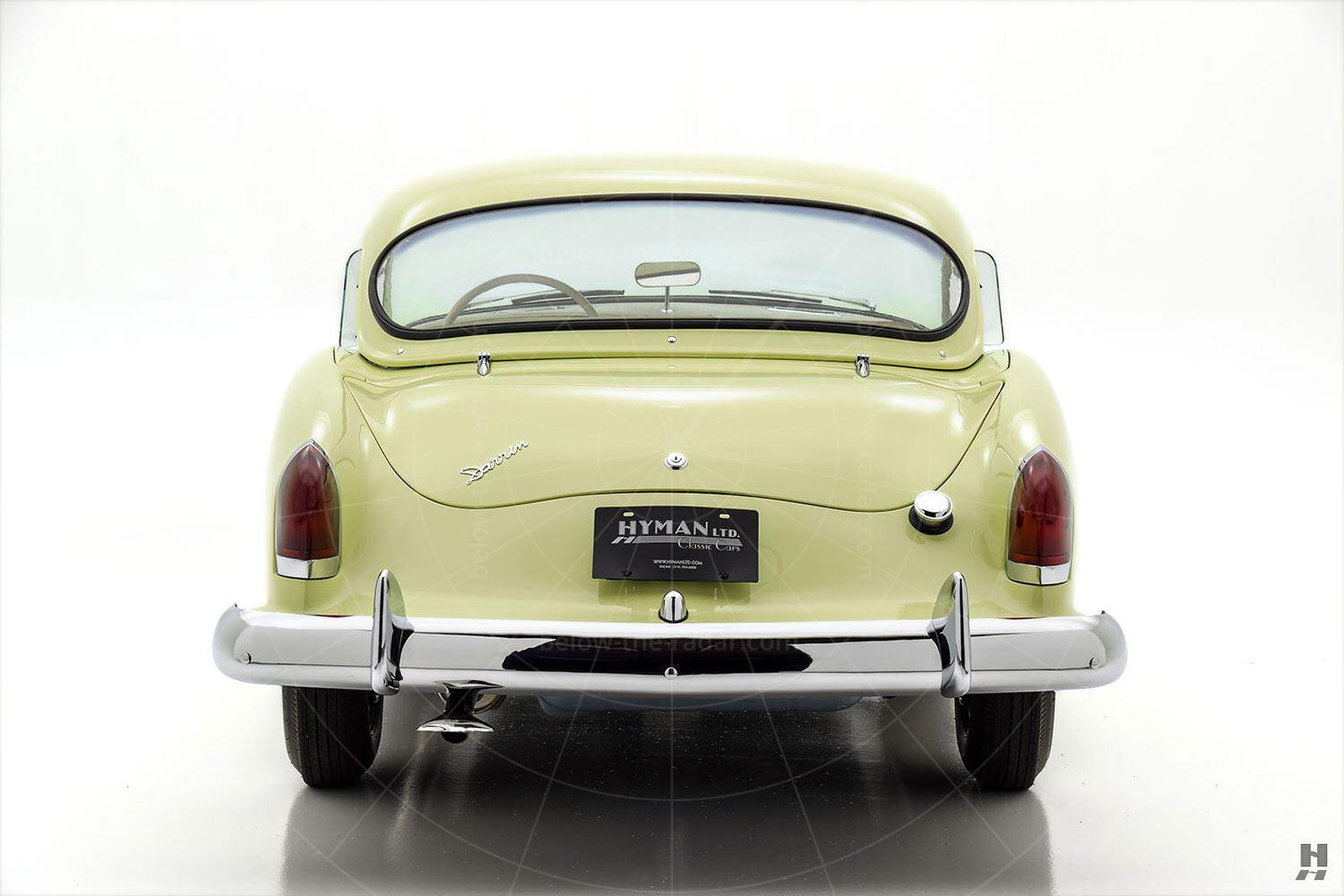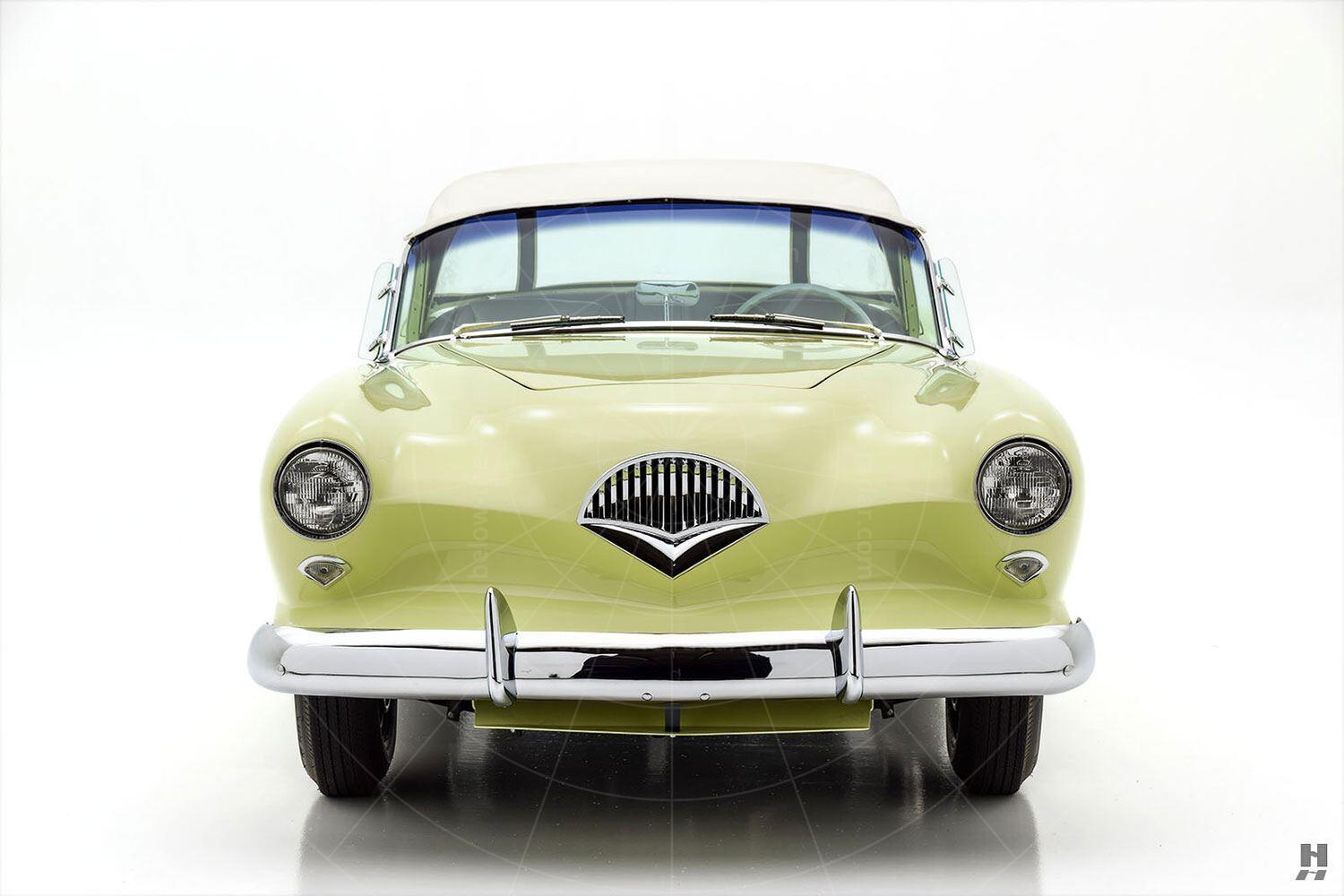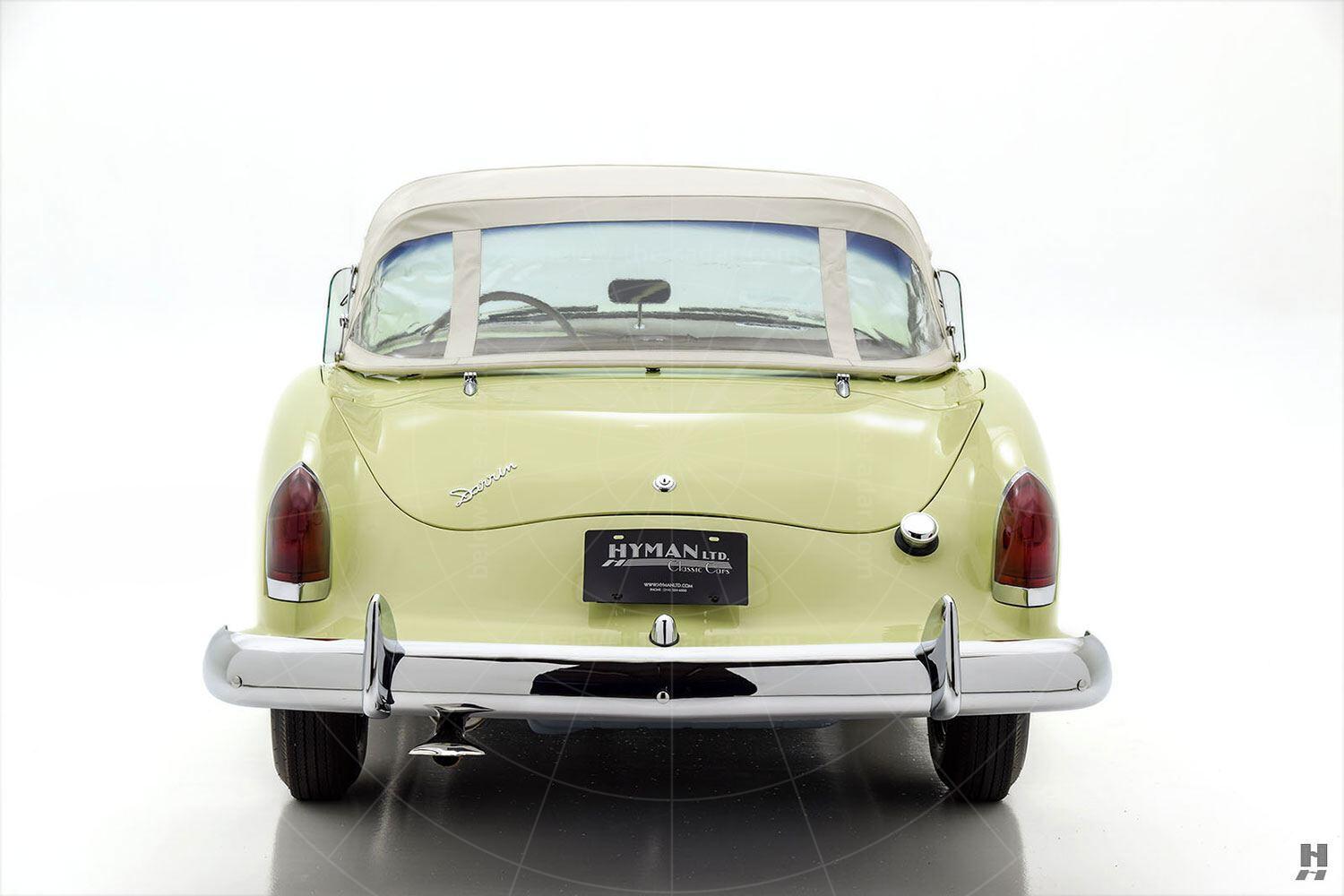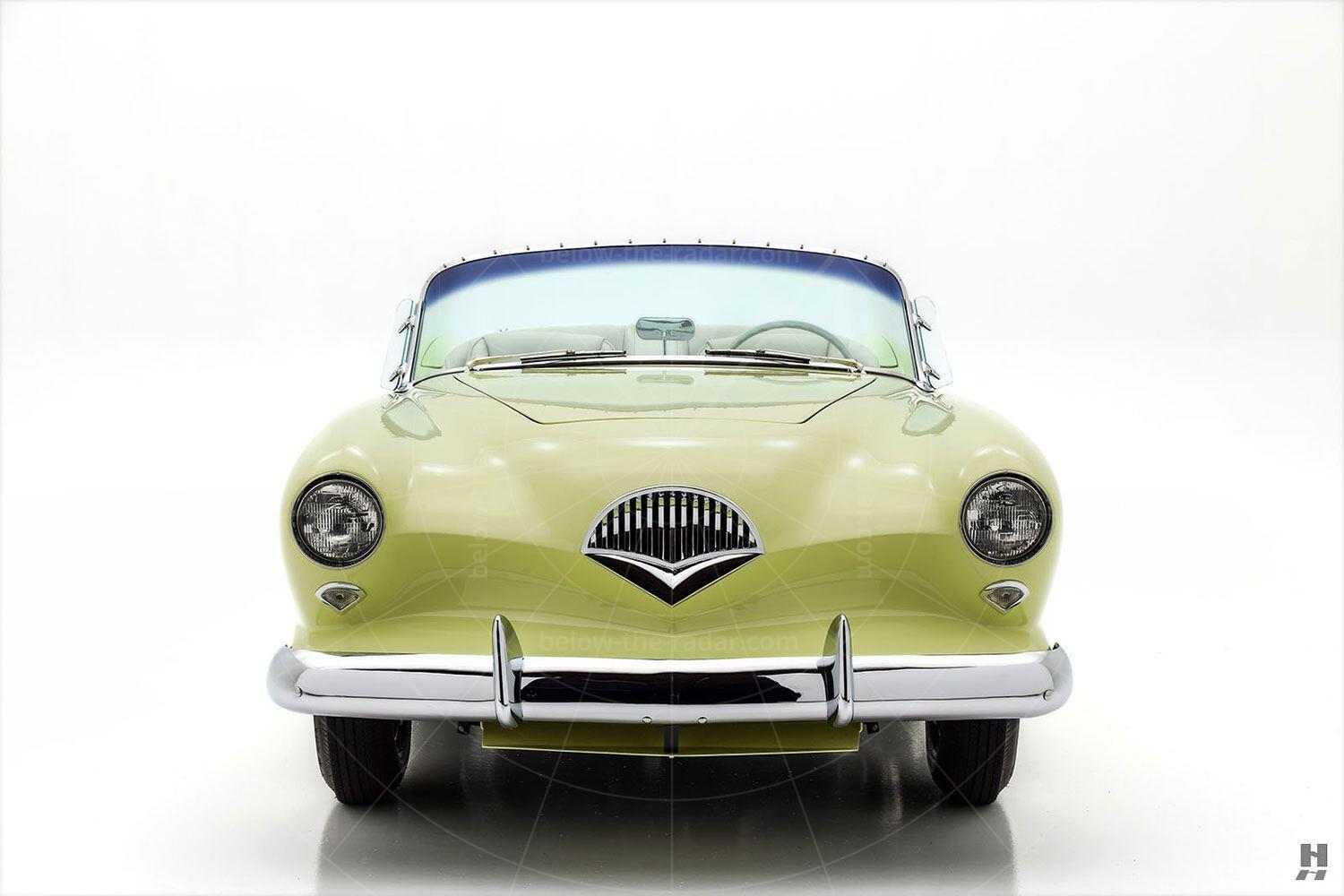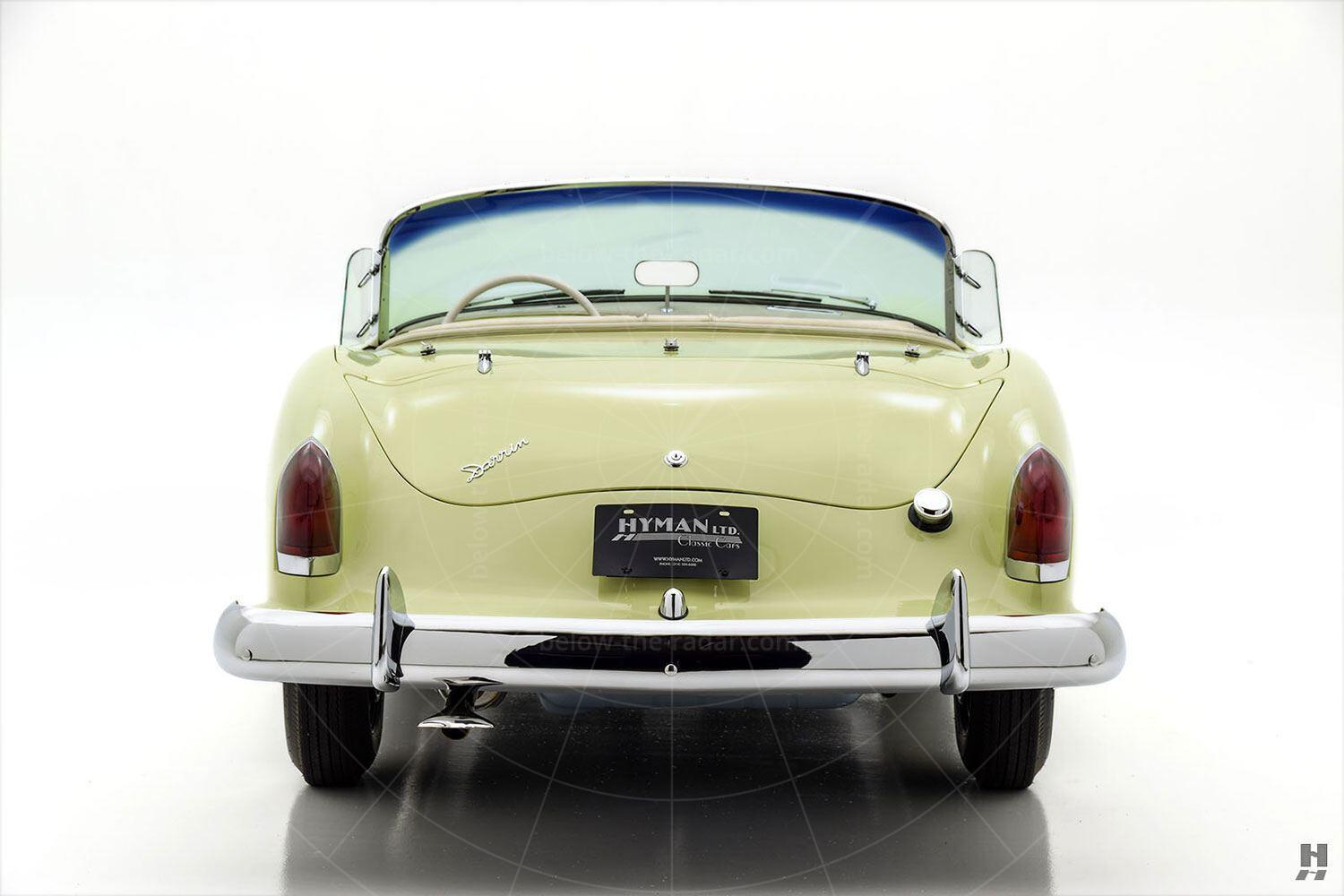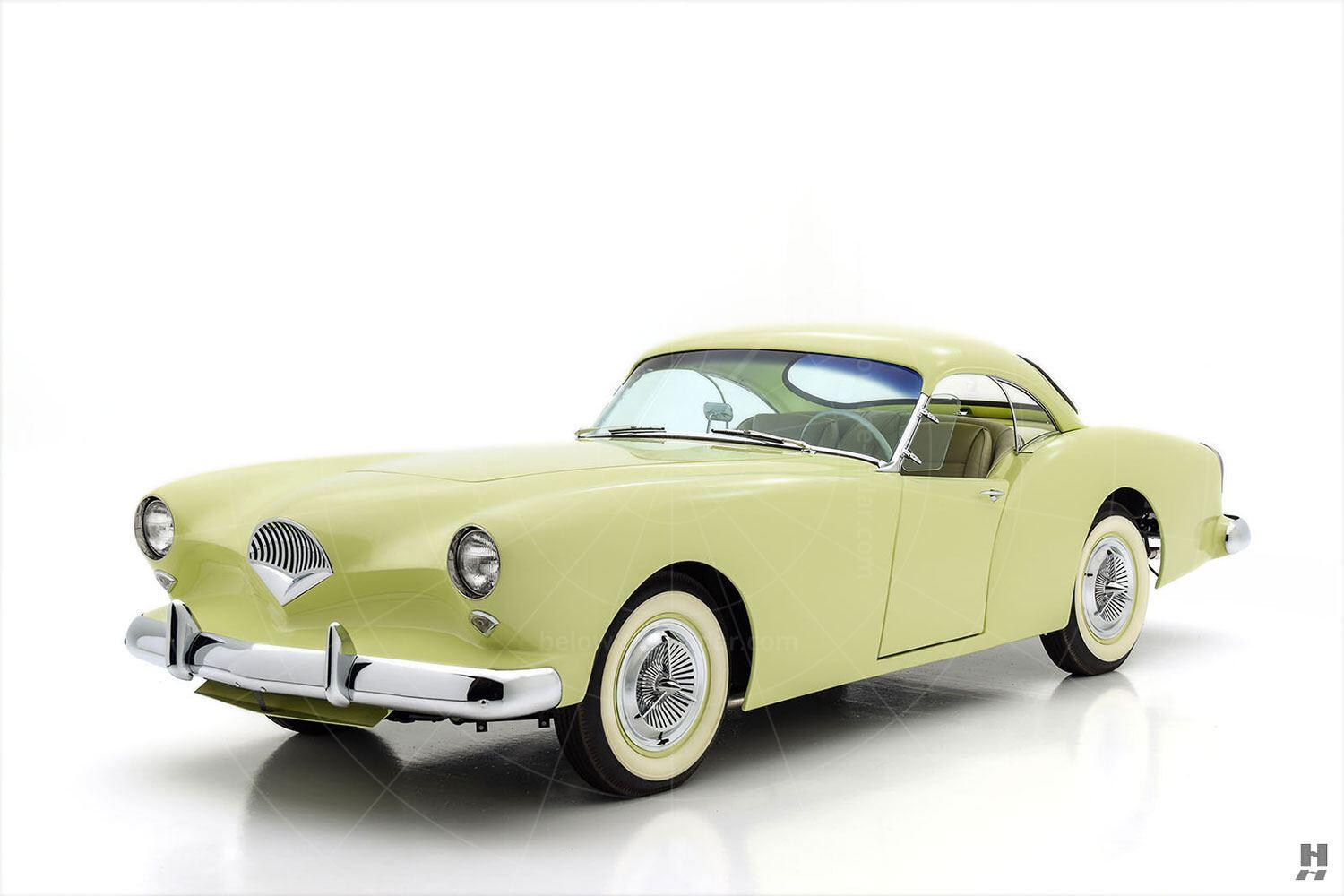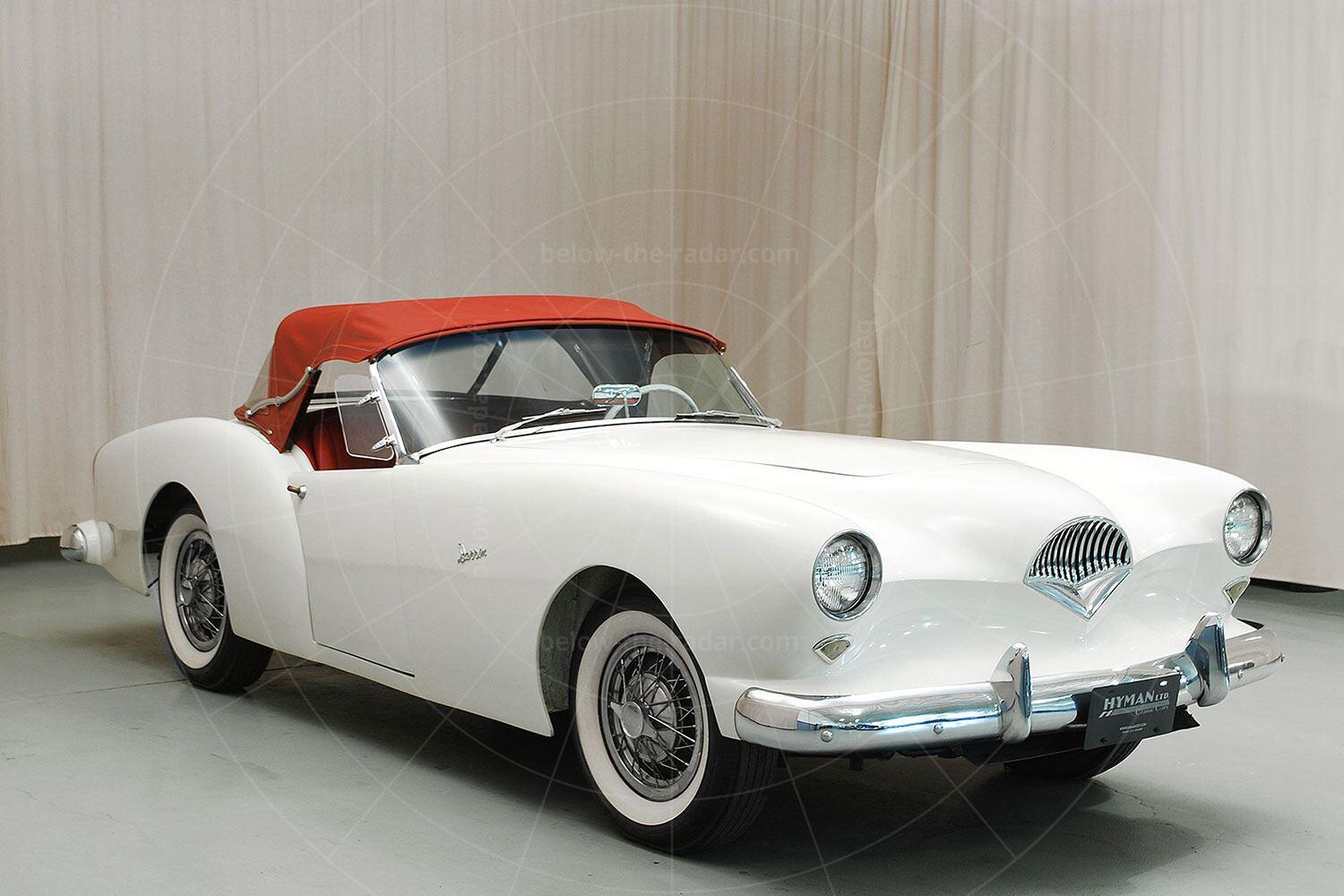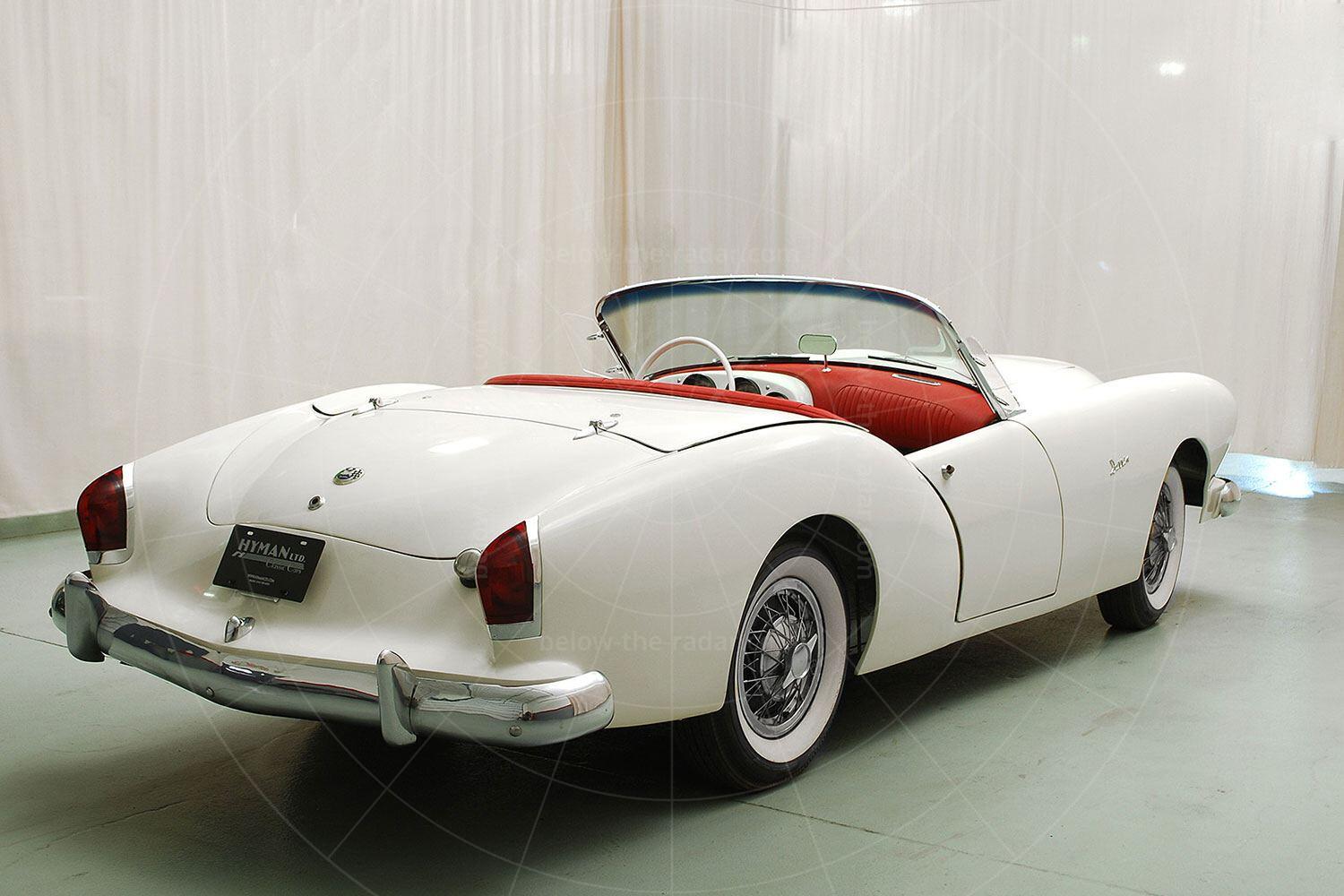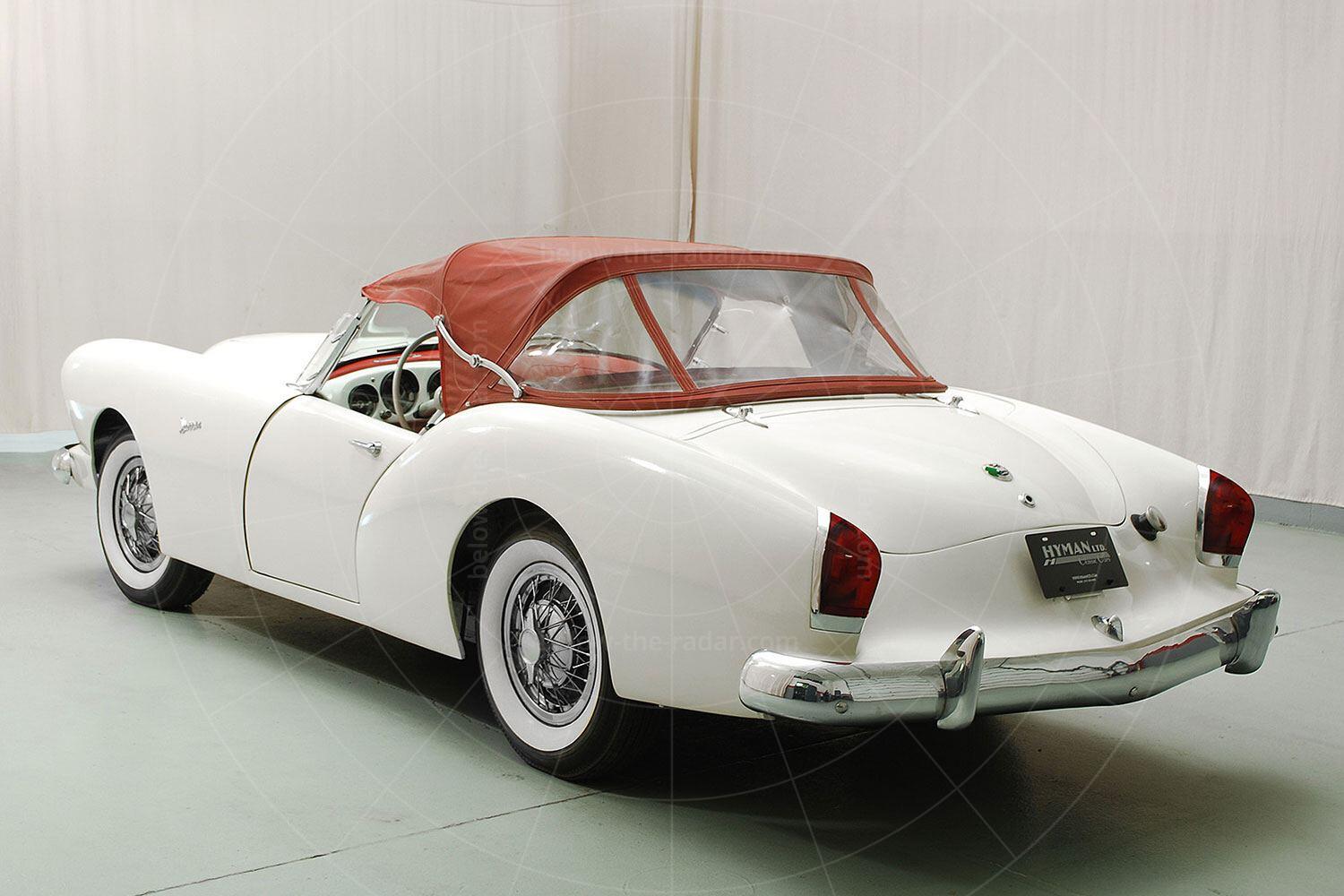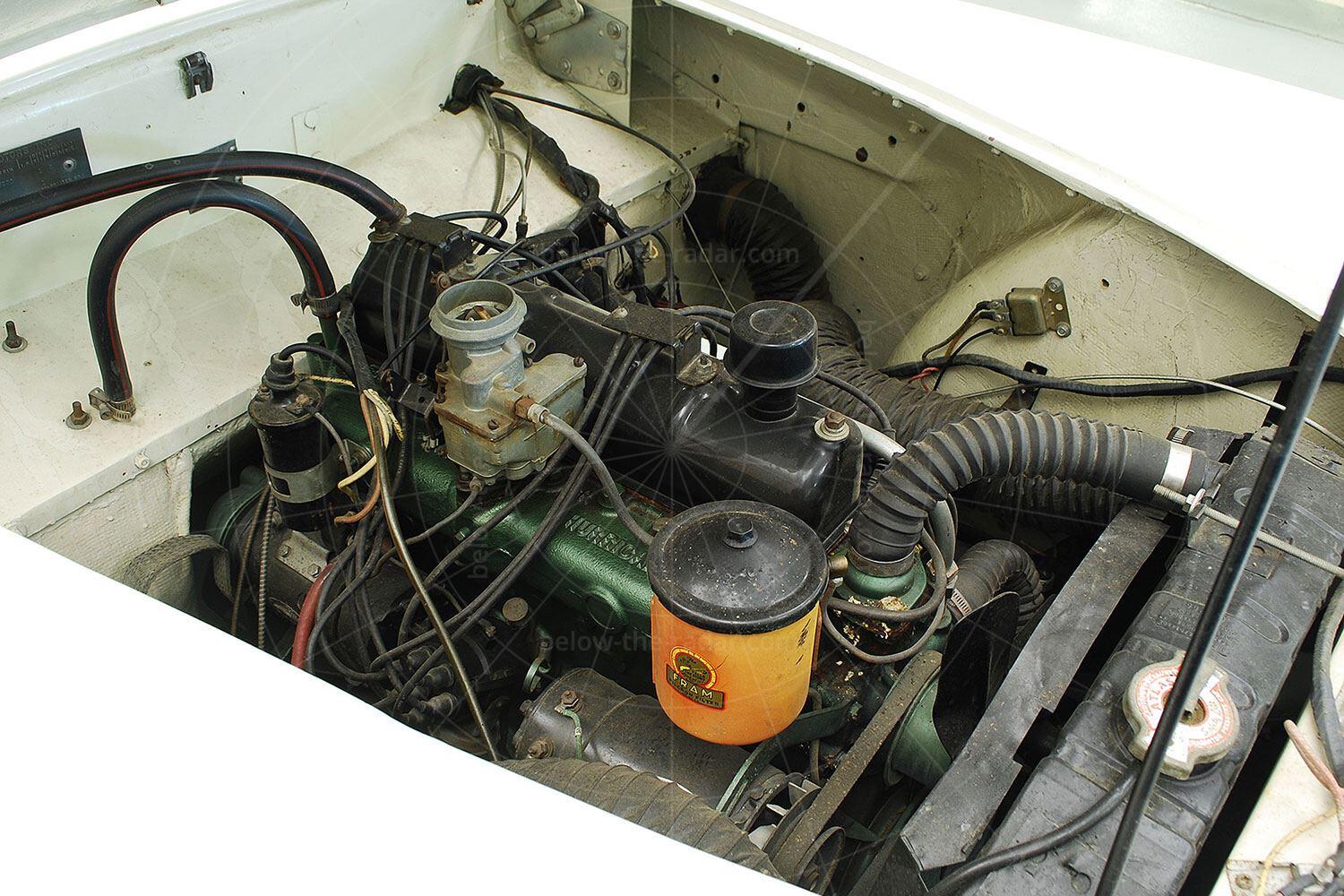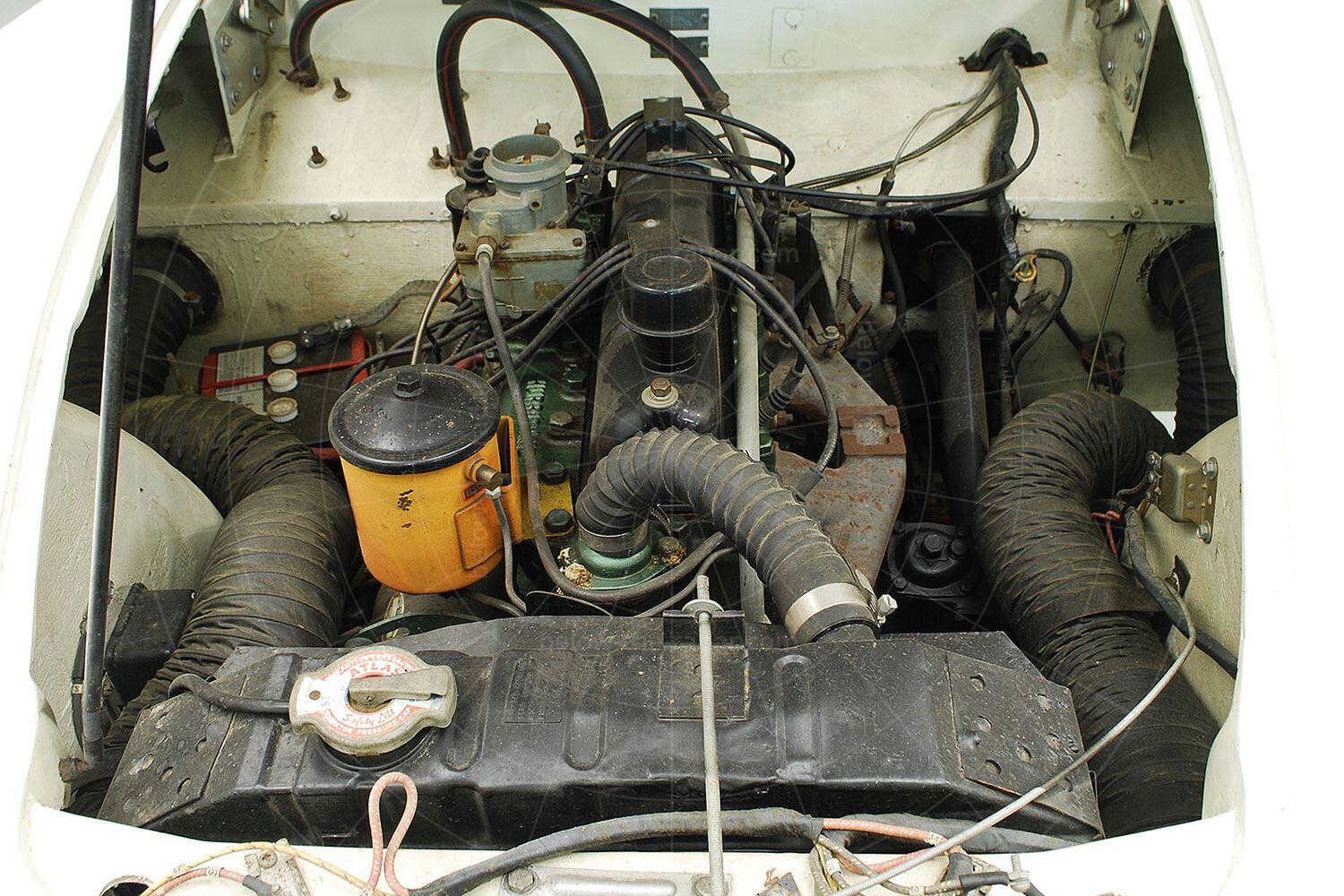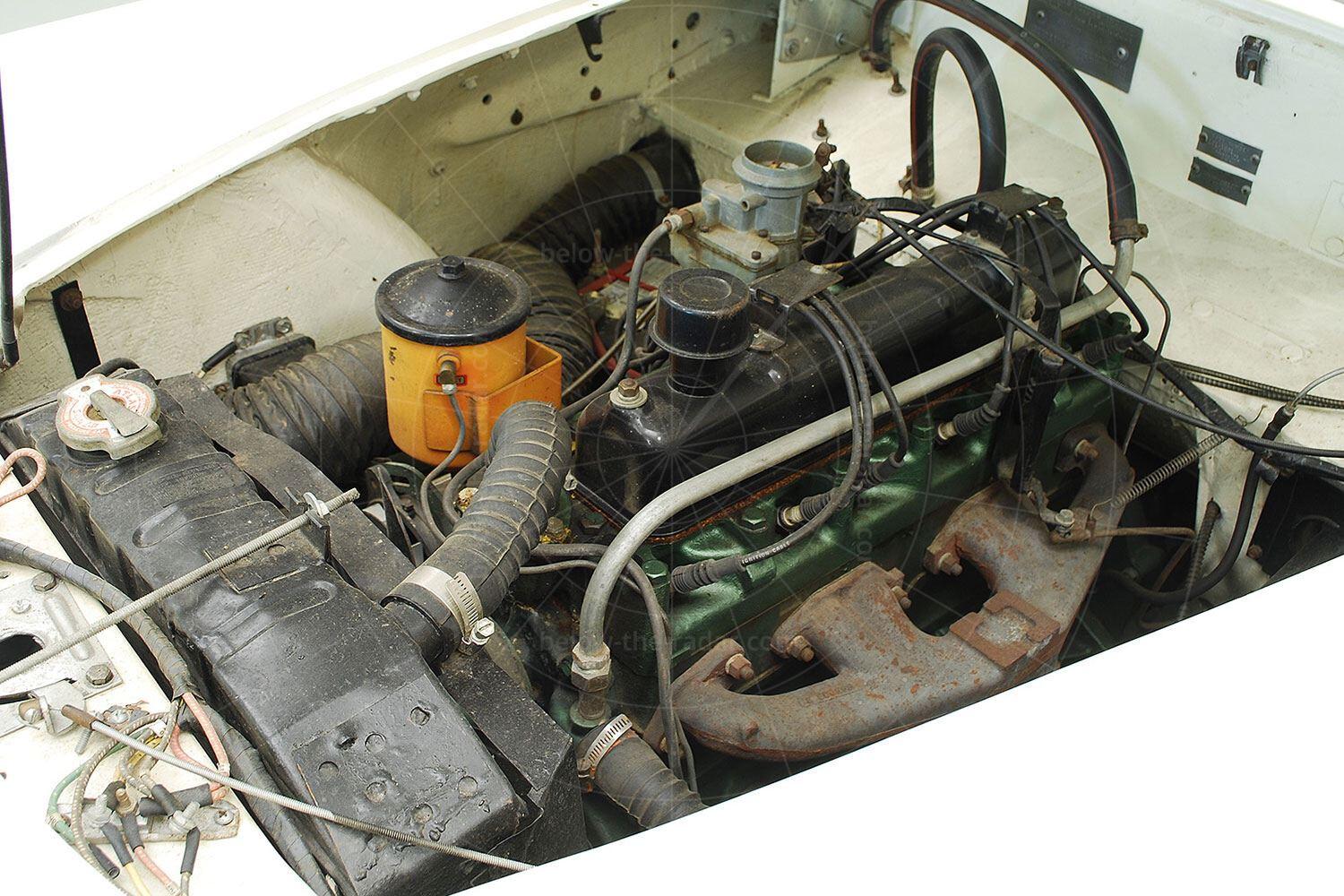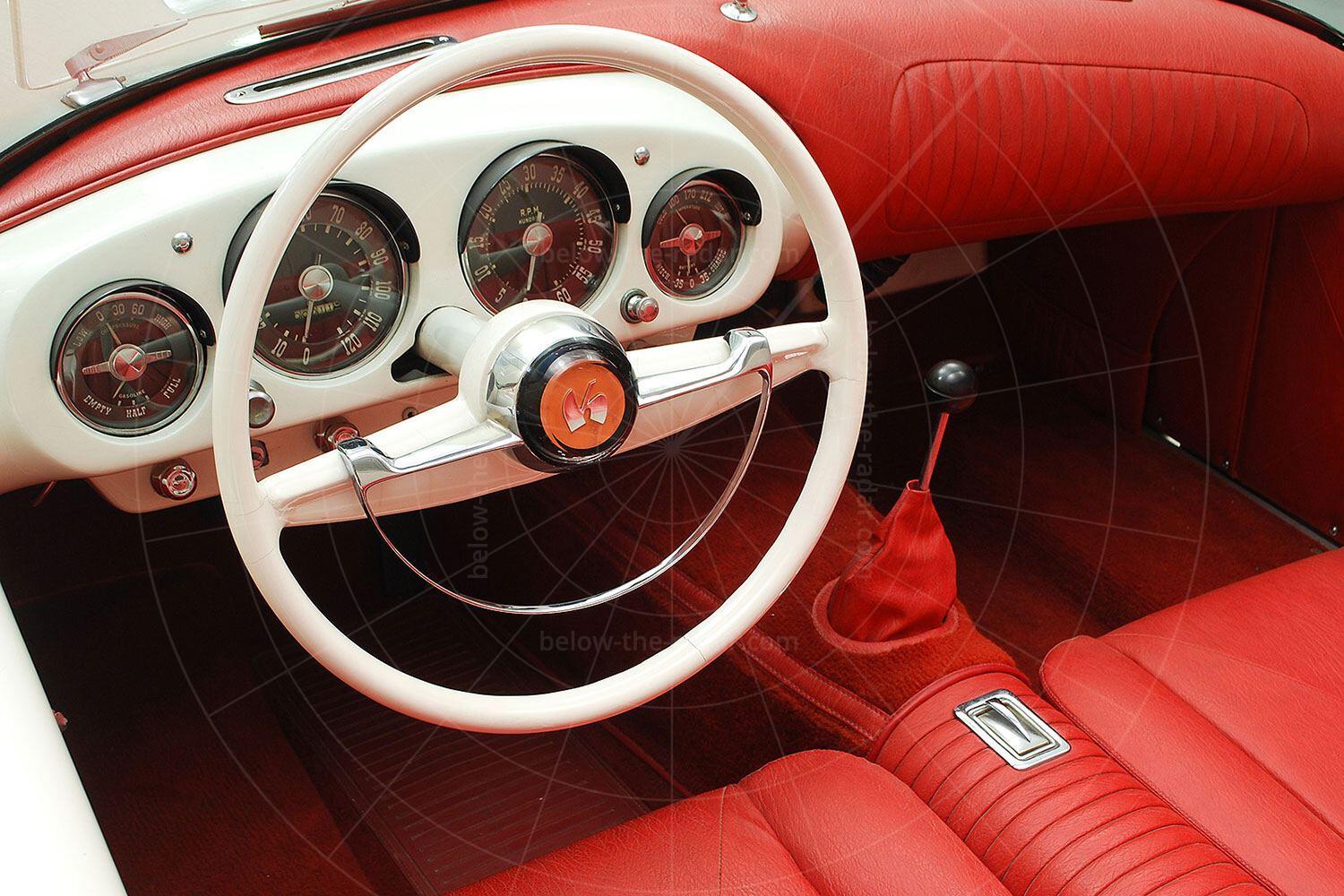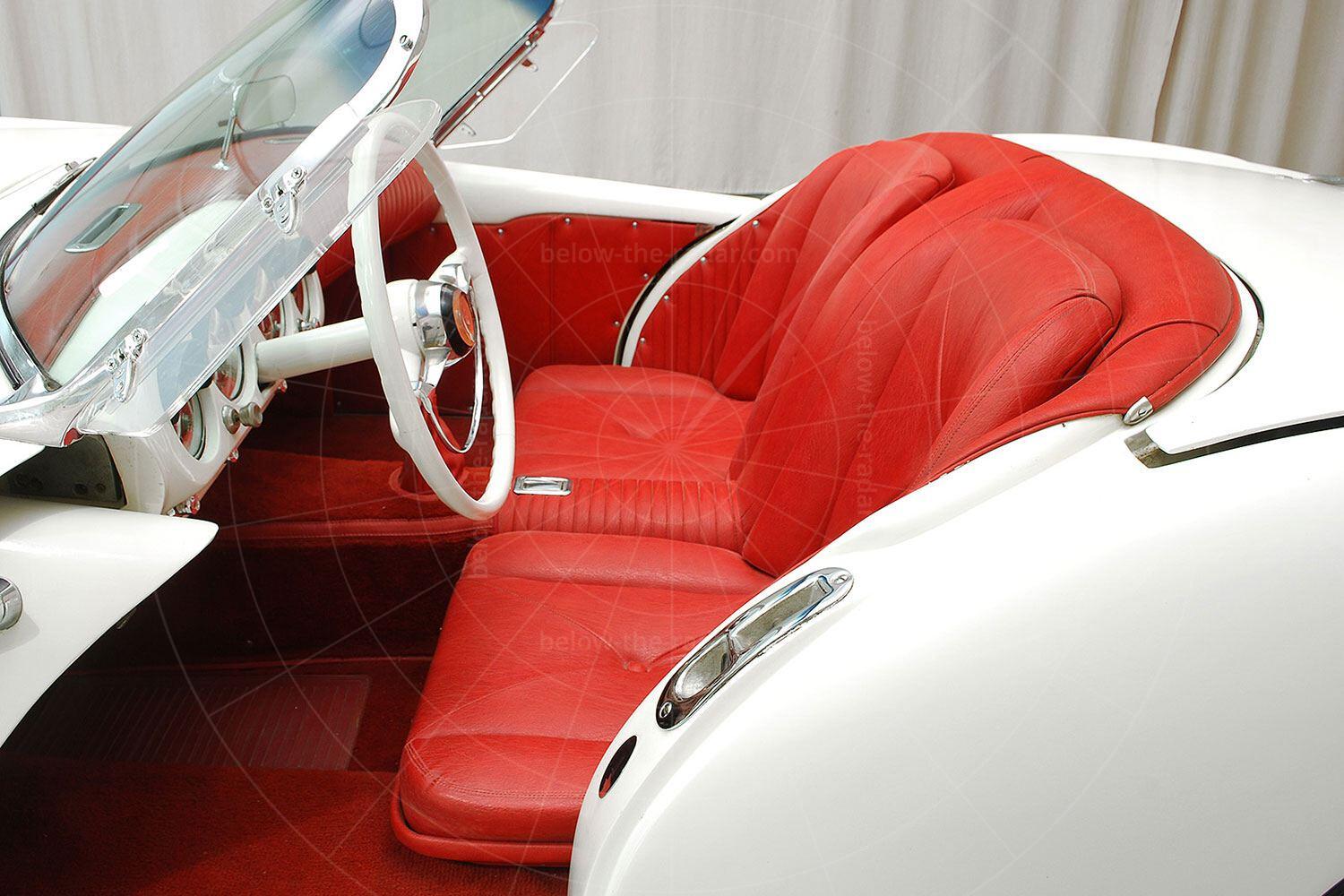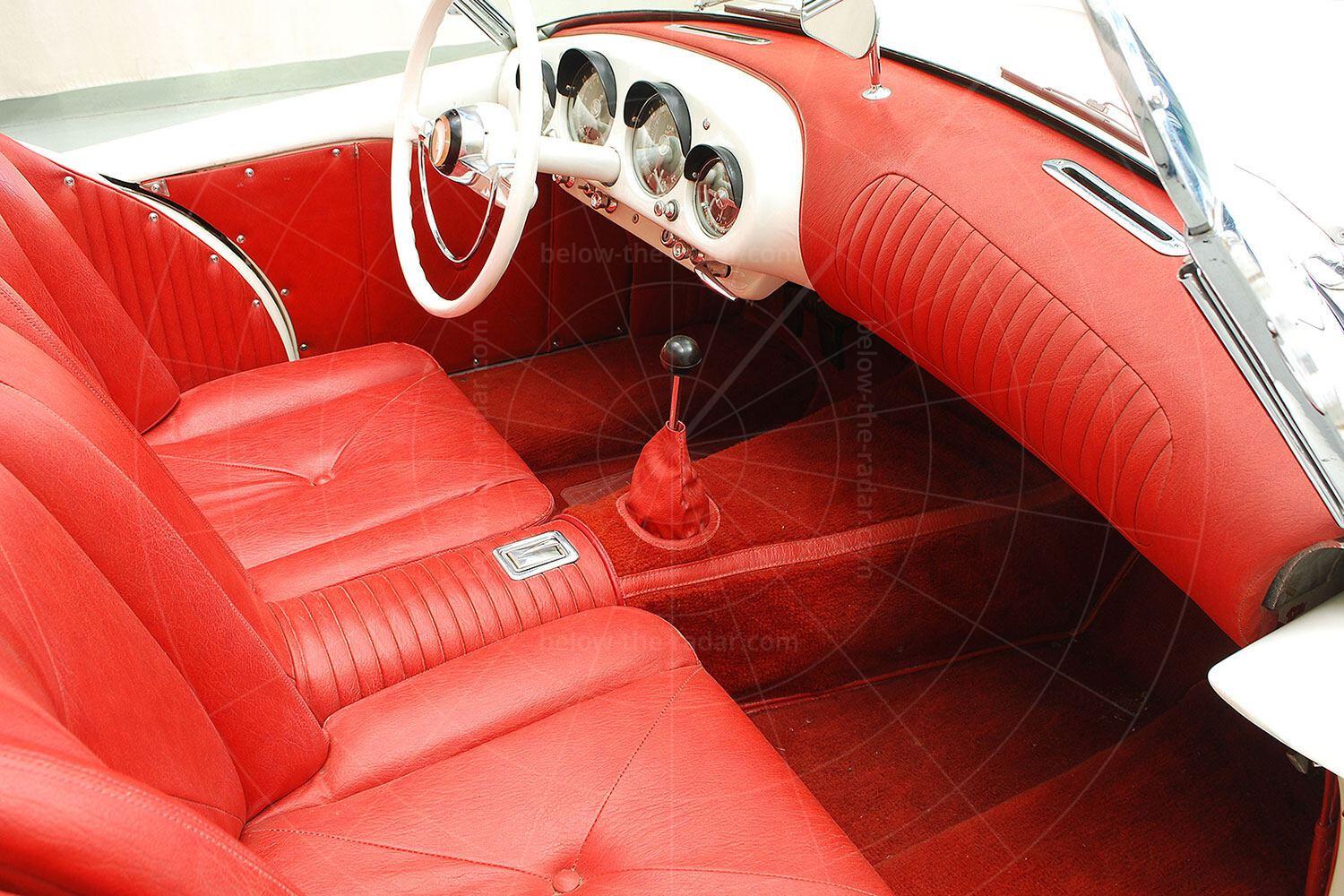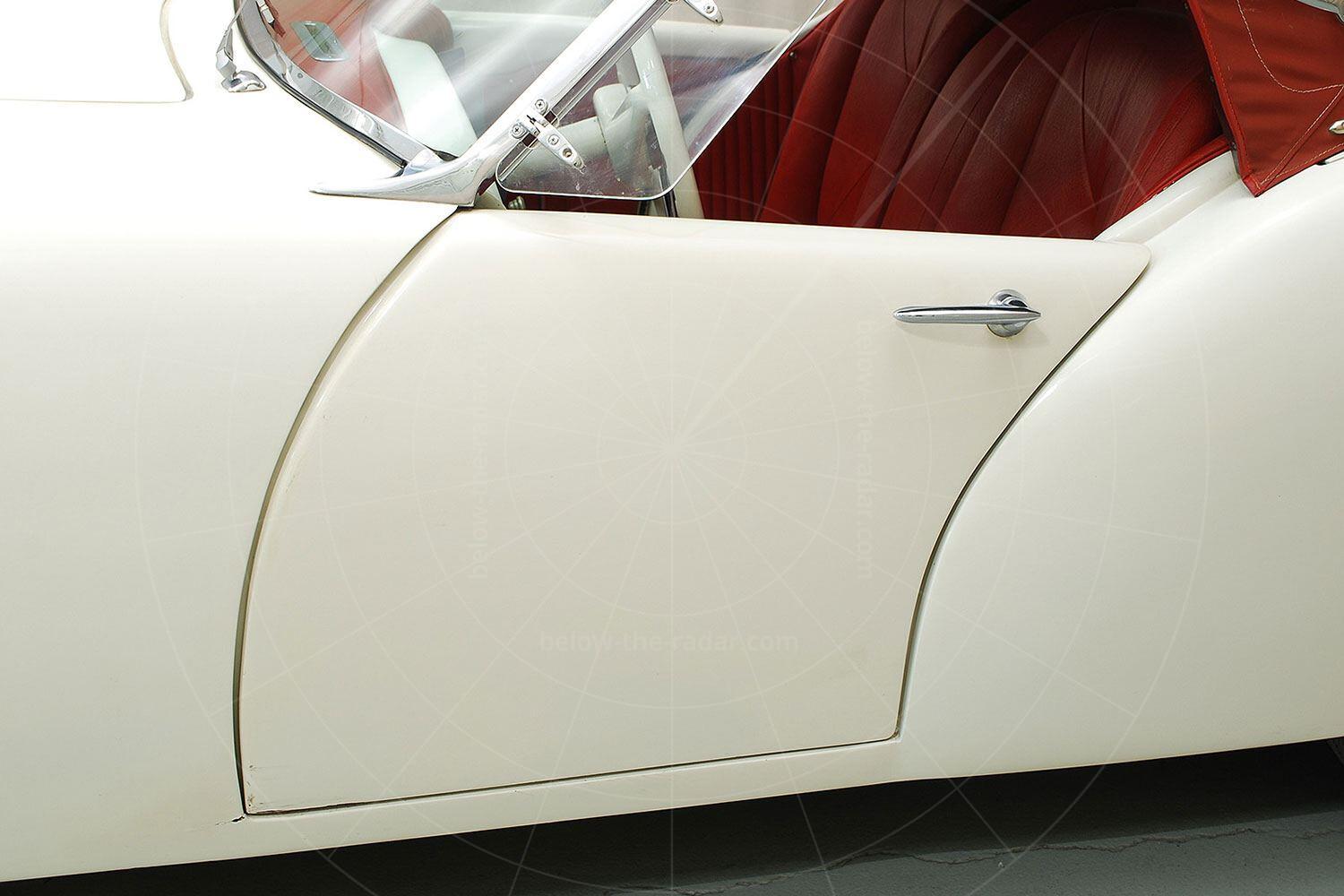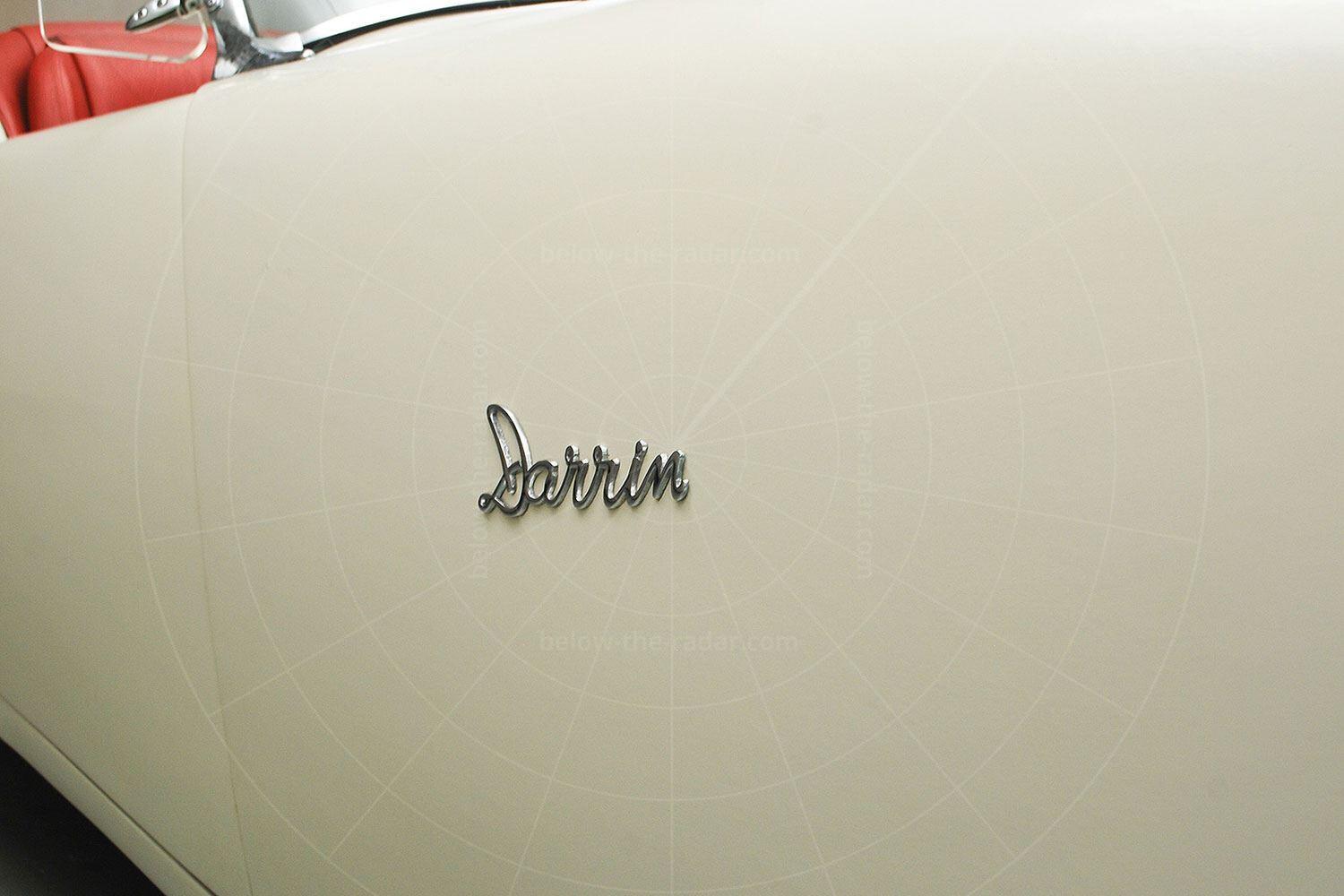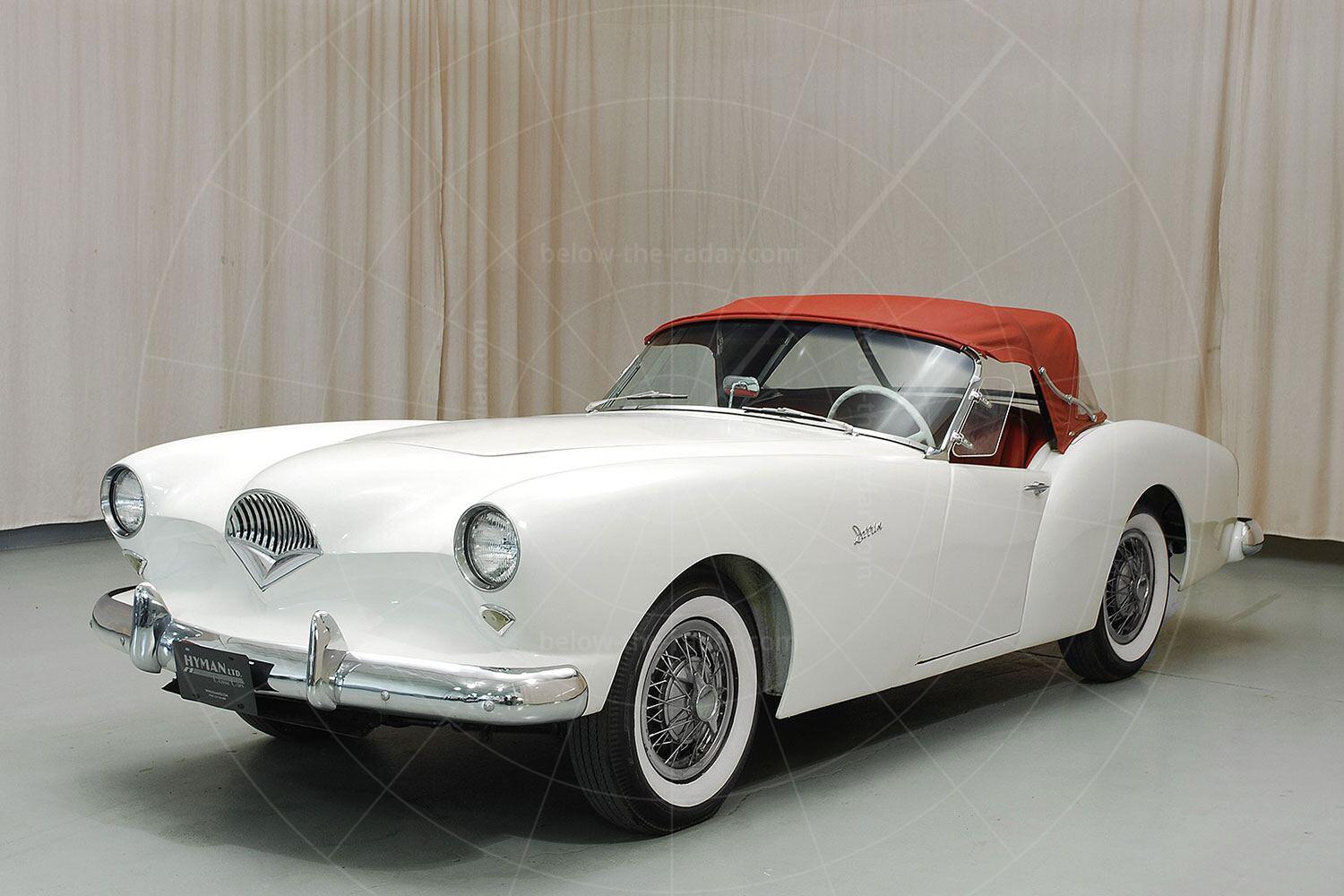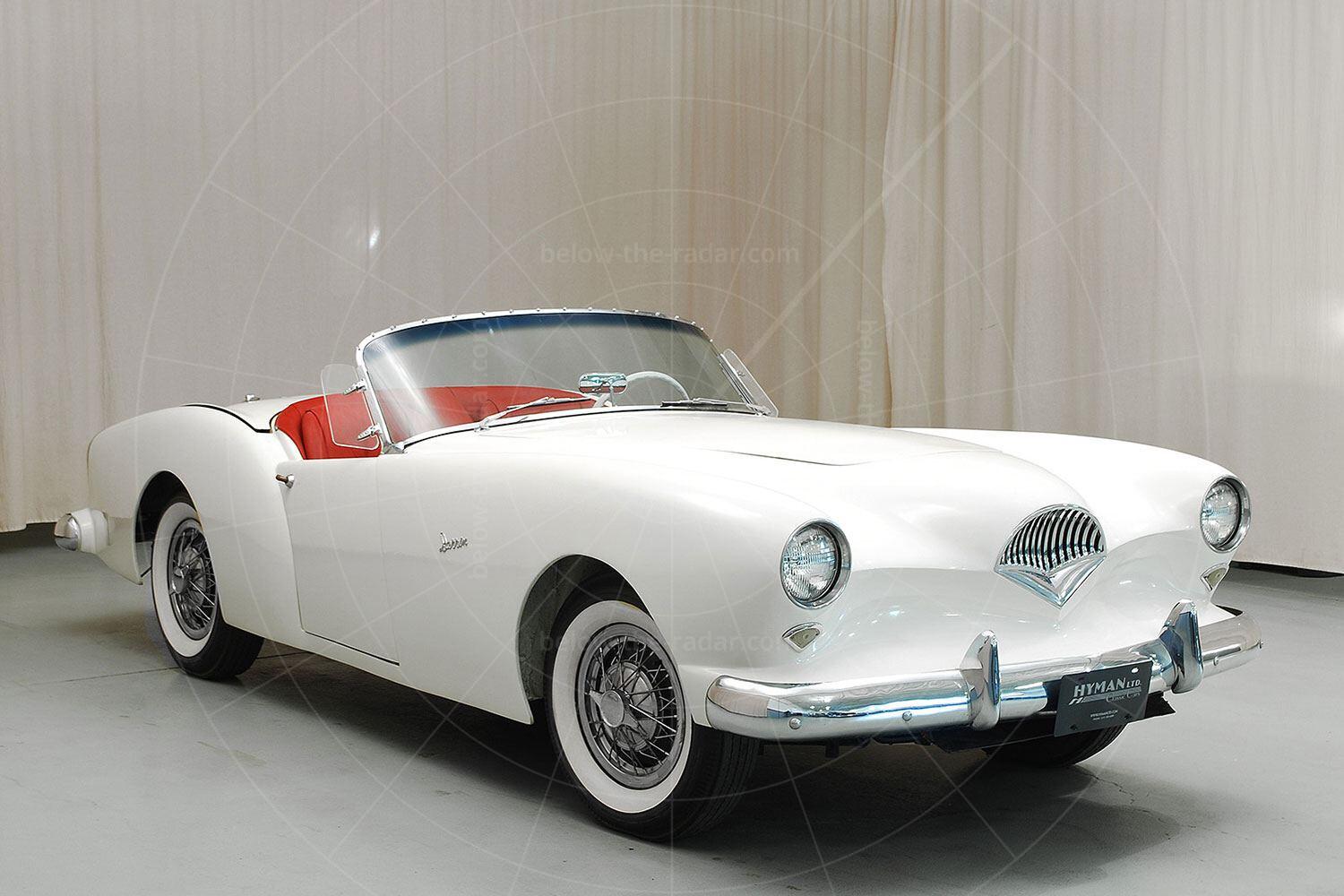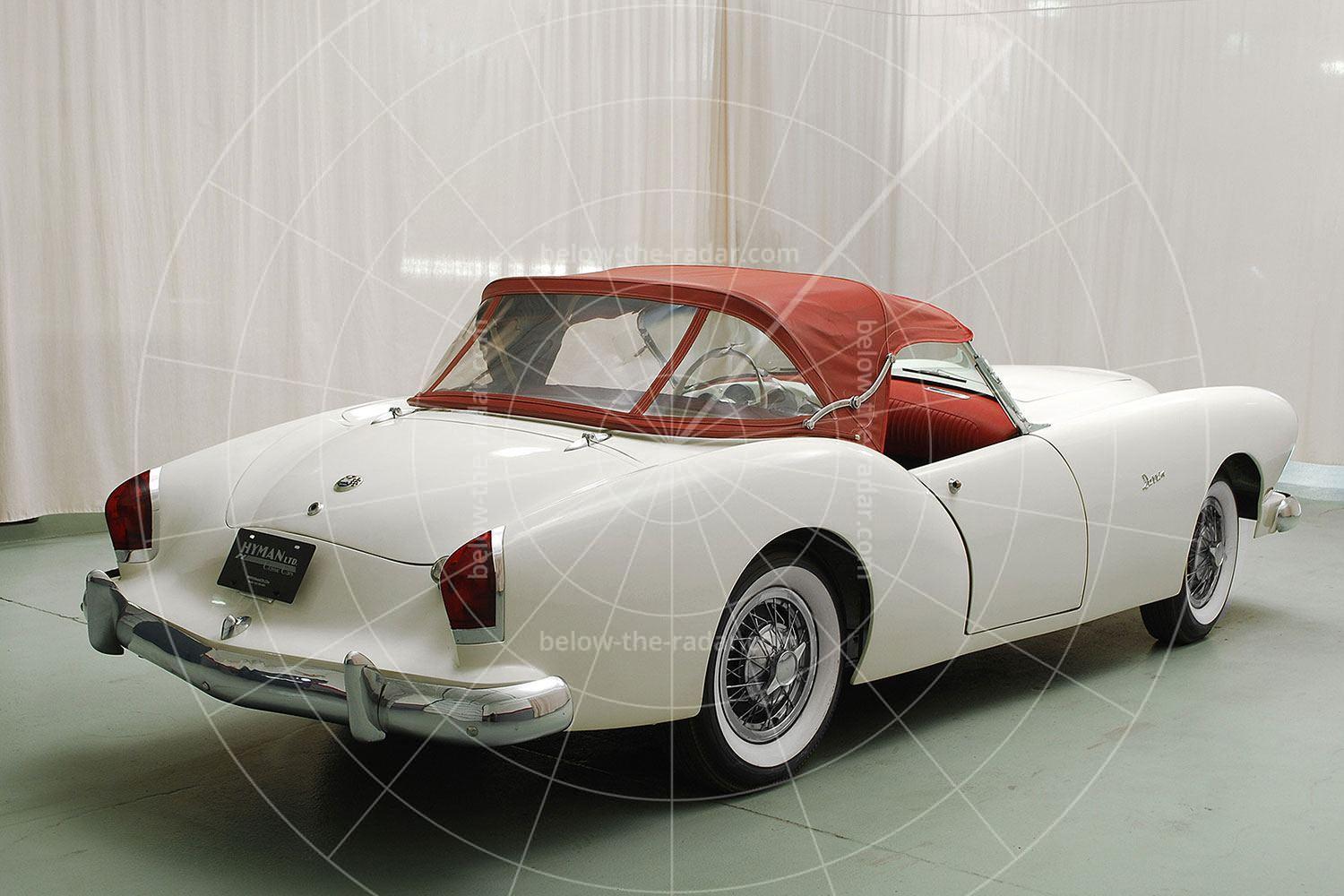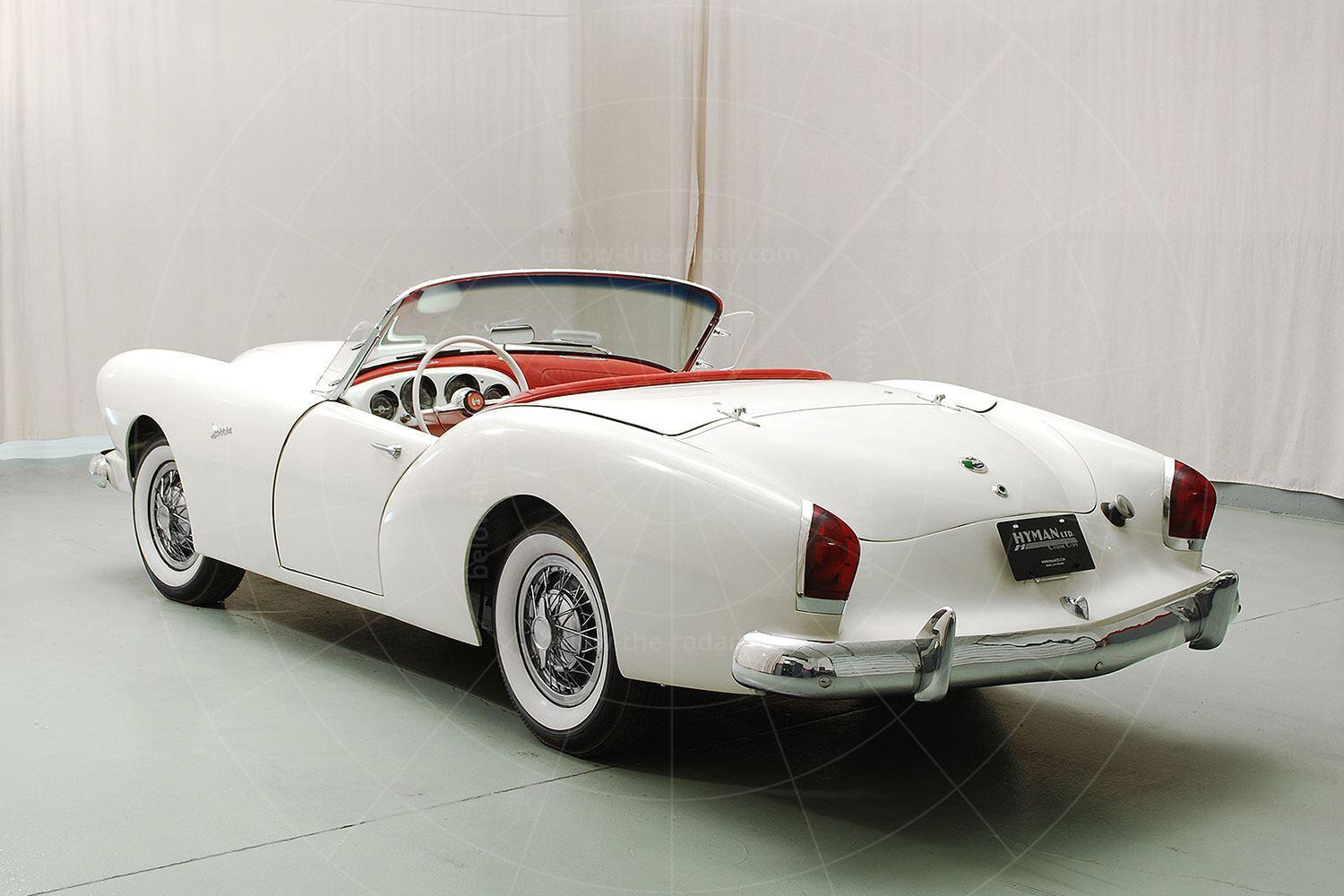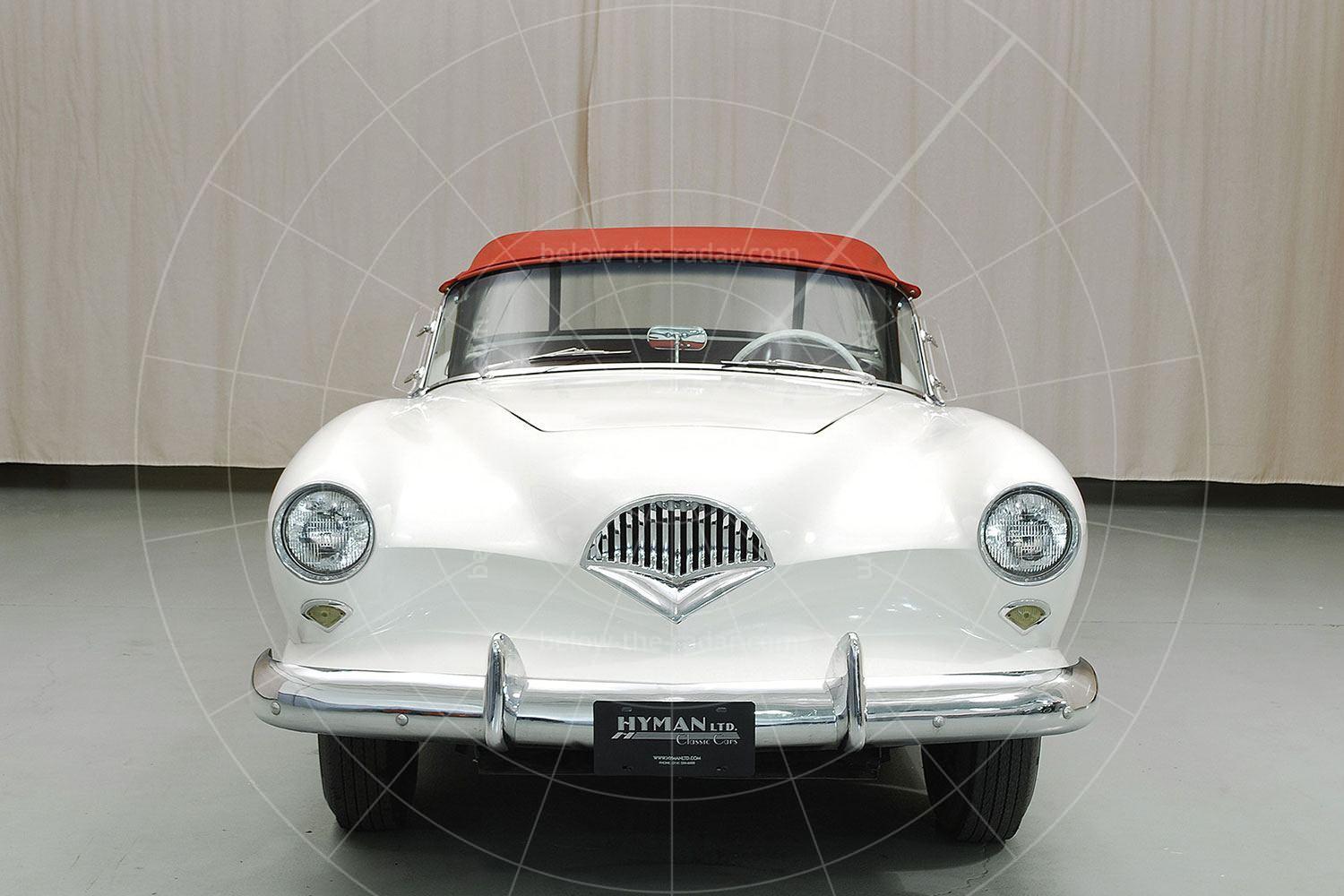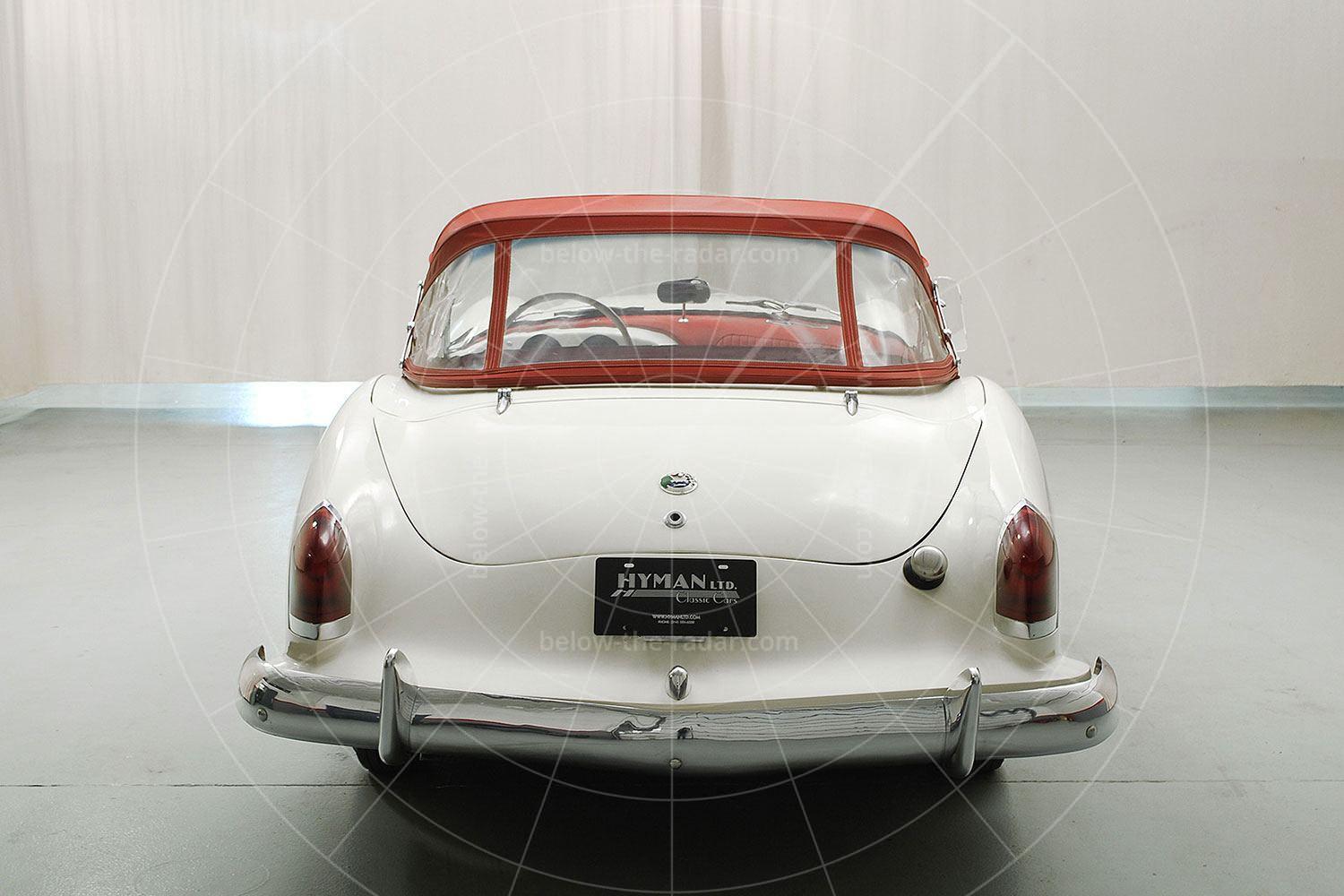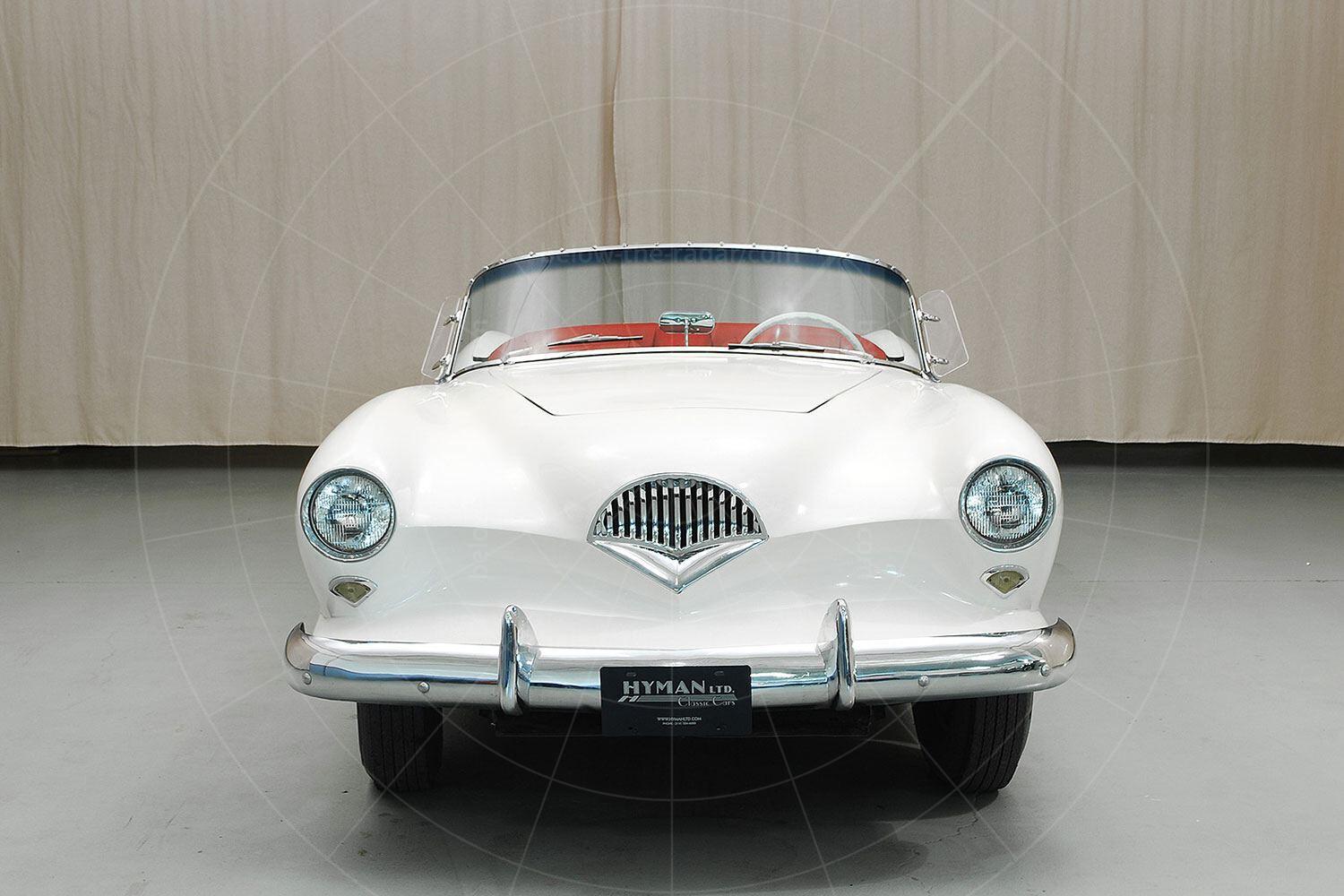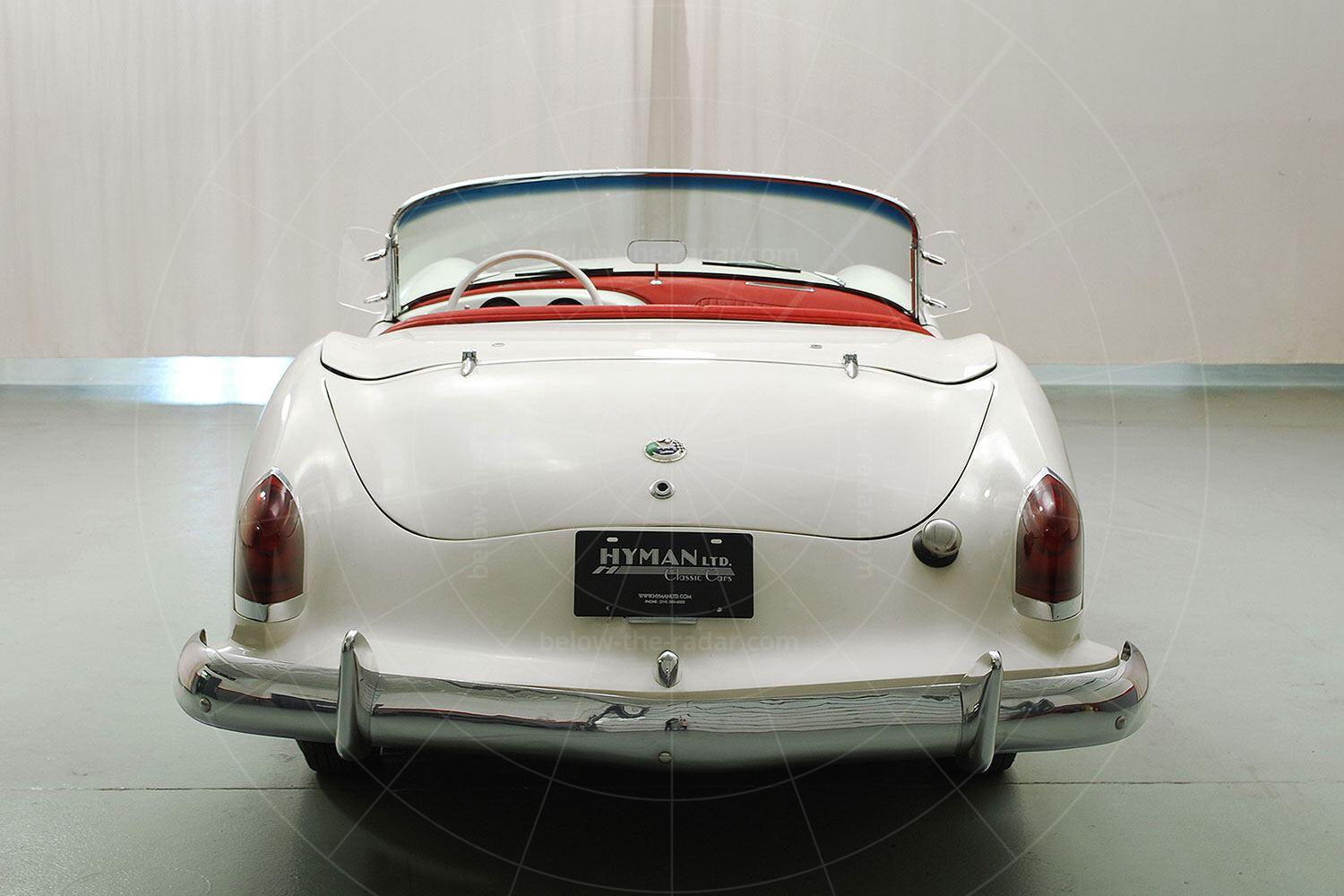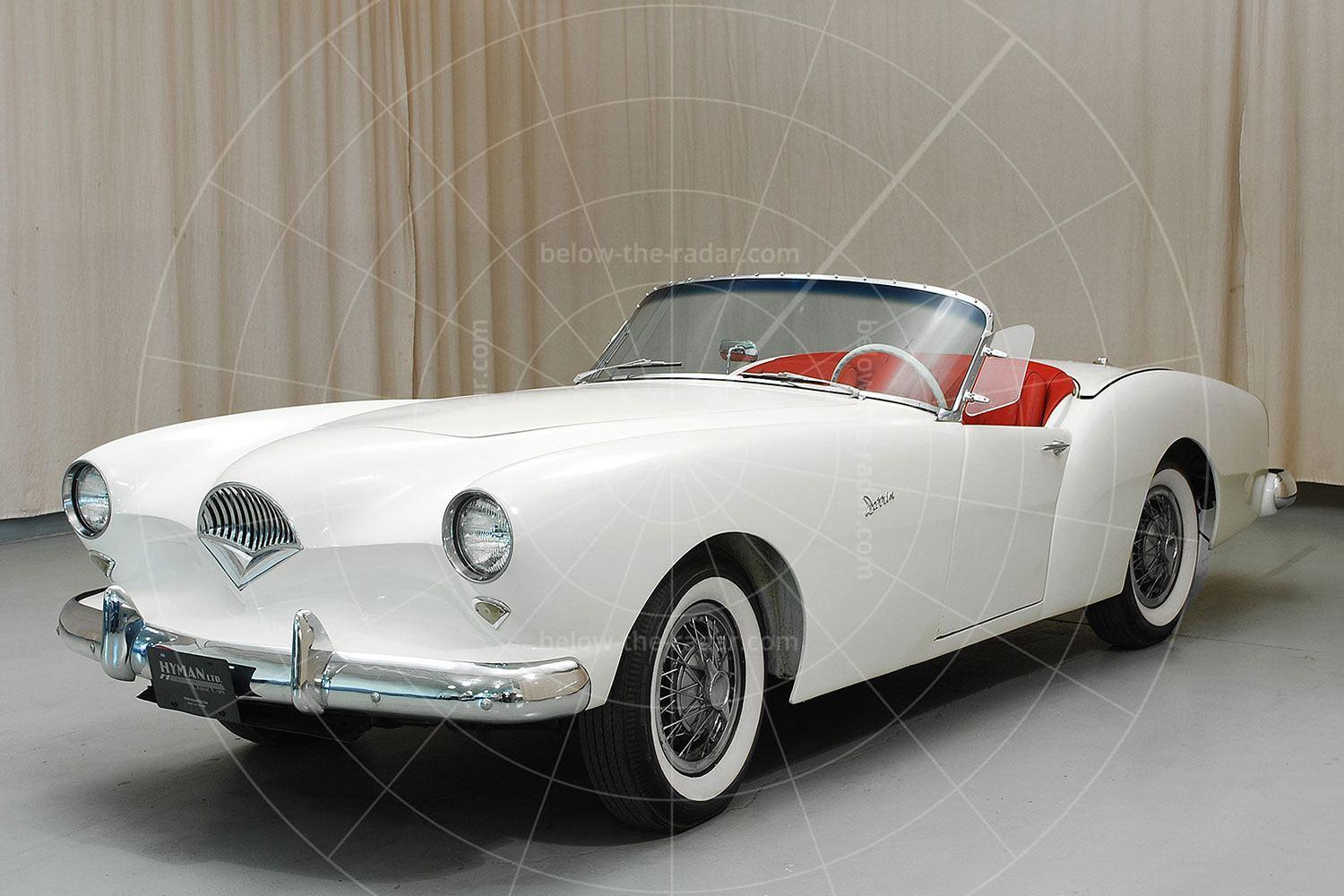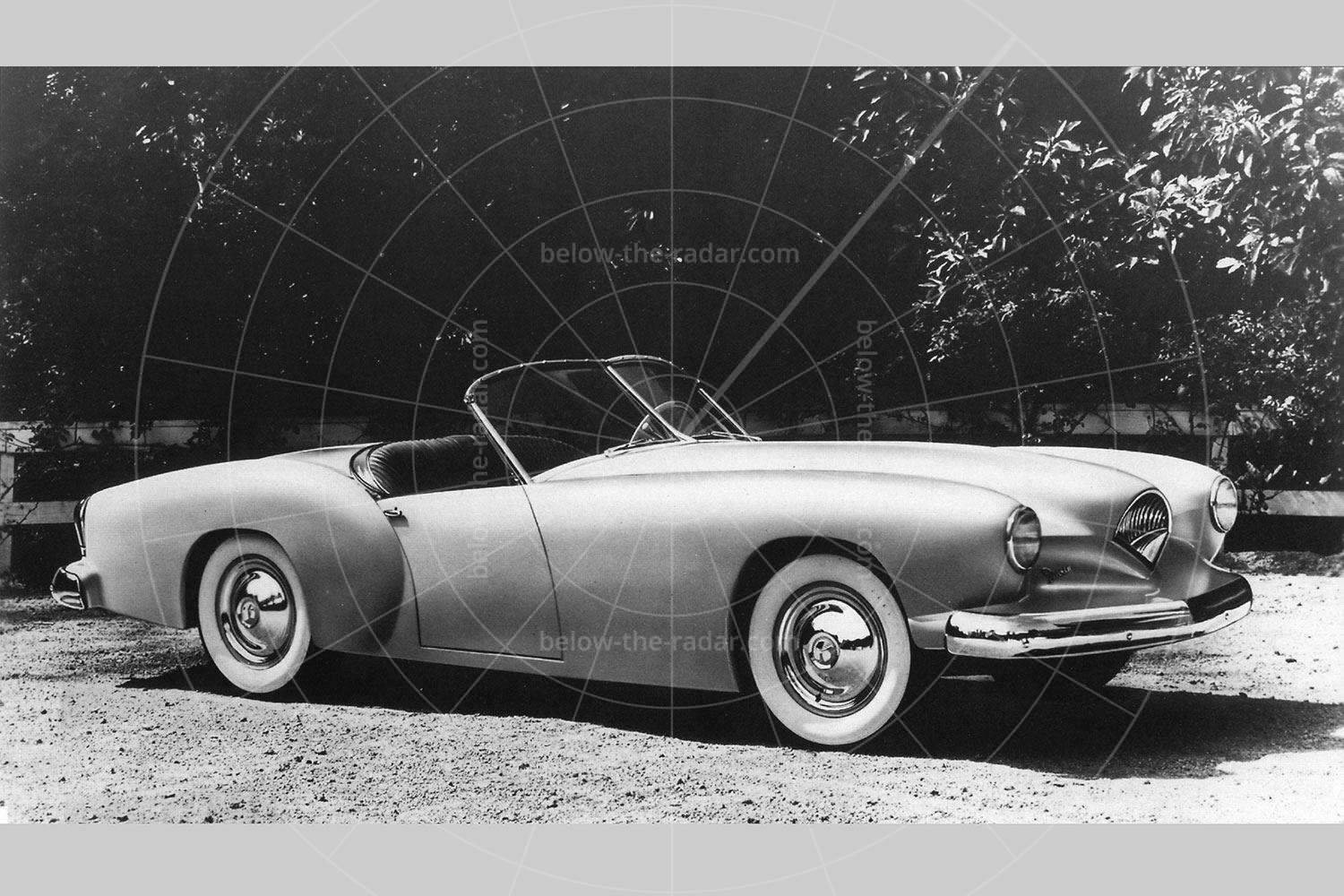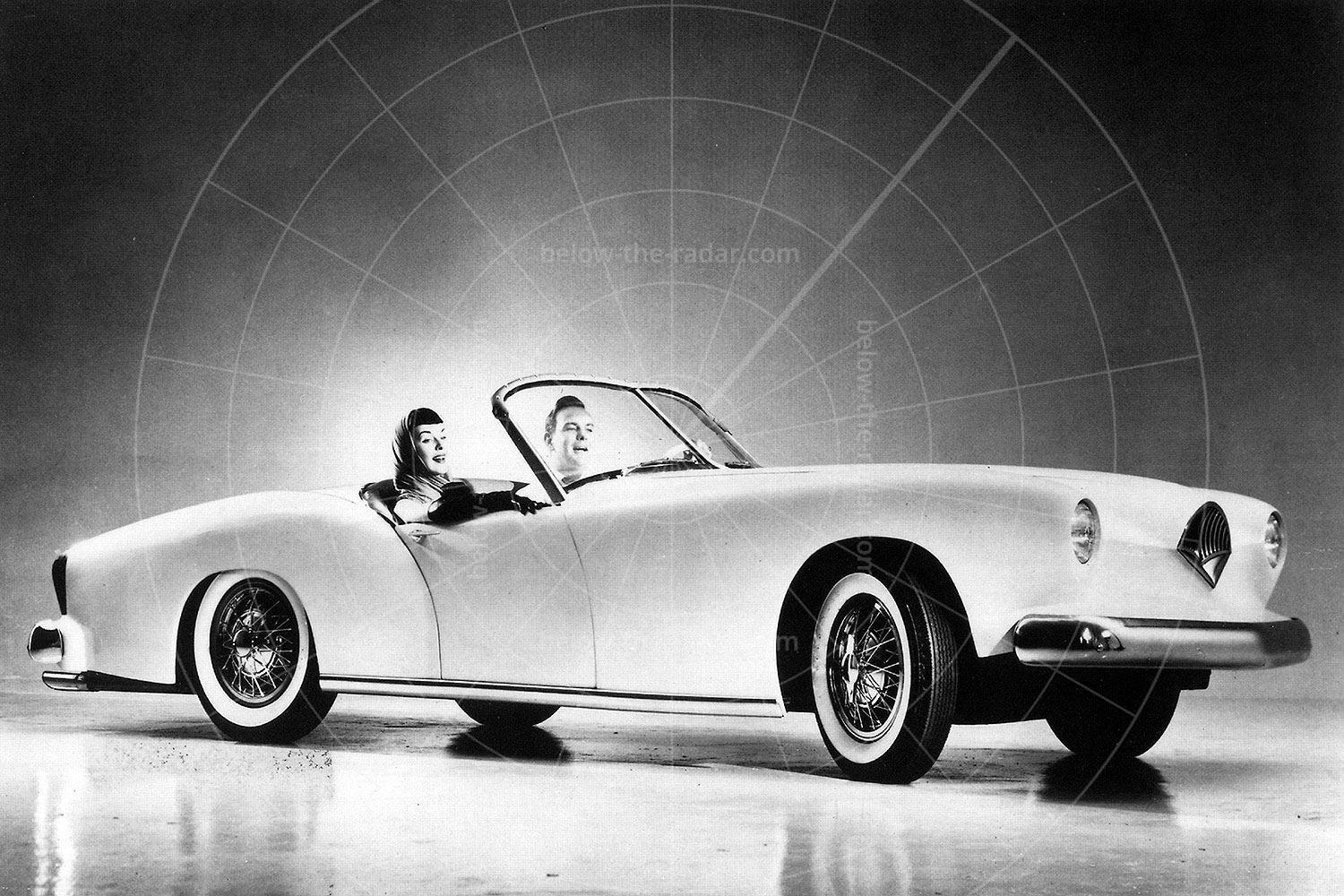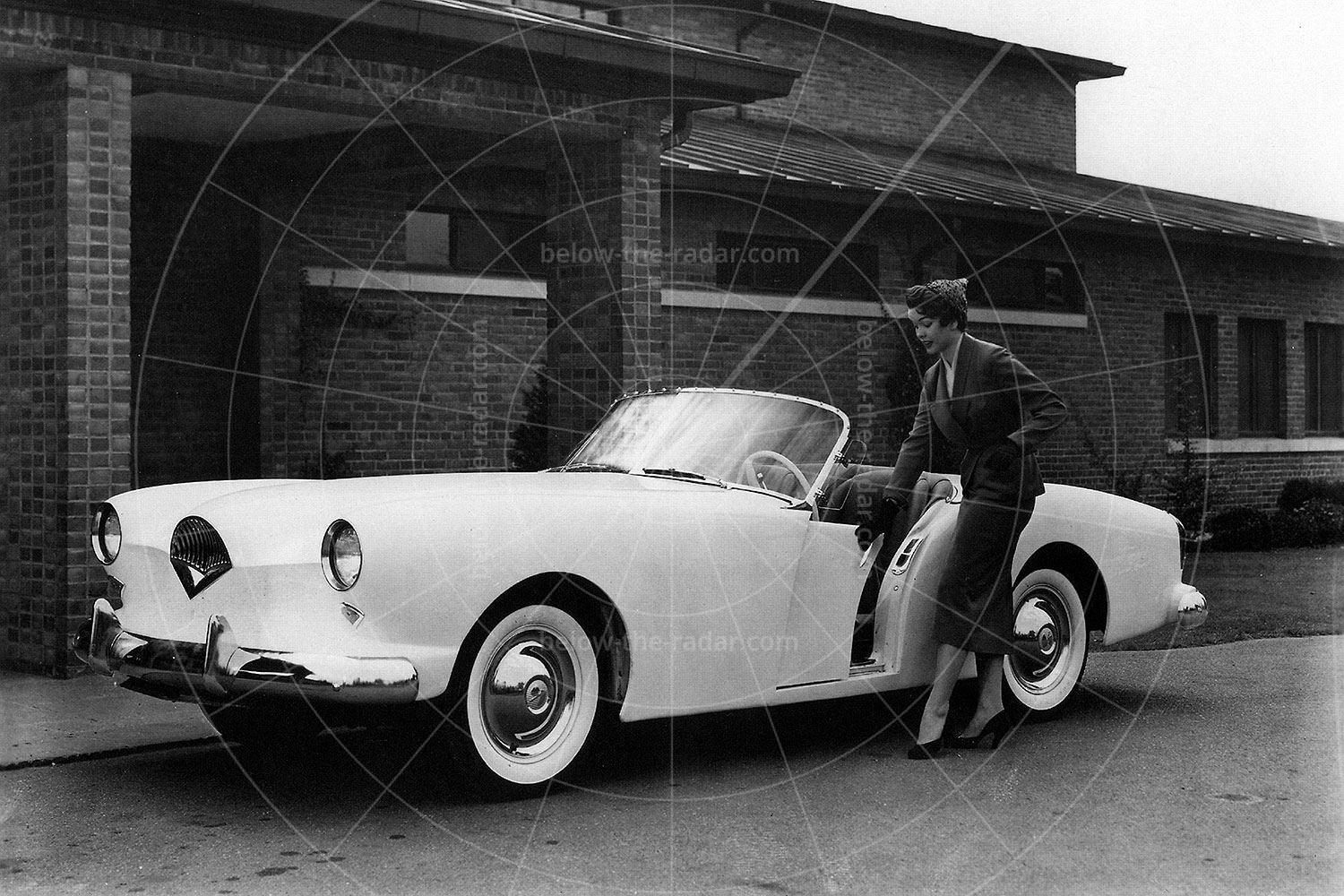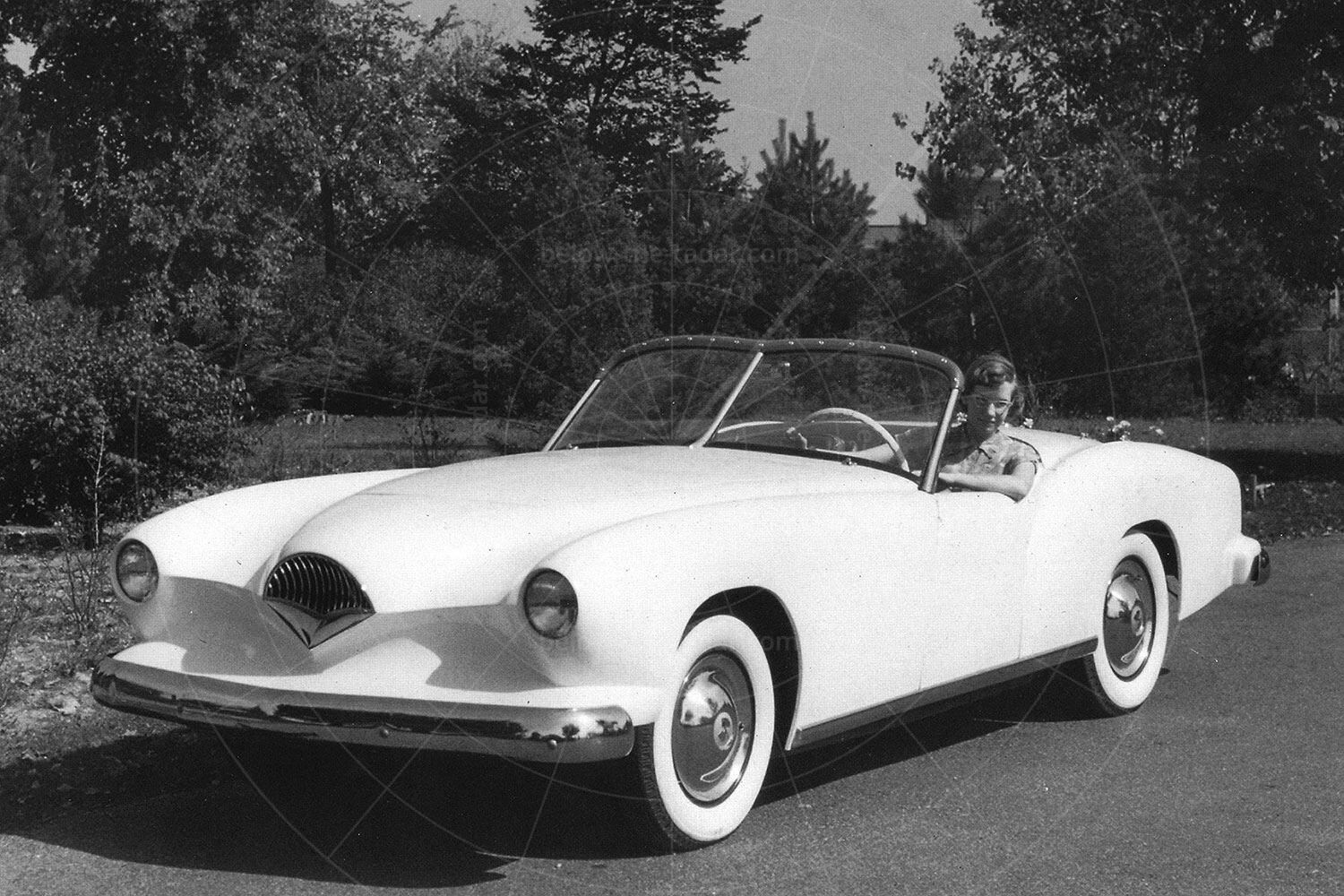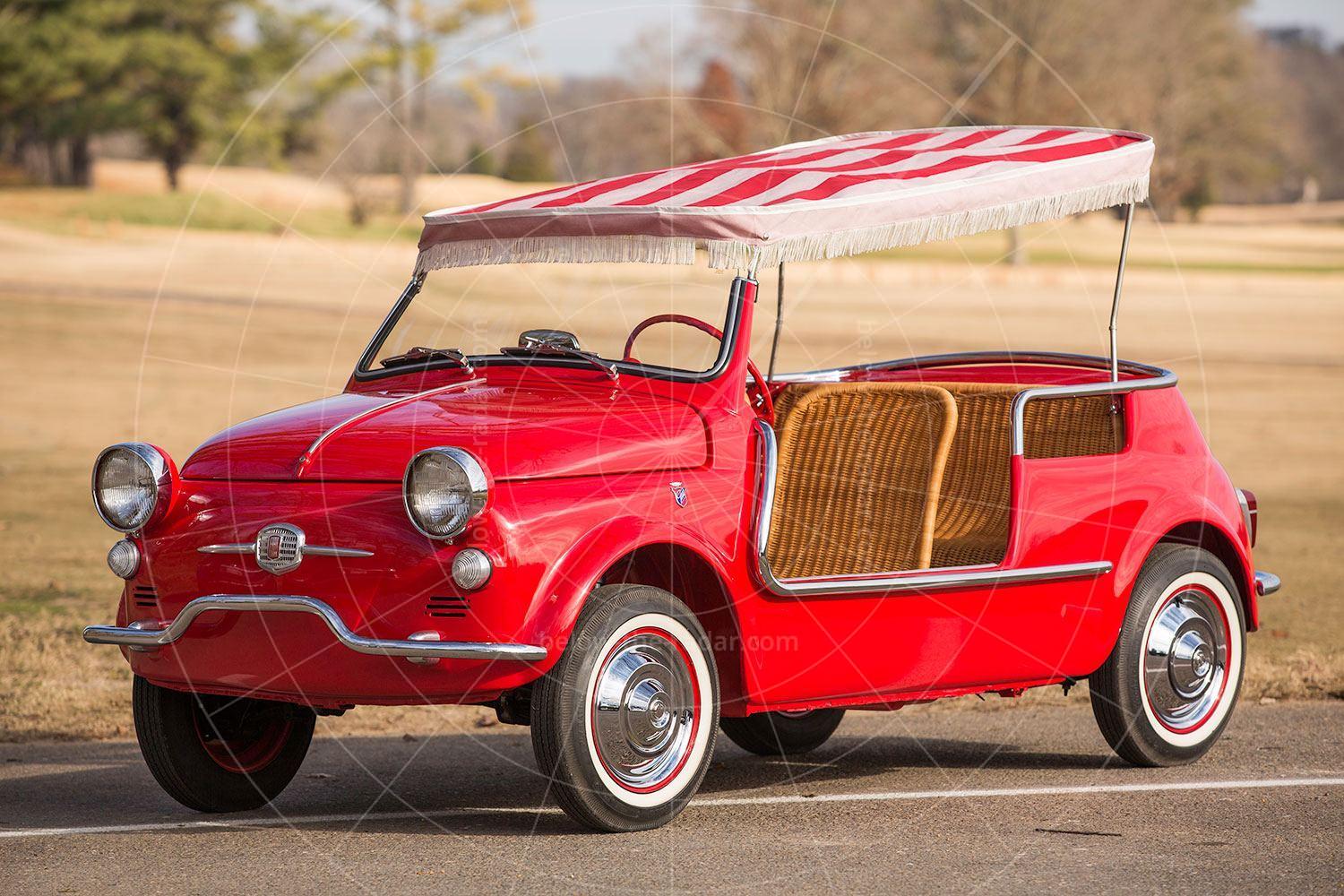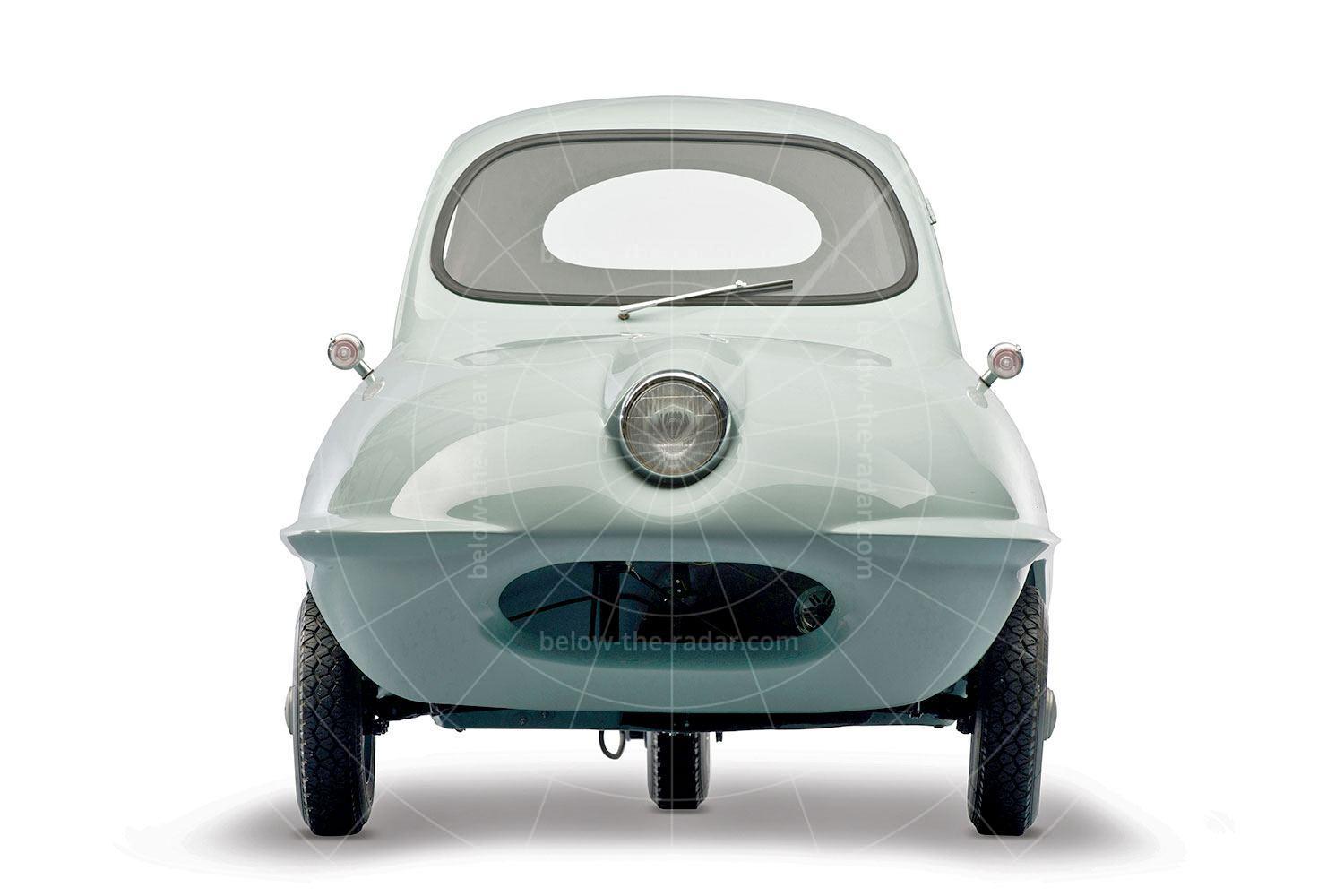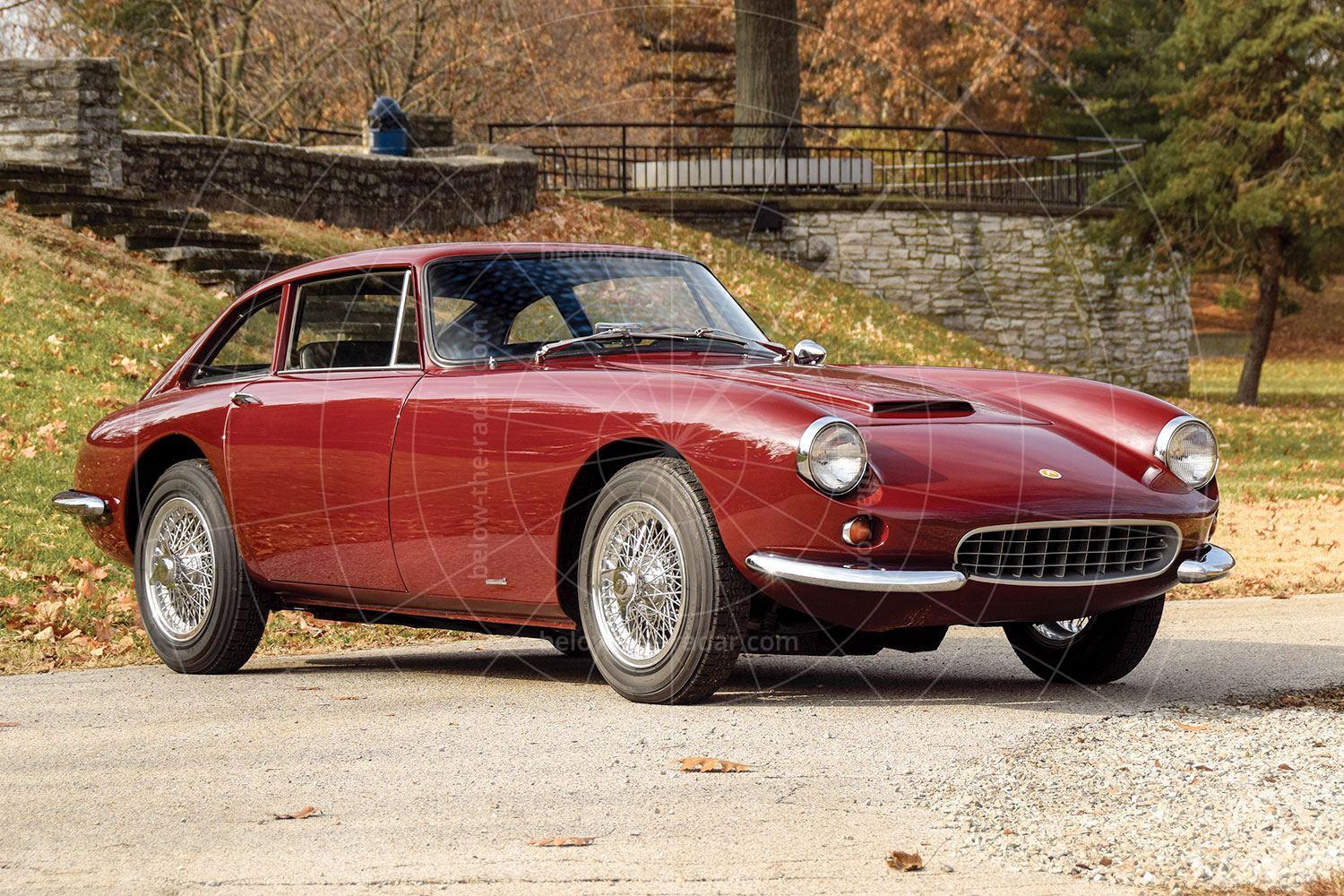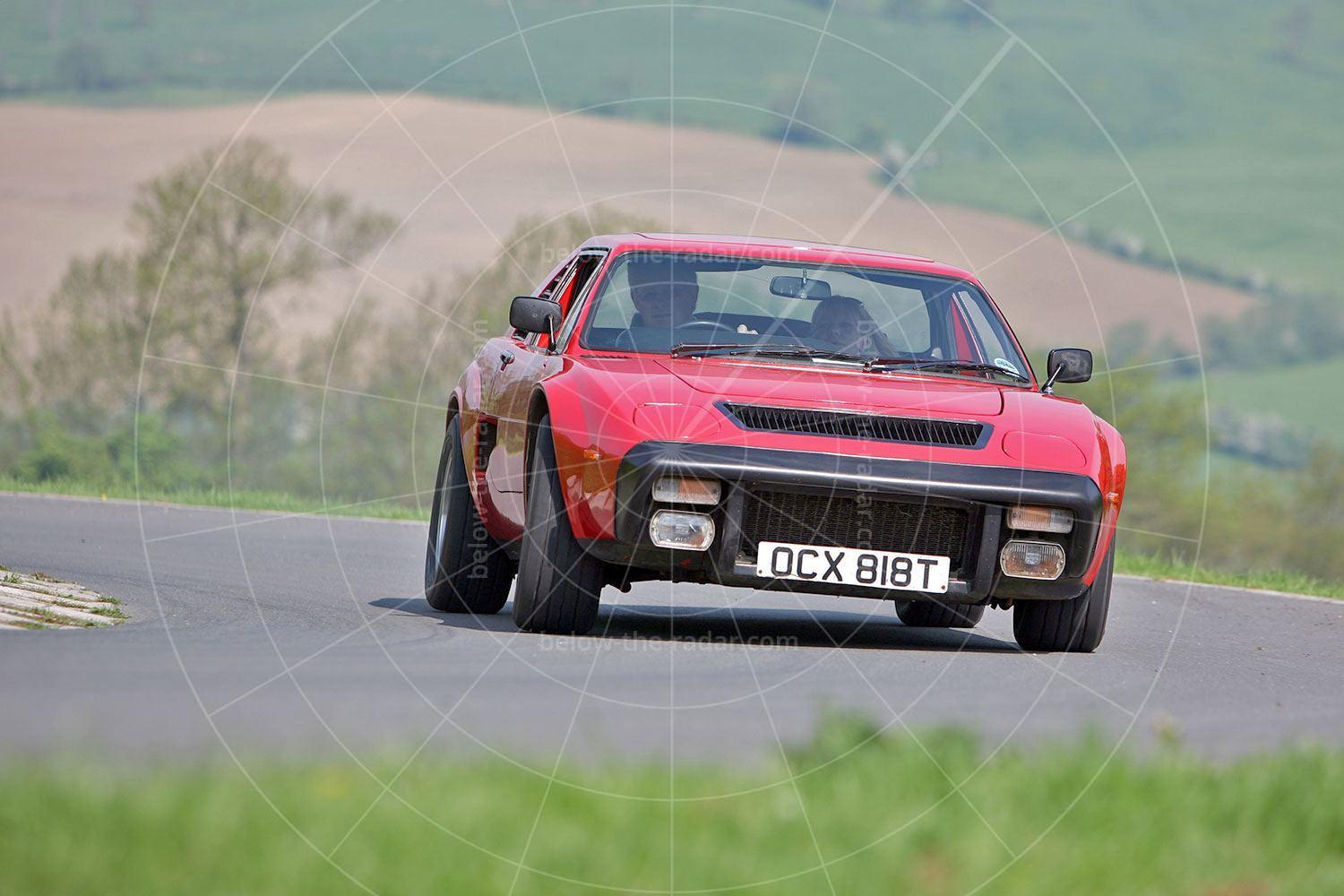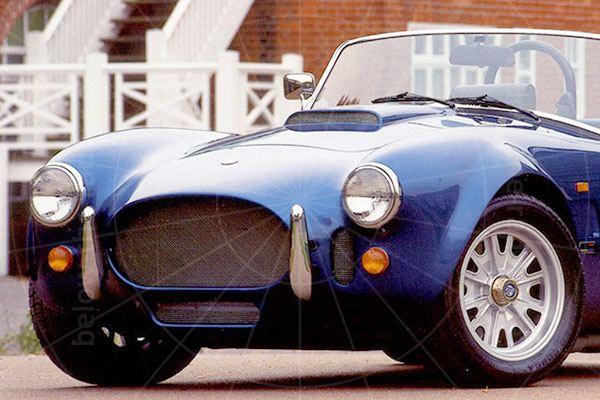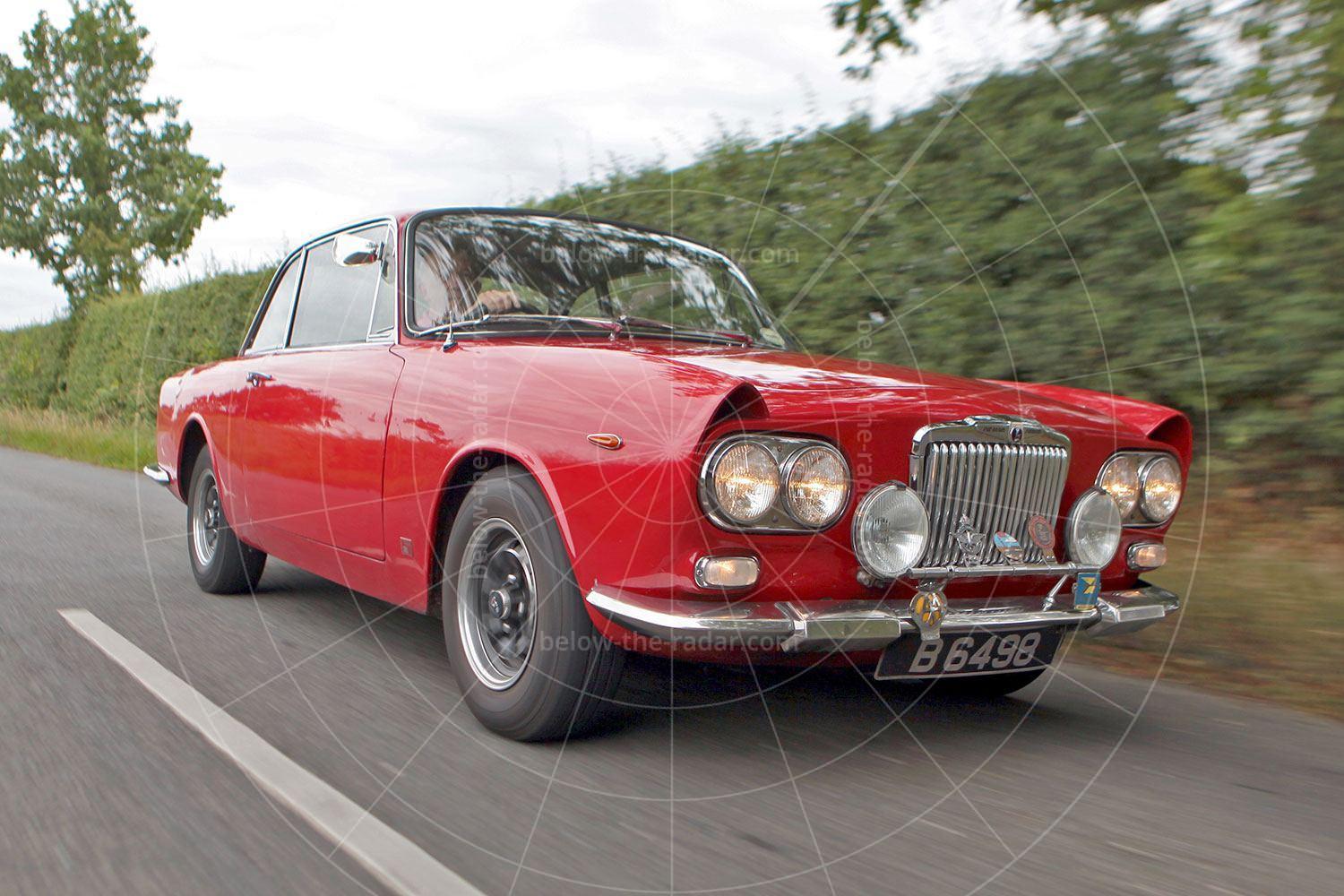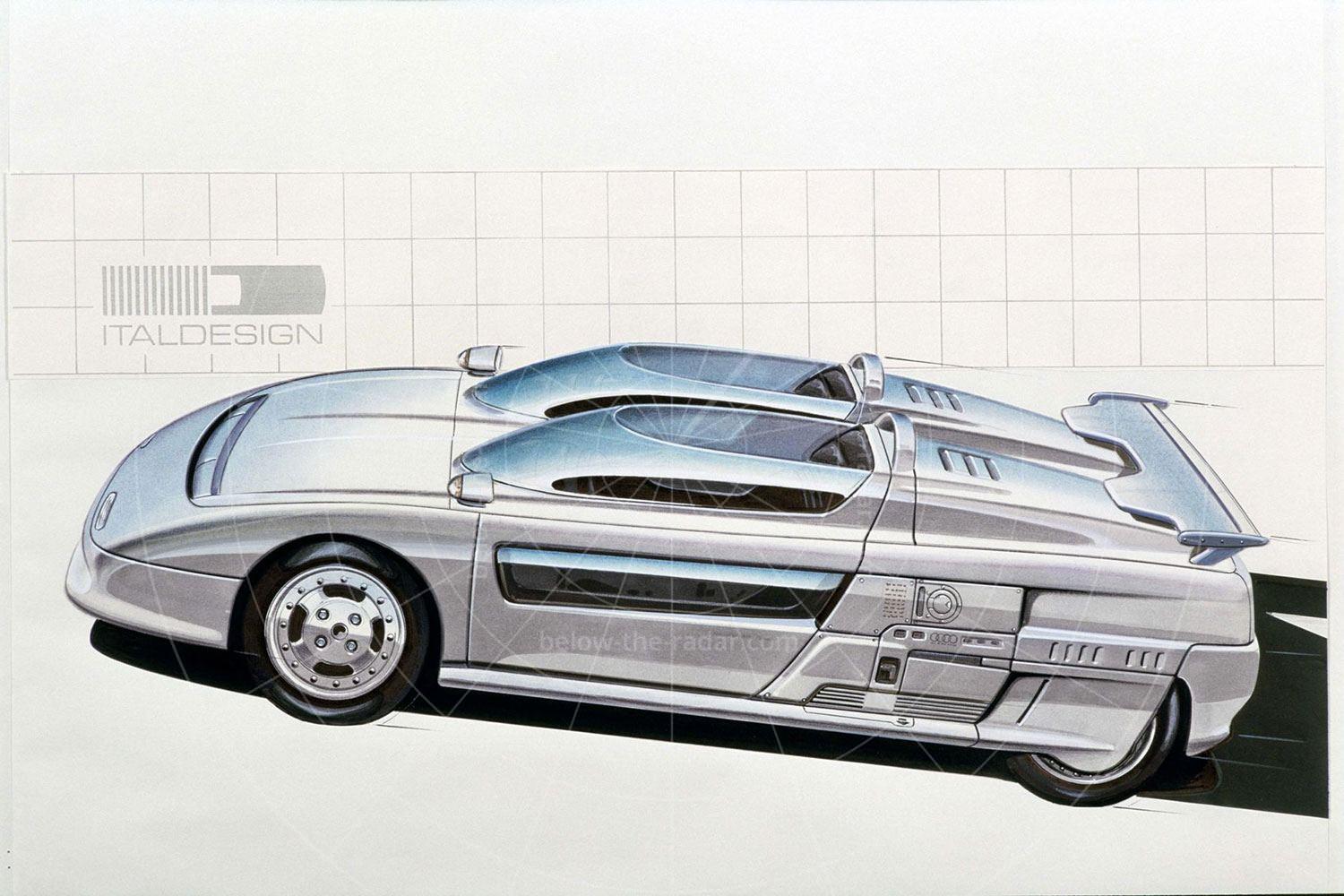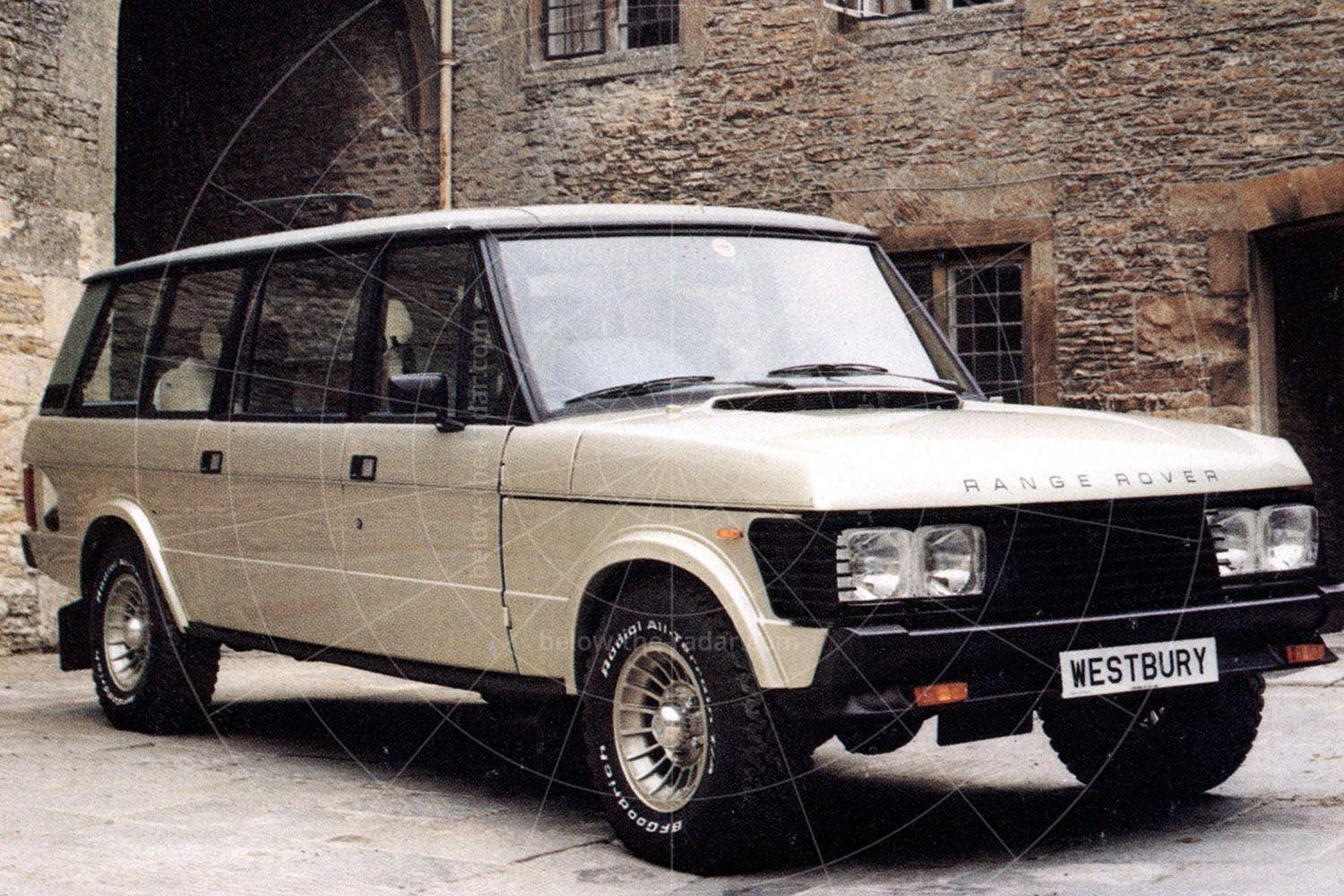Henry J Kaiser (1882-1967) was an American industrialist who made his fortune in constructing roads and buildings, before then moving into shipbuilding. In 1945 Kaiser formed a partnership with Joseph Frazer, president of struggling car maker Graham-Paige, which resulted in the formation of Kaiser-Frazer. With Kaiser-Frazer struggling as the forties became the fifties, by 1951 Frazer had left the company, leading to it being rebranded Kaiser Motors – with another new name (Kaiser-Willys Corporation) taking over in 1953, as a result of Henry J Kaiser buying up the ailing Willys-Overland company. Convoluted enough for you? If not, there's plenty more detail that I've left out…
In the years after World War II, America's car manufacturers quickly saw the value of adding a sporting model to their regular line-up. Sports cars were gaining in popularity rapidly, but none of America's car makers had the time or resources to develop such models from scratch, to compete with the ever-increasing number of European imports. Ford and GM started to work on their own sports cars, based on existing passenger car platforms. Performance took a back seat to style, as these new cars were meant more as image enhancers to boost showroom traffic.
Heading up Kaiser-Frazer's design studio in the post-war years was Howard 'Dutch' Darrin, who had formed a coachbuilding company in Paris in 1923, with designer Thomas Hibbard; both men were American. The Great Depression hit the two very hard and in 1931 Darrin took a design position with General Motors, working under Harley Earl. By 1946 Darrin was working for Kaiser-Frazer as a design consultant, but the company was very conservative with its designs and chose to disregard Darrin's input, which is why he worked for Kaiser-Frazer for just a few months before walking out. Just two years later Darrin was back again, but history repeated itself and this time he left the company for good.
Darrin was known for being difficult and despite his rocky history with Kaiser and Frazer, he took it upon himself to design a sports car for the Kaiser Corporation, based on the chassis of the compact Henry J. saloon that had been introduced in 1950. In early 1952 Darrin made a mock-up out of clay which he then commissioned Bill Tritt to turn into a running prototype. Tritt had only recently set up Glasspar, to kick-start the glassfibre car industry with its Glasspar G2, which would soon after evolve into the Woodill Wildfire.
Tritt's bodyshell was mated to a Henry J chassis to create a running prototype, which Darrin then invited Kaiser's top brass to view, but his offer was rejected. Darrin persisted and finally a meeting was set, during which the response from Henry Kaiser himself was that his company existed to make family cars, not sports cars. Darrin was certain that his car had potential so he had already decided that if Kaiser wouldn't make it, he would go it alone.
However, Henry Kaiser's younger wife was also in that meeting and she was rather taken by the roadster, proclaiming that it was the most beautiful thing that she had ever seen. She persuaded her husband that his company should put Darrin's plastic-bodied convertible into production and Kaiser relented, going so far as to name the new arrival the Kaiser Darrin.
The first Kaiser Darrin prototype appeared at the Los Angeles Motorama in September 1952. This was an event founded by Hot Rod and Motor Trend publisher Robert E Petersen in 1950 to cater for hot rod and custom car enthusiasts. Public and media response to the Darrin was positive, with the roadster dubbed "the sports car that everyone has been waiting for", and by spring 1953 the production car had been unveiled at the New York Auto Show. The first deliveries were promised for autumn 1953, but production delays pushed this back until the following January, by which point the Chevrolet Corvette was on sale.
Construction of the glassfibre bodyshells was outsourced to California-based Glasspar, while power was courtesy of Kaiser's Hurricane F-head 3.7-litre in-line six which was rated at just 90bhp. There was a choice of manual or automatic transmissions, the former with or without overdrive. Pitched against the Nash-Healey Roadster, the Kaiser Darrin was more of a cruiser than a genuine sports car as its 90bhp engine couldn't quite get it to 100mph, but it struck a decent balance between affordability, usability, driver enjoyment and outright pace. When Motor Life tested the Kaiser Darrin in autumn 1954 it stated:
The Kaiser 'sports' car is really that, except in the true competition sense. As a boulevard cruiser it is ideal. As a competition car it would probably be beaten by the 745cc two-cylinder Dyna-Panhards. It is a two-seat roadster designed for good handling, excellent manoeuvrability and enough performance to stay with, or a little ahead of, today's quite fast stock car traffic. By keeping the weight down to less than 2200lb, Mr Darrin and Mr Kaiser have been able to consider the F-Head Willys engine as the powerplant and with that set-up and standard transmission, the K-D will move out briskly, and set a difficult pace for cars which are attempting to keep up.
The doors are an innovation in design, as they slide in and out of the fender wells along the car's sides. The doors snap into place with an overhead hook type of lock and no provision has been made for opening the doors from the inside. Directly behind the seat, the plastic roof folds into a recess which is covered by a fiberglass lid. This top arrangement, because of its complexity, should be a sales deterrent to many would-be buyers. Erection of the top is time-consuming, difficult and not conducive to getting out of the rain rapidly.
The complete procedure calls for unlocking the trunk, yanking a handle which releases the top lid, rushing forward and pulling the top lid up, in the meantime allowing the trunk lid (which has no prop) to fall back into place. Should you miss this, the procedure has to be repeated. The plastic top is then unfolded, the thin chrome landau bars are locked into place and utilized to tighten the tension of the top. By this time the top is in a true coupé de ville position, but neither the front nor back have yet been secured. The back fastens down, from inside the cockpit, by three turn screws. The front fastens across the windshield with a series of snaps. With that done the driver-operator then inserts the plastic side curtains which come with this windowless roadster.
If a sports car is defined as a vehicle having superior brakes, performance and handling characteristics, then the Kaiser Darrin is very definitely a sports car. The steering, at 2.75 turns lock to lock, is as good as any available on the imported models. The car reacts to direction as fast as an enterprising Hollywood starlet during a screen test, and once performing, is just about as pretty a sight.
The car corners flat, but does have a tendency to lift the inside rear wheel on very tight or hairpin-type turns. At speeds of up to 70mph the car snuggles into the roadbed like a well run-over bottle cap. At speeds over 70 a vibration is set up in the chassis which is transmitted to the fiberglass body and the cockpit. By 90mph the vibration is almost unbearably uncomfortable. There is also a slight tendency at high speeds for the car to 'post' up and down of its own accord. However, around town and at all normal speeds, the ride is smoother than the conventional Detroit sedan and only the sight of the long hood stretching ahead and the lowness to the ground make the passenger aware that the vehicle is a sports-type car.
Other magazines came up with much the same conclusions as Motor Life, so the reviews were generally positive over all – not that this did much good. The Kaiser Darrin was costly compared with more mainstream rivals, and it wasn't that quick – although it was well equipped. But it wasn't especially user-friendly as getting in and out via the narrow door openings was a pain, plus the doors could jam and eradicating leaks from the roof was all but impossible. Kaiser also couldn't compete against the marketing might of GM and Ford, and after just 435 Darrins were built (all sold as 1954 models), production was stopped in August 1954.
But the story did not end there as Dutch Darrin was able to secure 50 late-production models that were left unsold at Kaiser’s Willow Run factory. He transported the cars to his Los Angeles showroom where they were refurbished; some had McCullough superchargers fitted to their standard six-cylinder engine while half a dozen were fitted with Cadillac V8 engines and sold as the Darrin Sports Car.
Kaiser-Willys decided to stop producing passenger cars in 1955, to focus exclusively on utility vehicles. The company would be renamed the Kaiser Jeep Corporation in 1963, which in 1970 was sold to American Motors Corporation (AMC, itself the result of a merger between the Nash-Kelvinator Corporation and the Hudson Motor Company in 1954), and in turn in the 1980s AMC would be bailed out by Renault, which then sold AMC to Chrysler, which is how Chrysler came to own the Jeep brand. Again – I've left out much of the detail here in an attempt to keep your head from spinning…
| Vital statistics | |
|---|---|
| Produced | 1954, America |
| Number built | 435 |
| Engine | Front-mounted, 226.2ci (3705cc), 6-cylinder |
| Transmission | 3-speed manual, optional overdrive, rear-wheel drive |
| Power | 90bhp at 4200rpm |
| Torque | 135lb ft at 1600rpm |
| Top speed | 95mph |
| 0-60mph | 16.3 seconds |
| Price | $3668 |
- Both of the cars pictured were sold by Hyman Ltd, to whom thanks are due for the use of the pictures to illustrate this article. The white car was the first ever Kaiser Darrin to be built, chassis #1.

